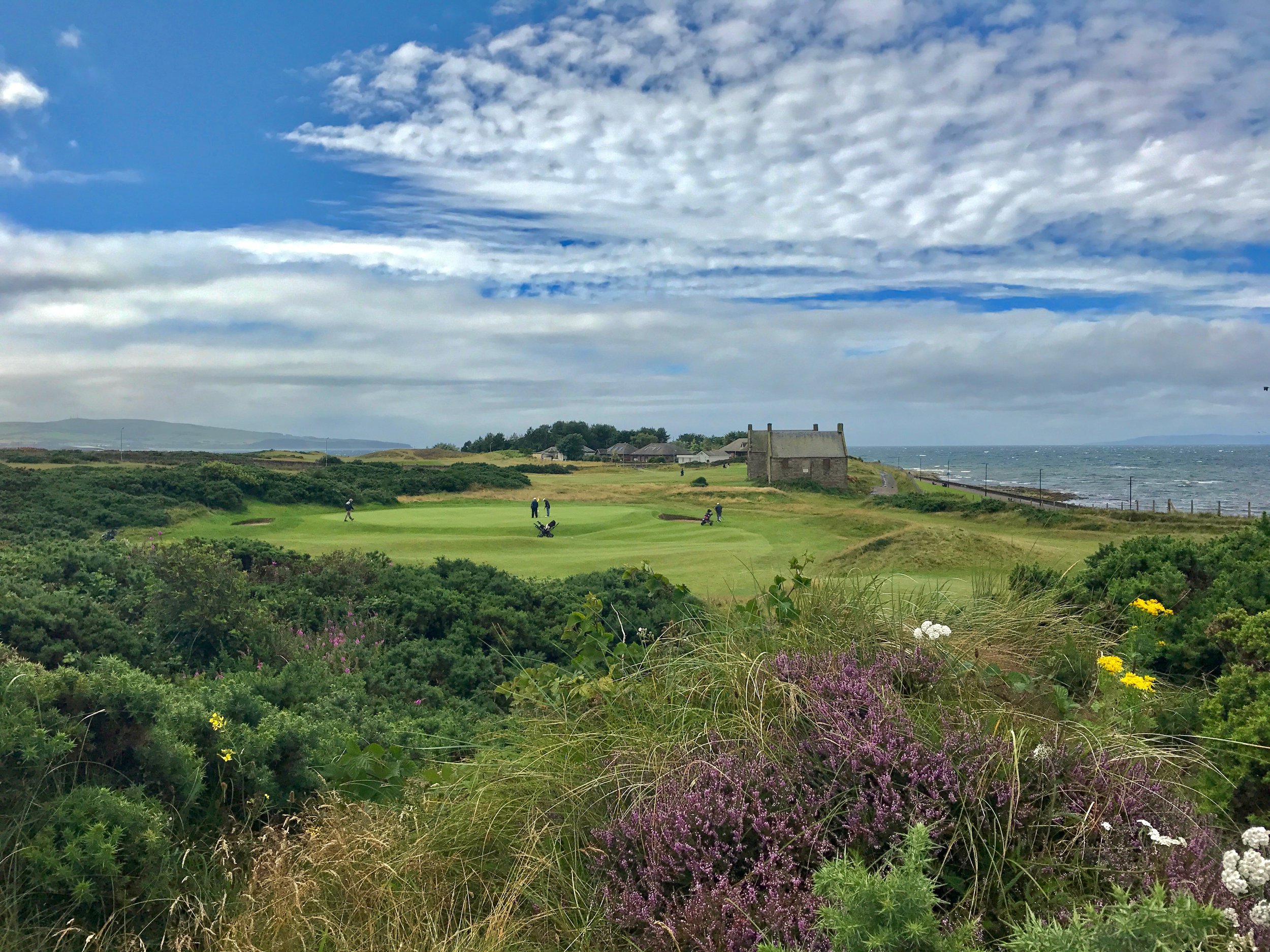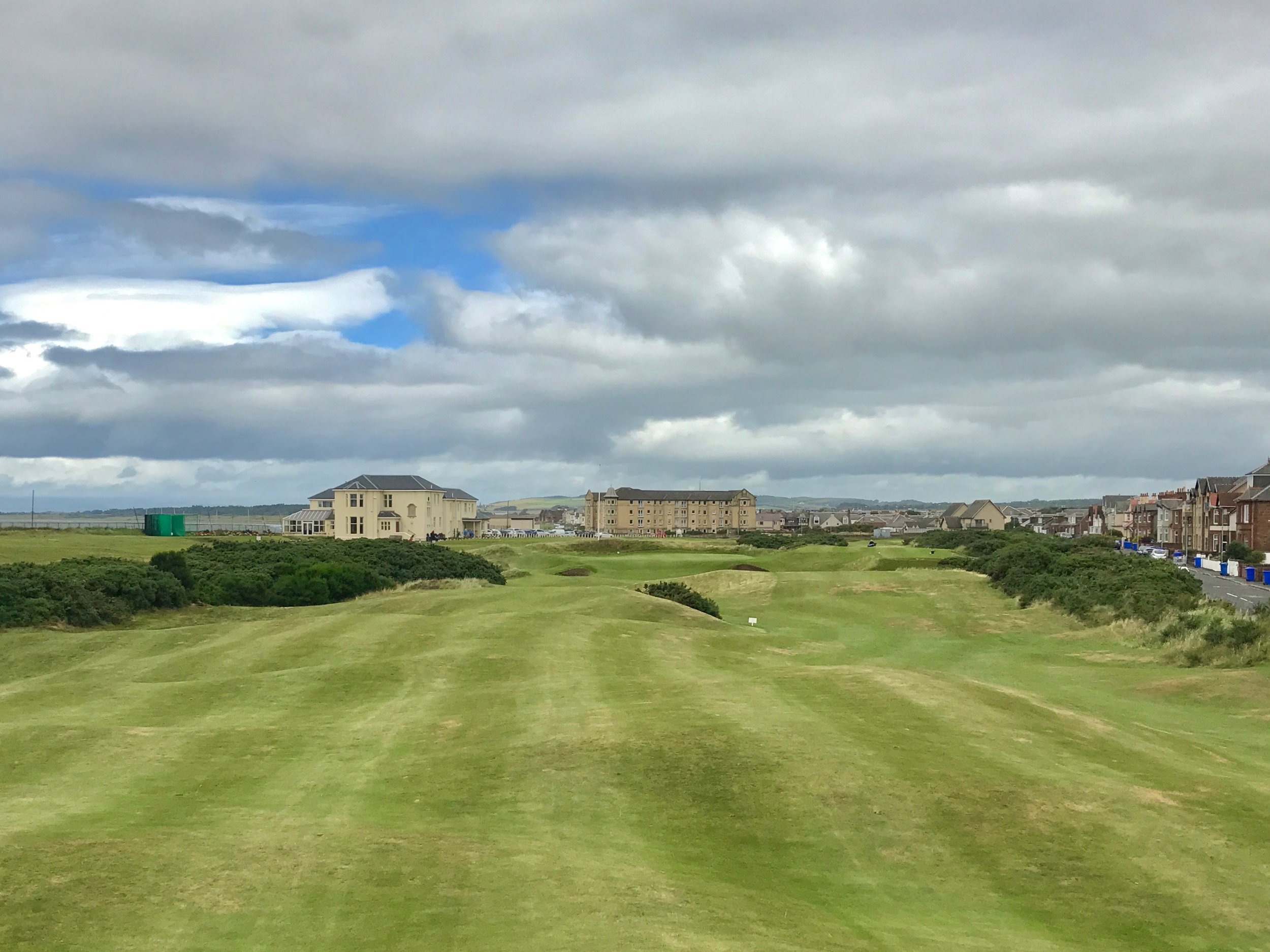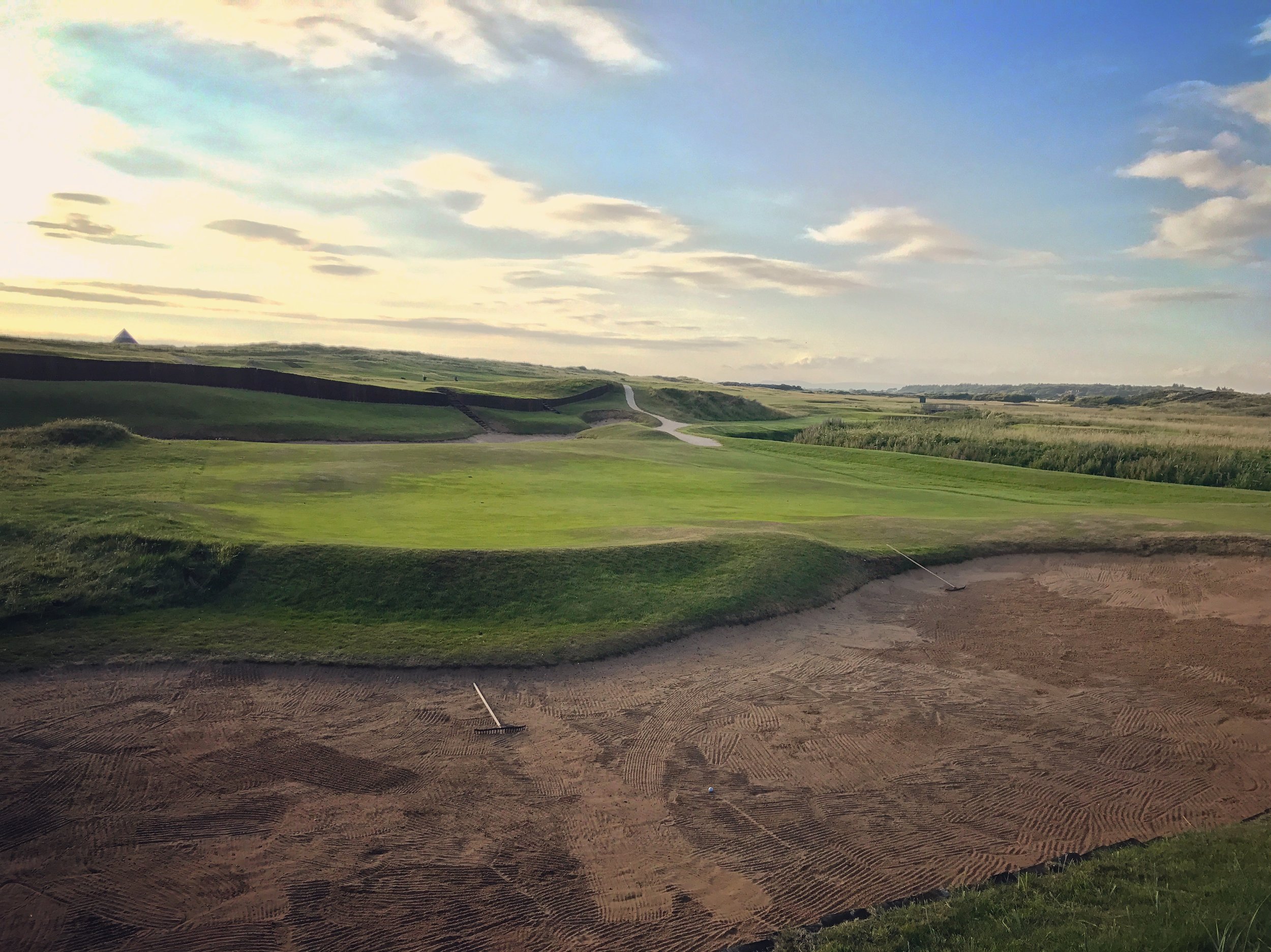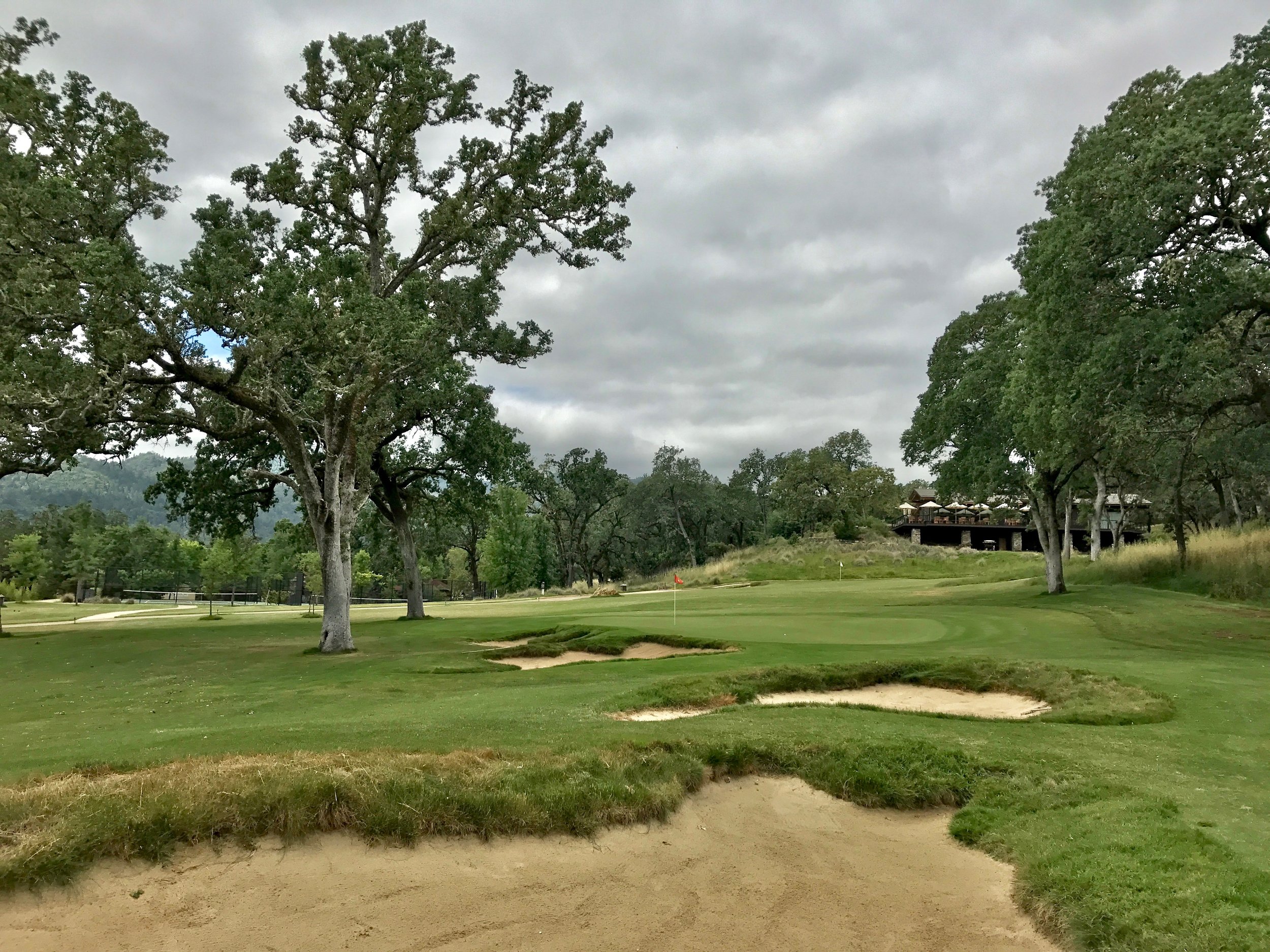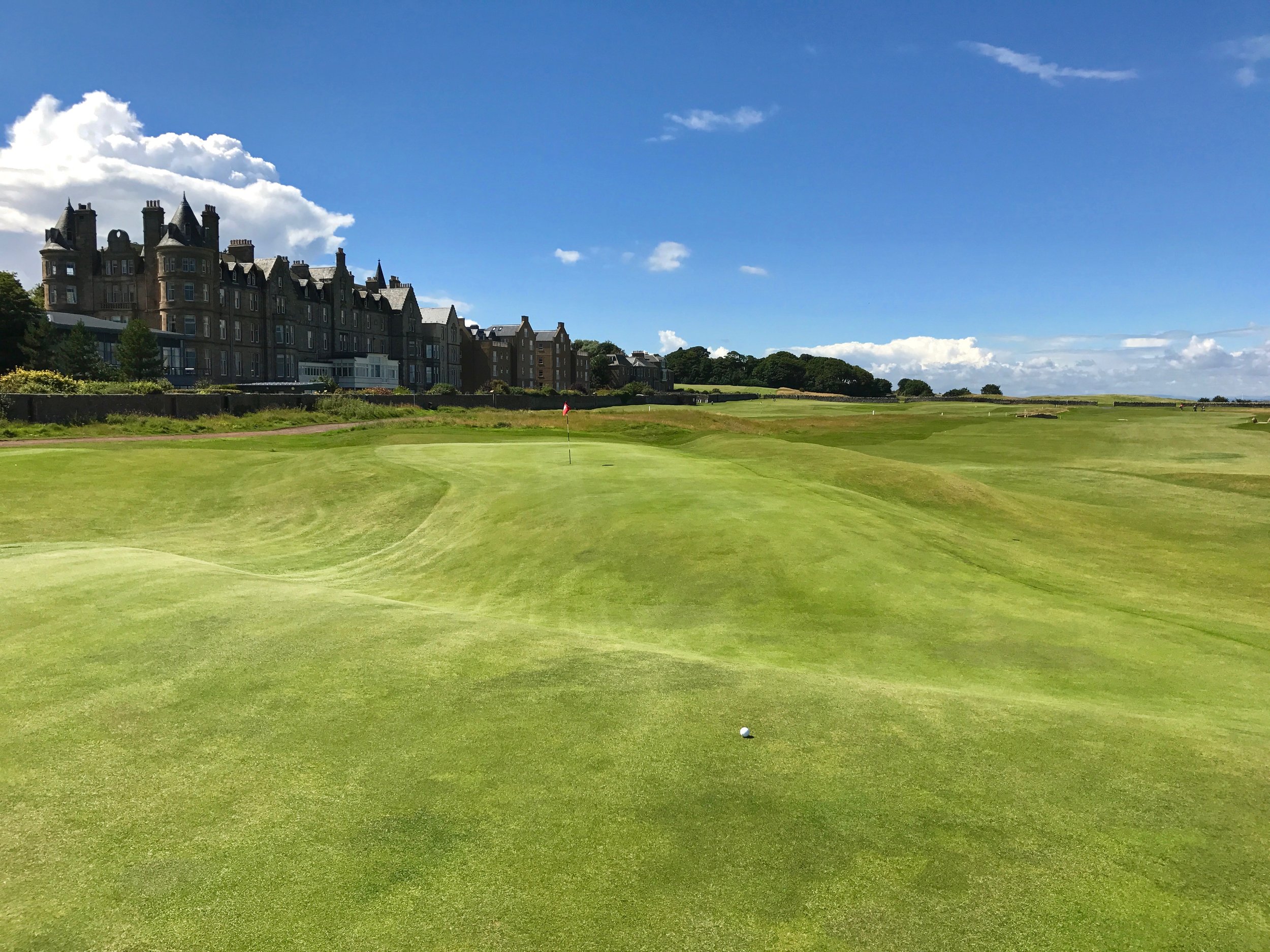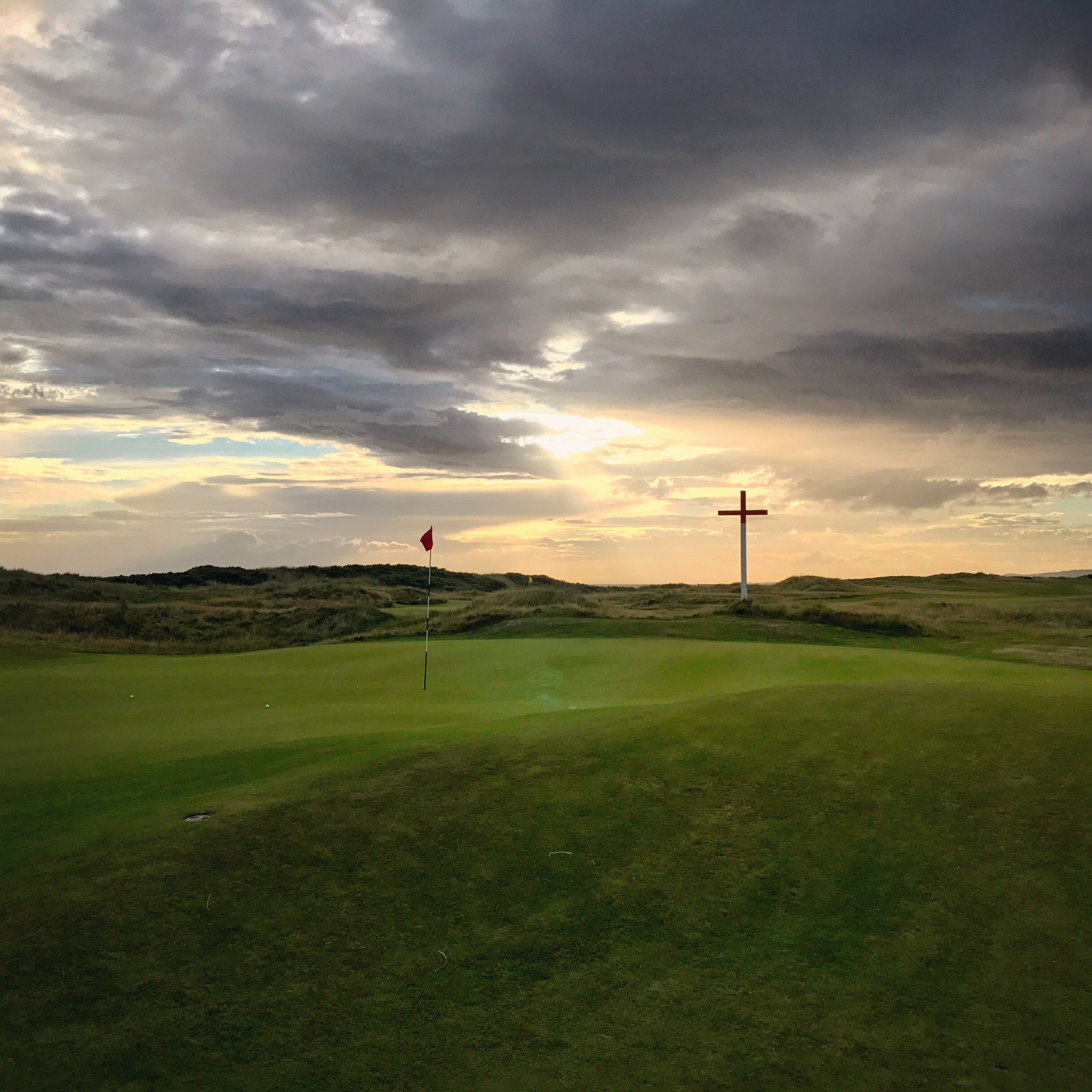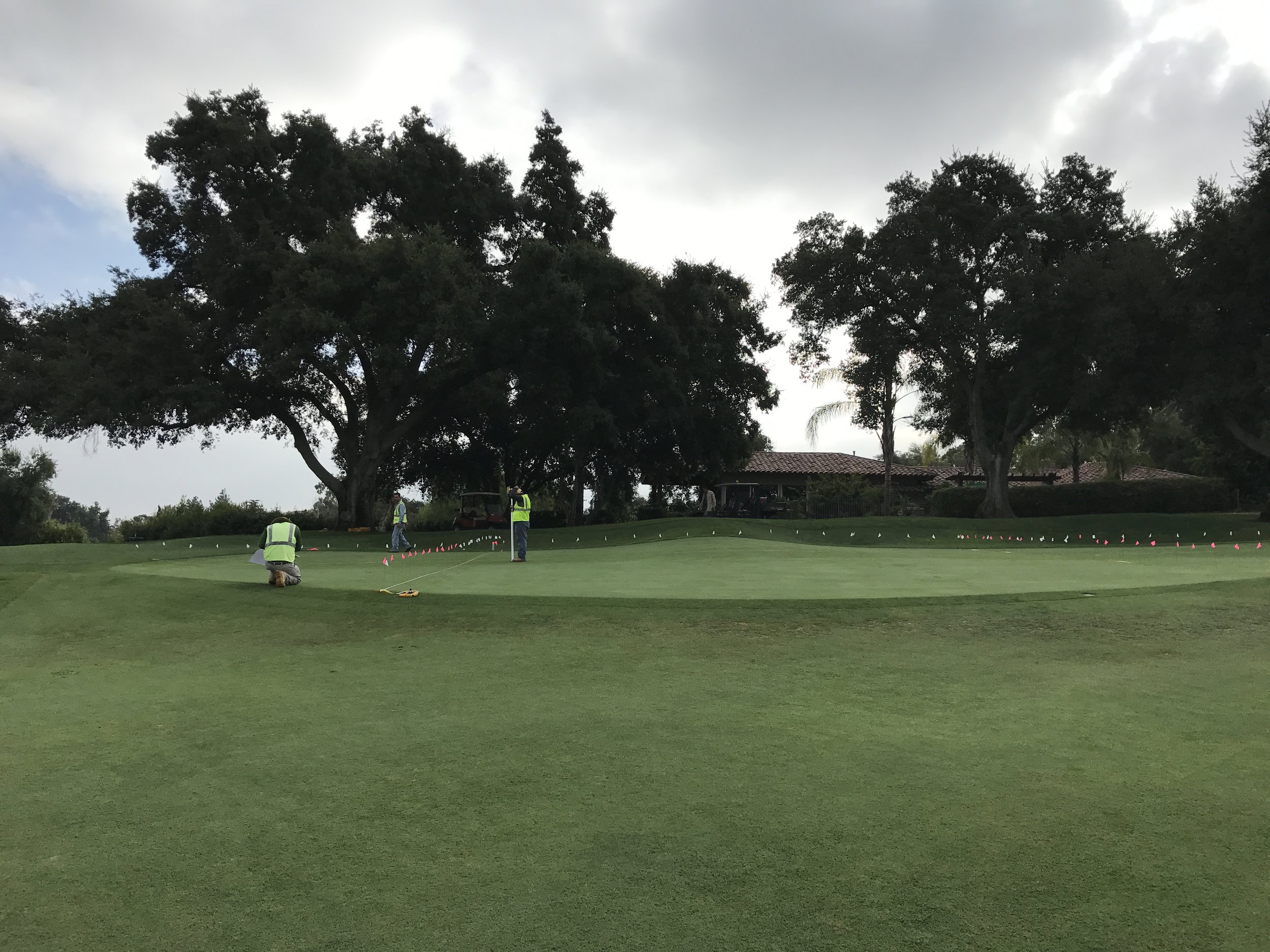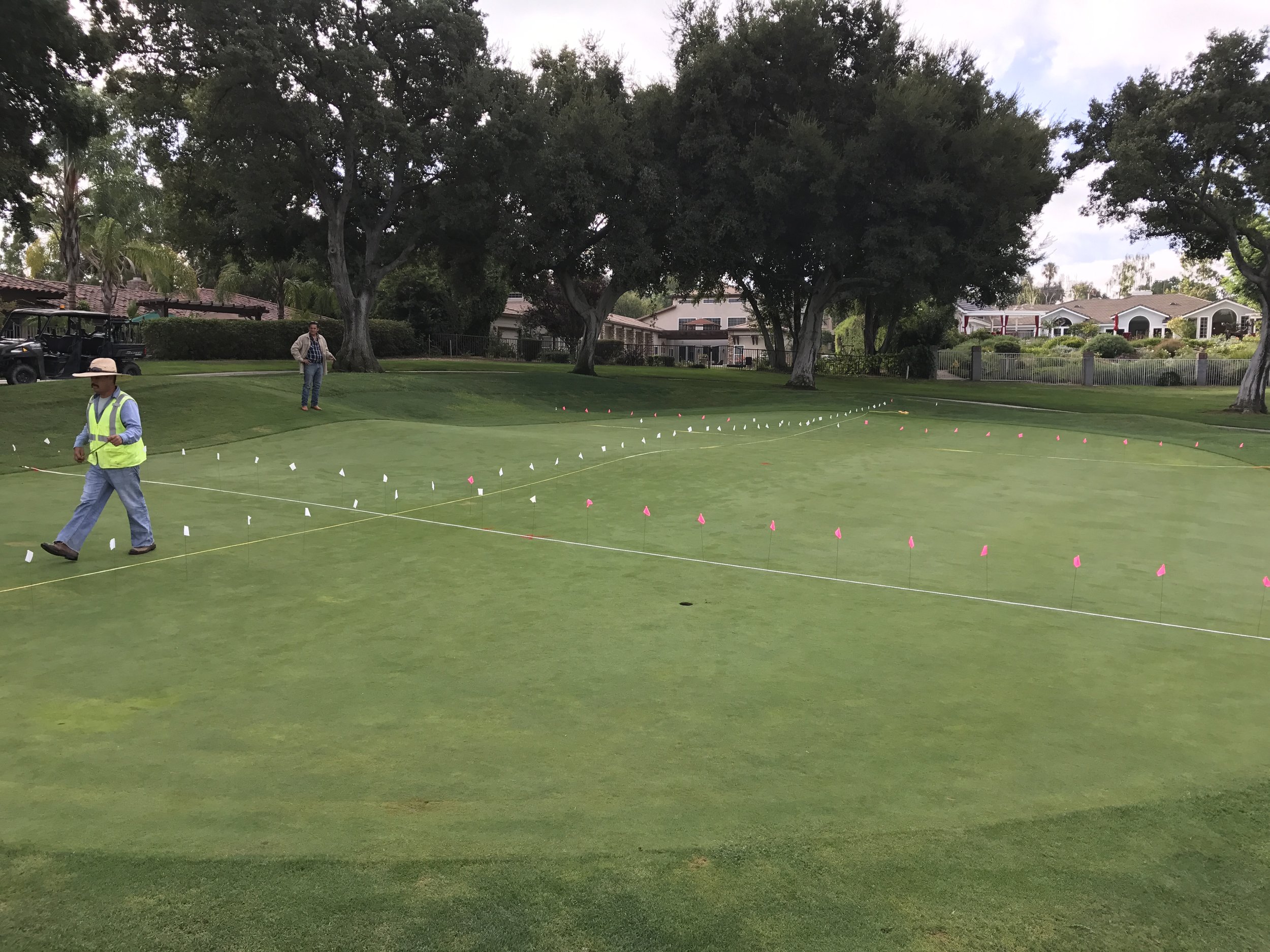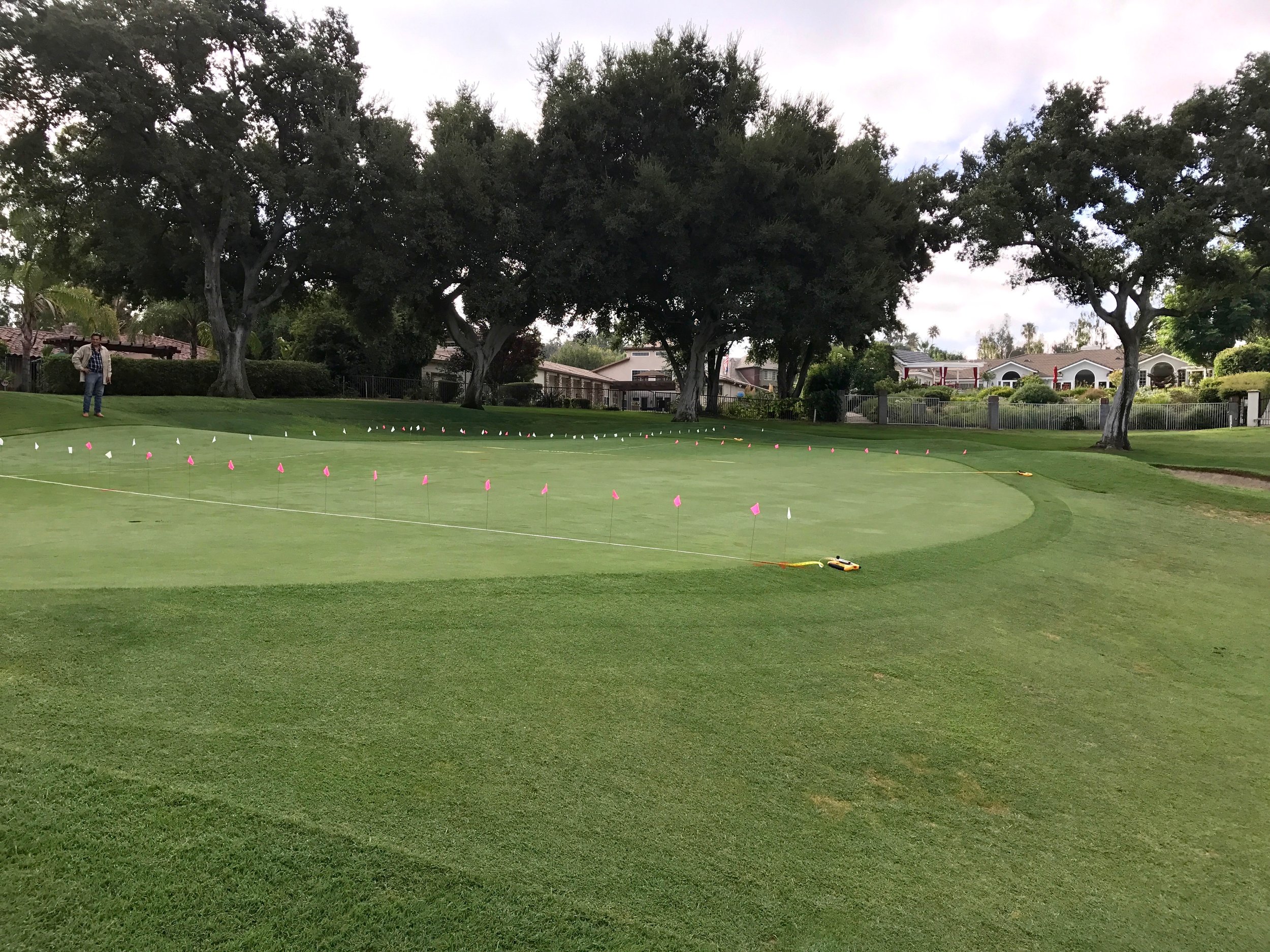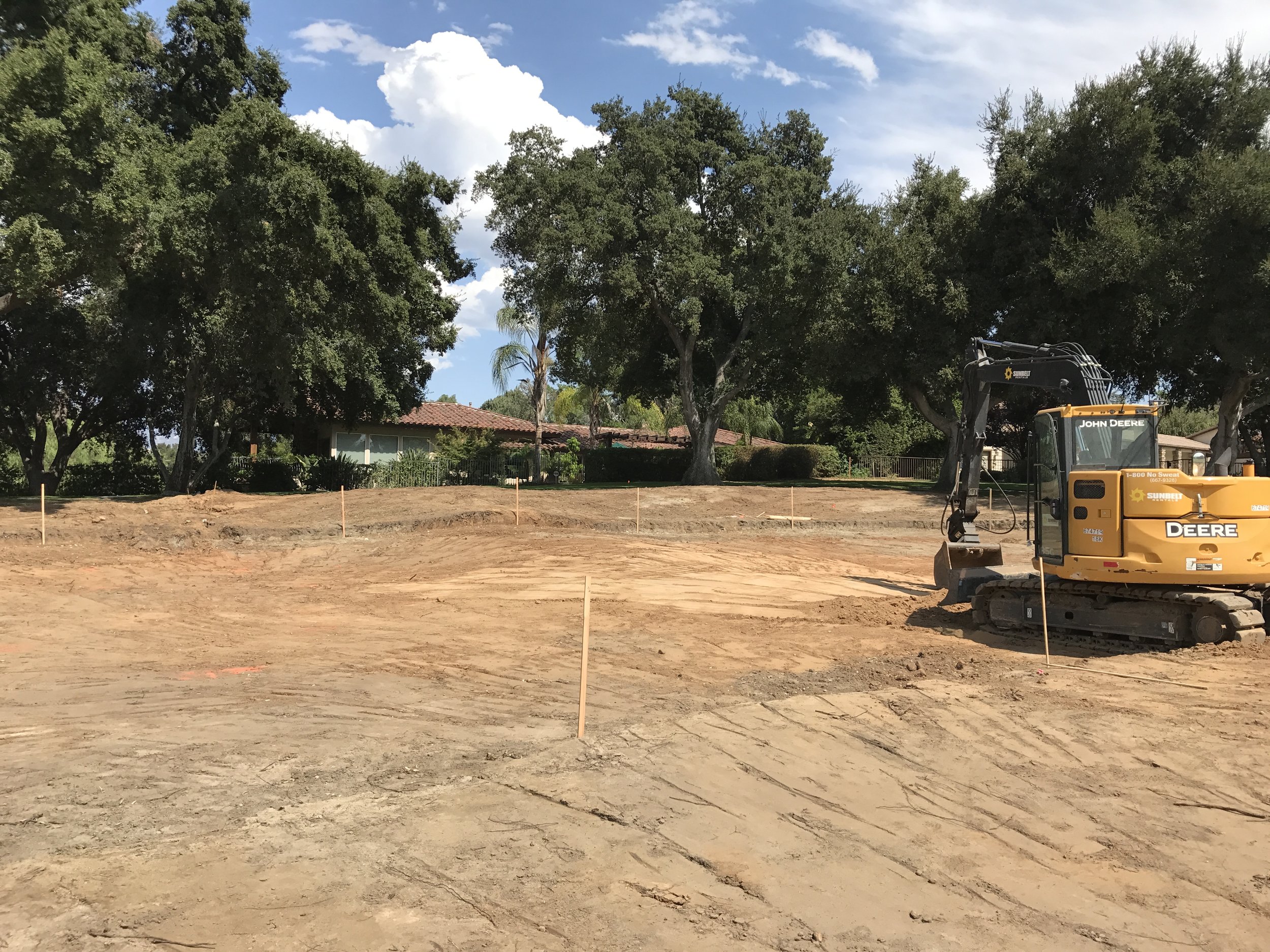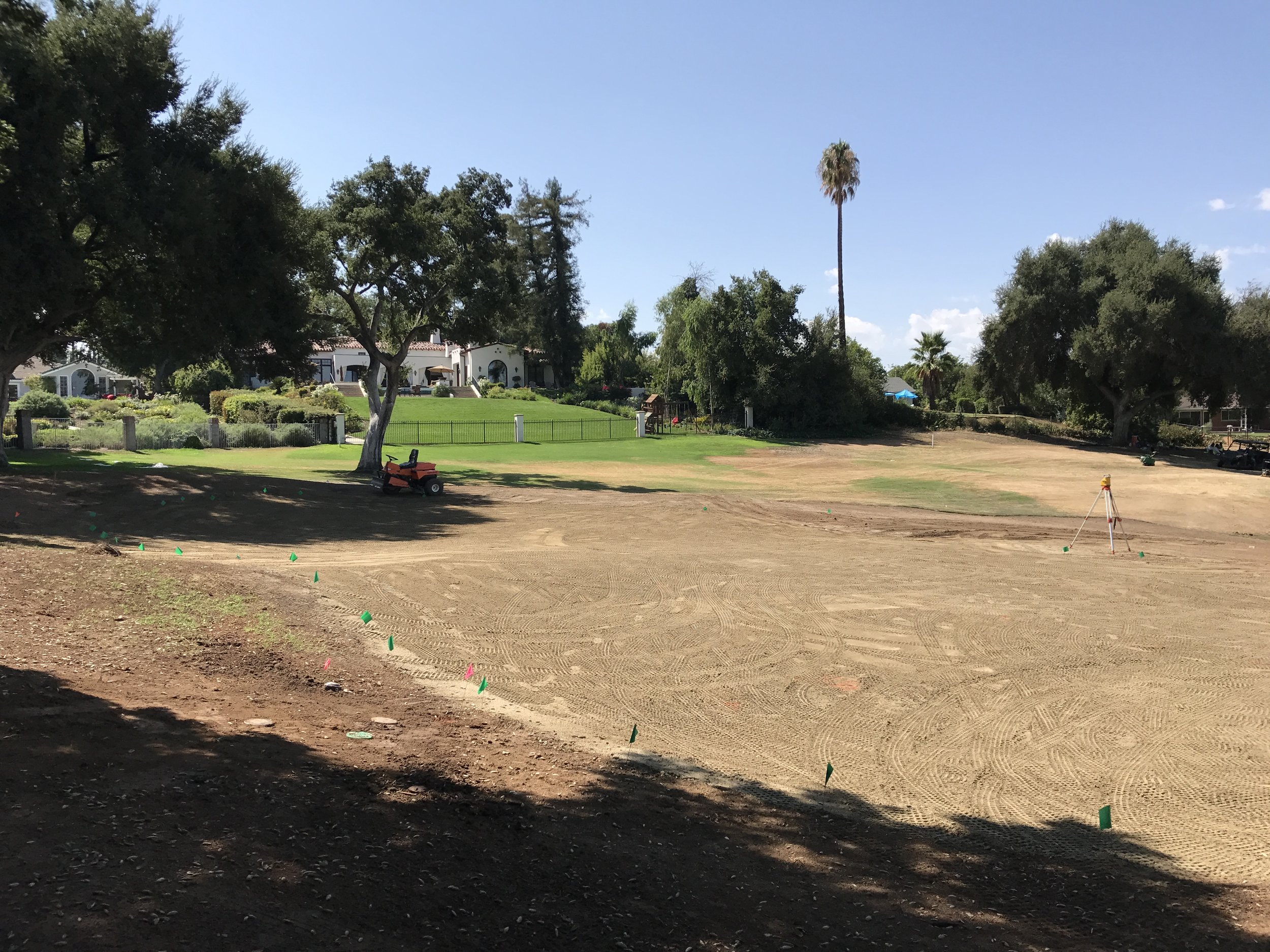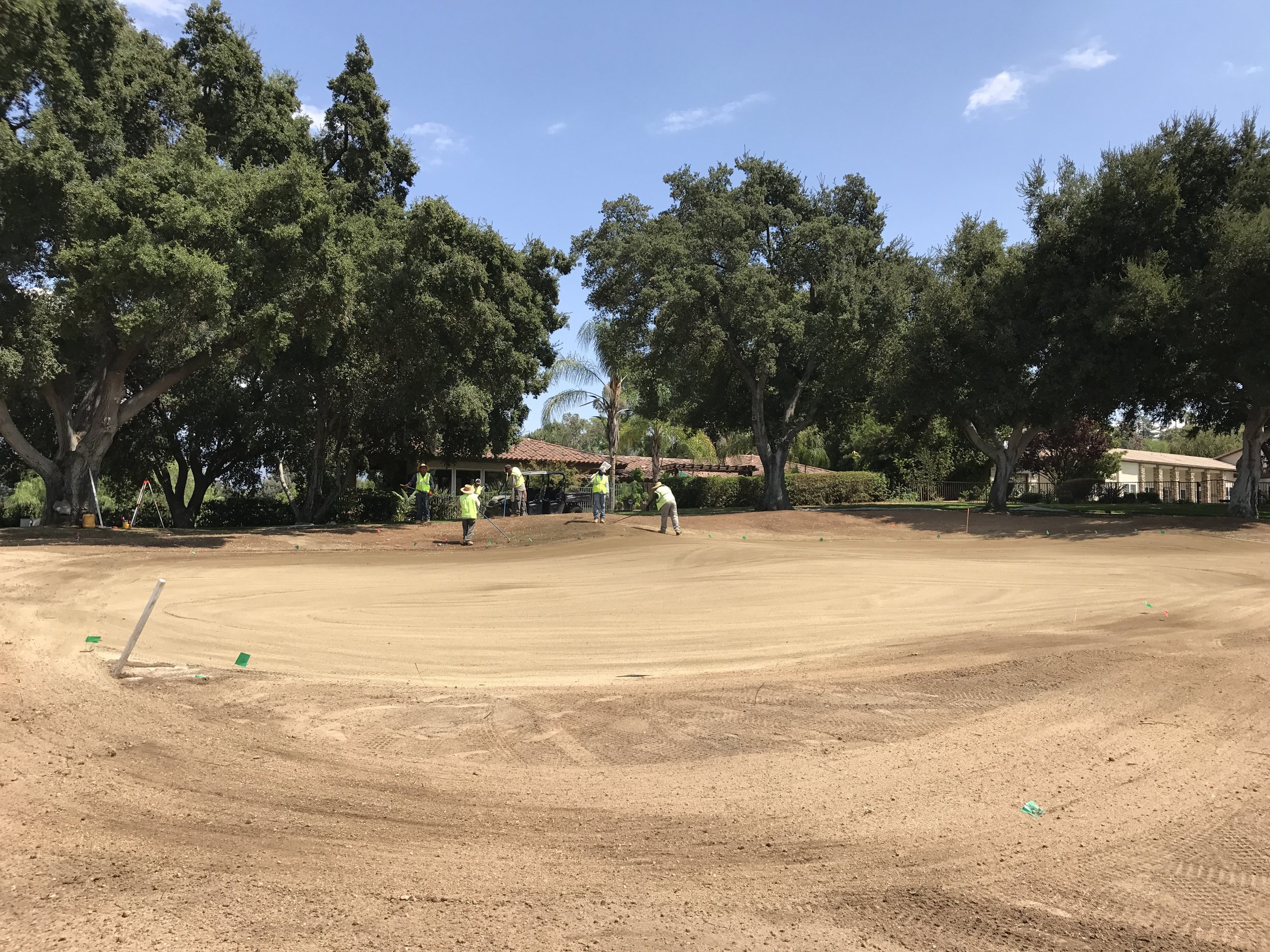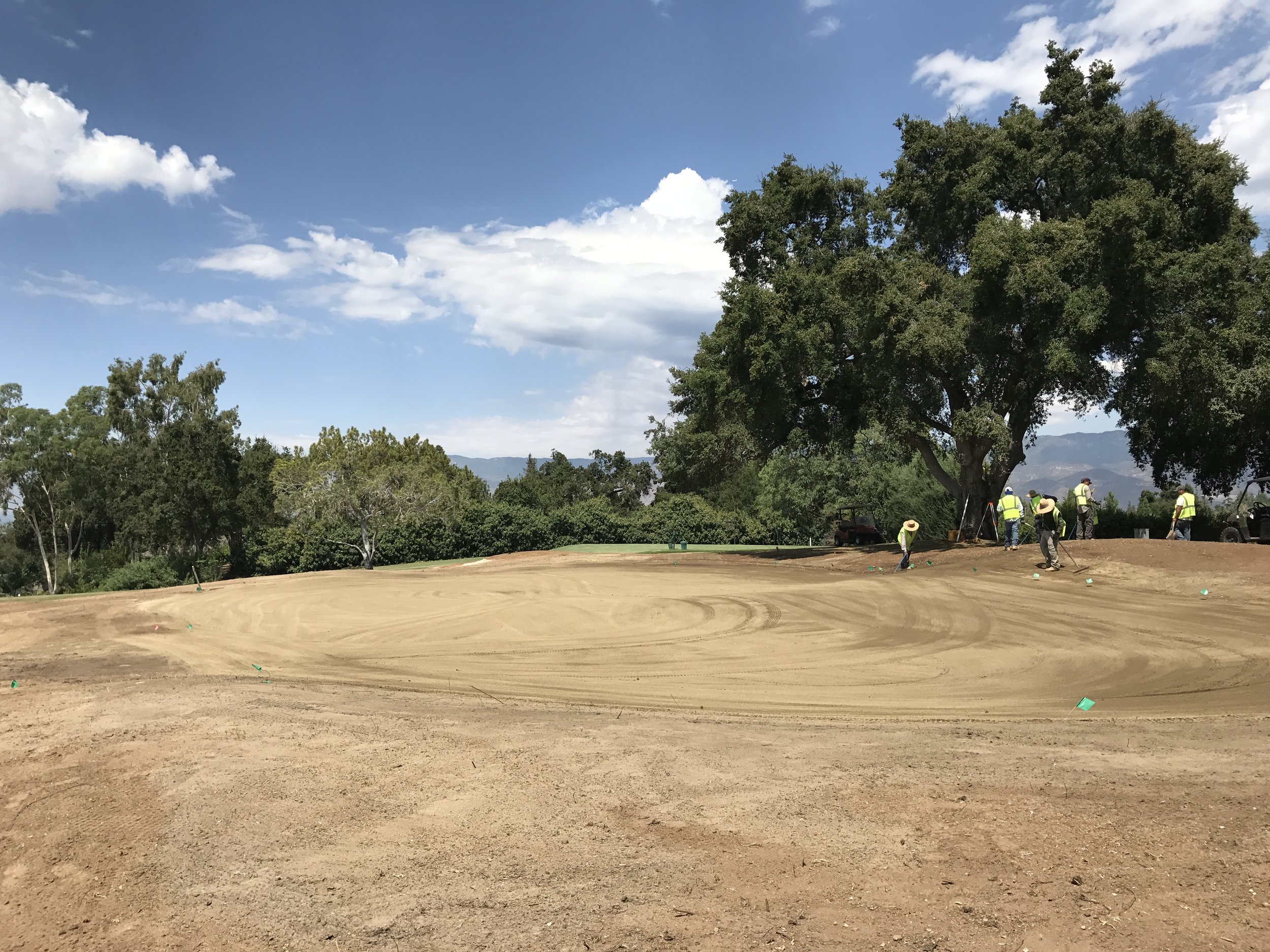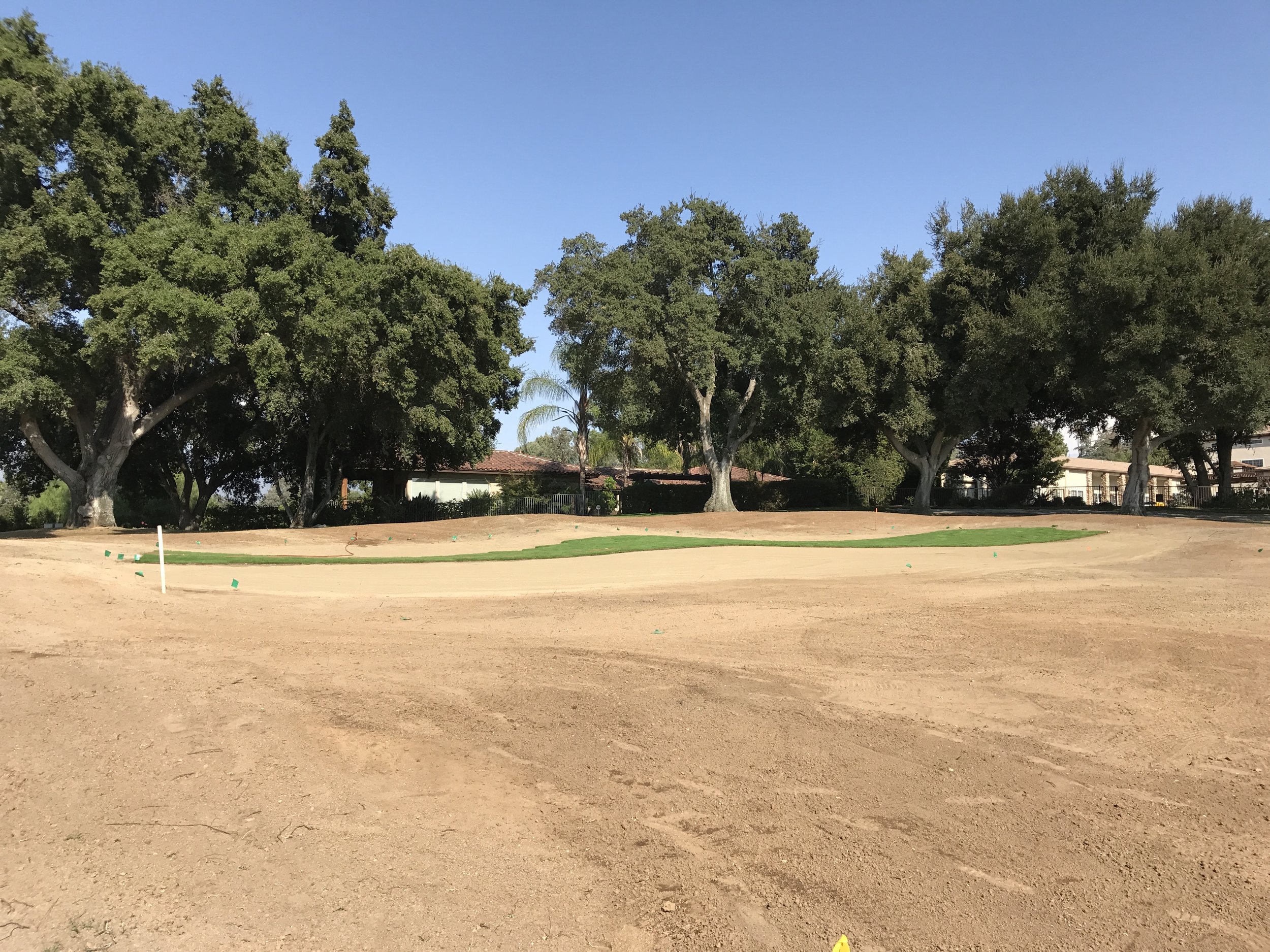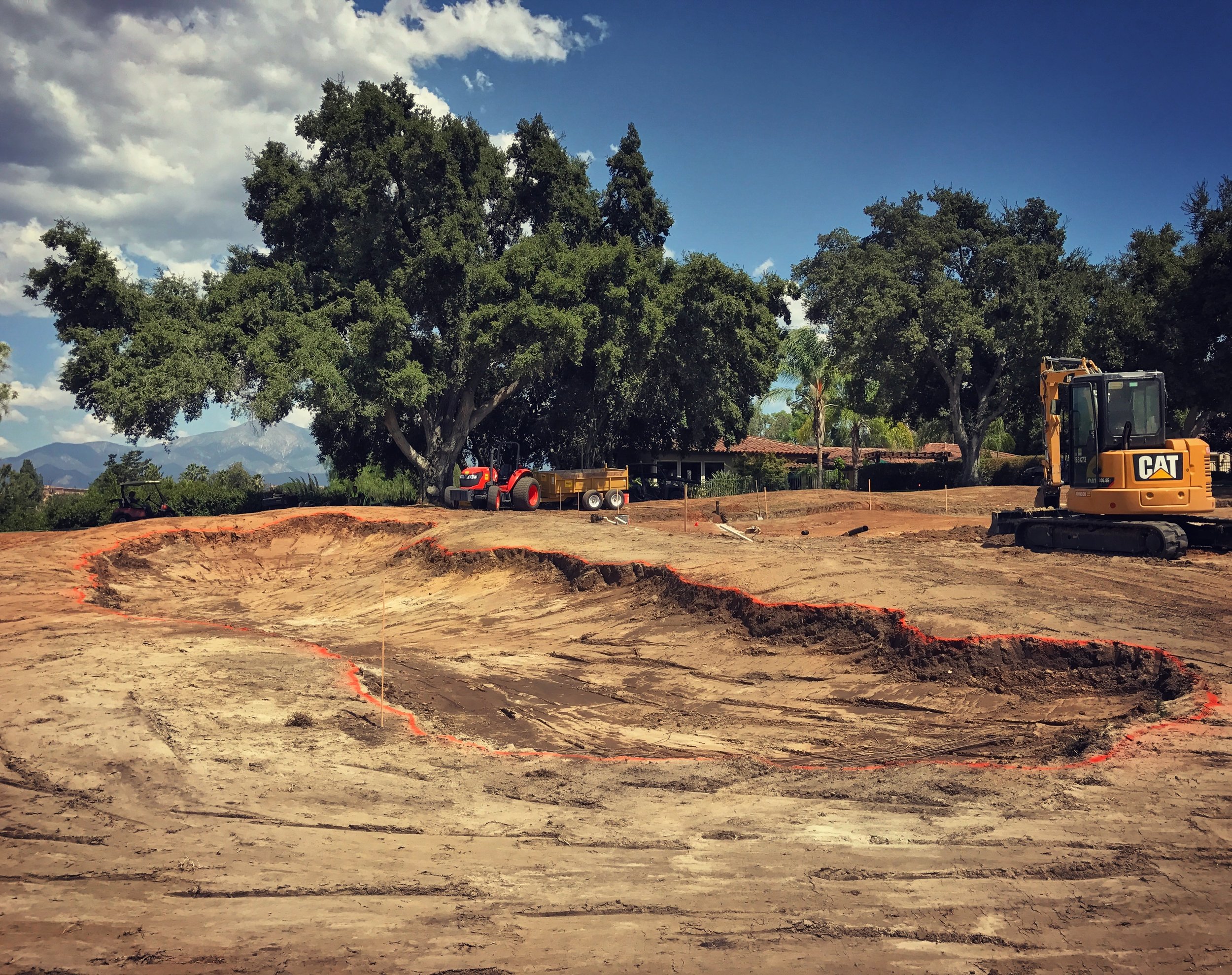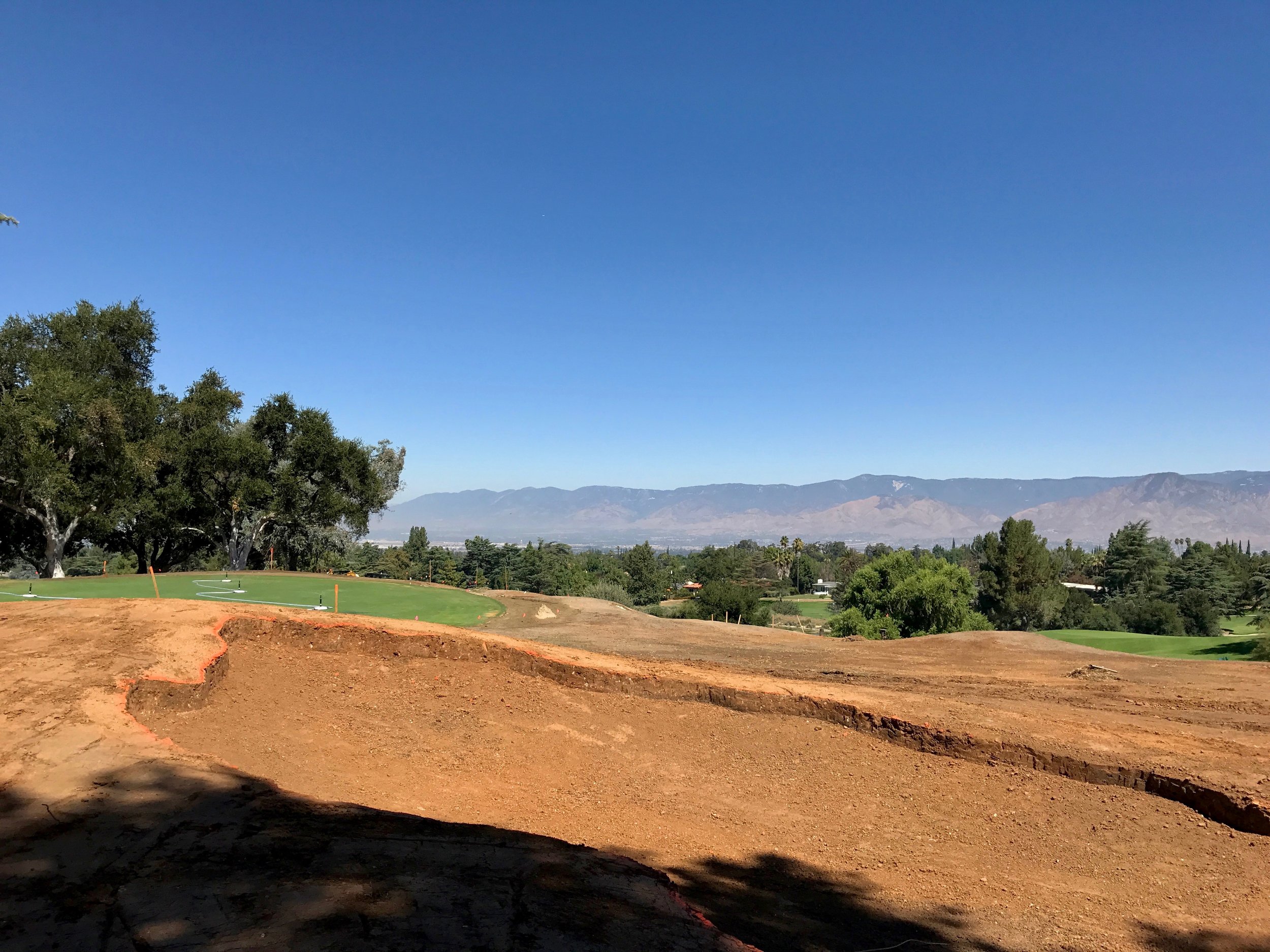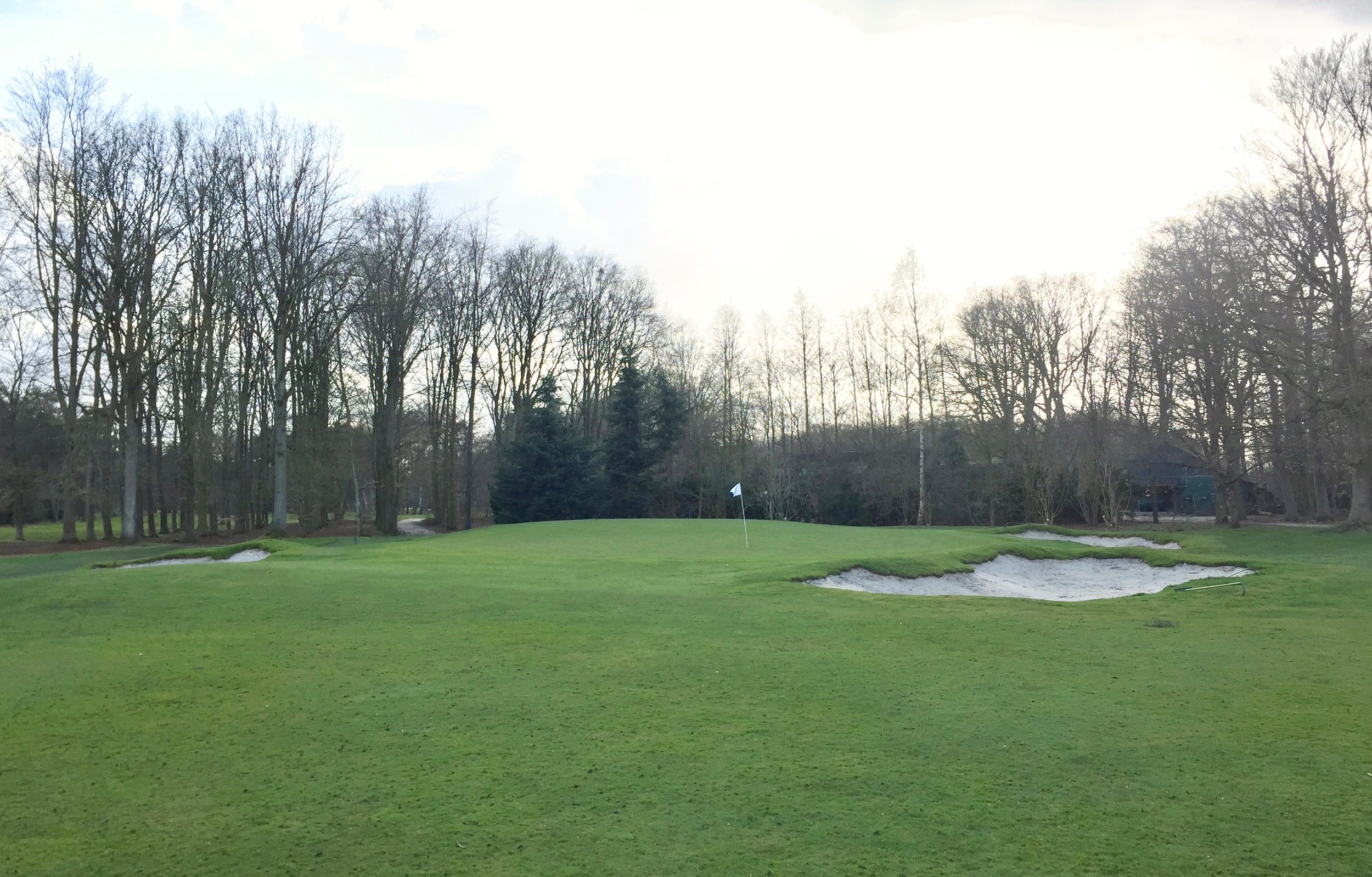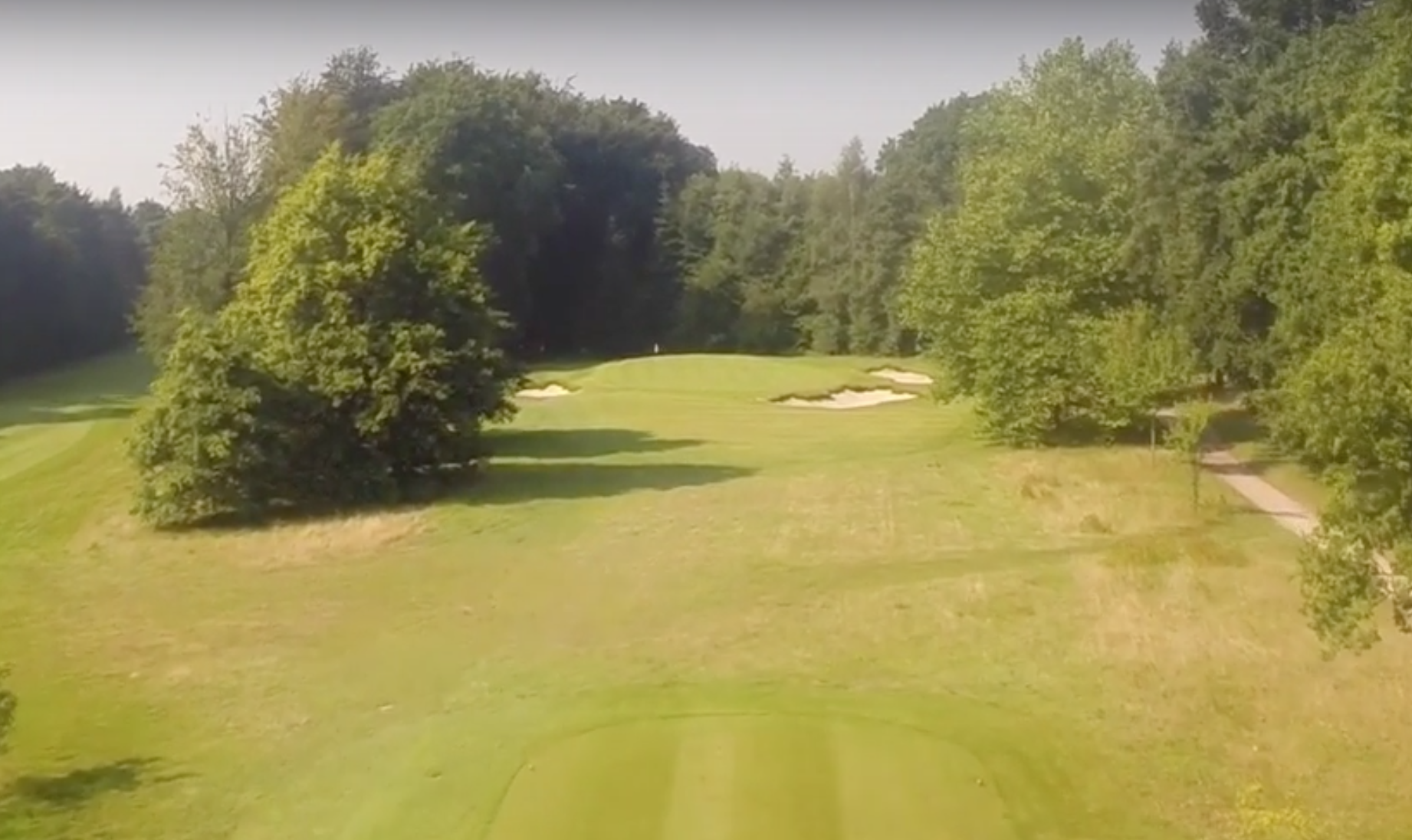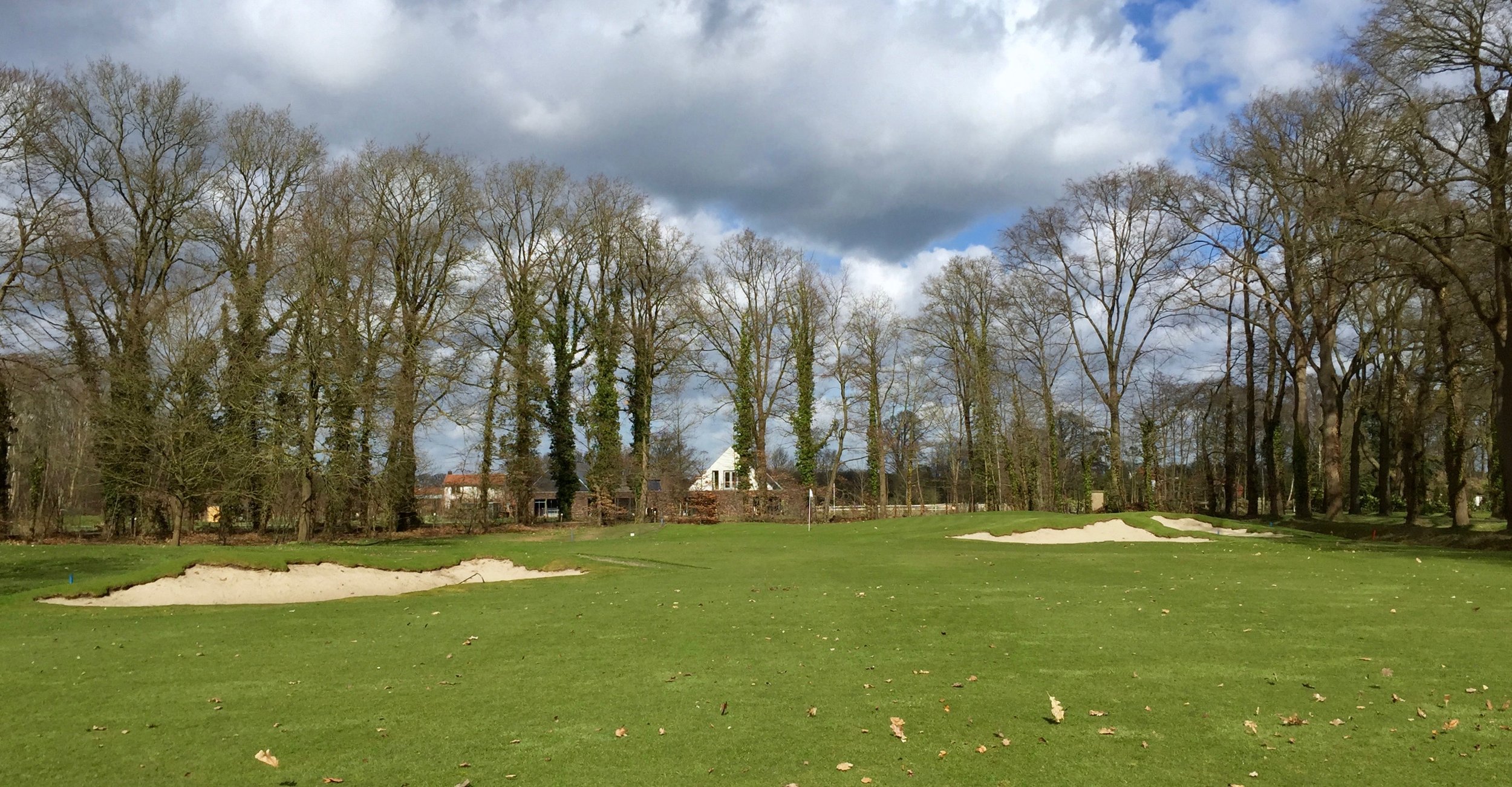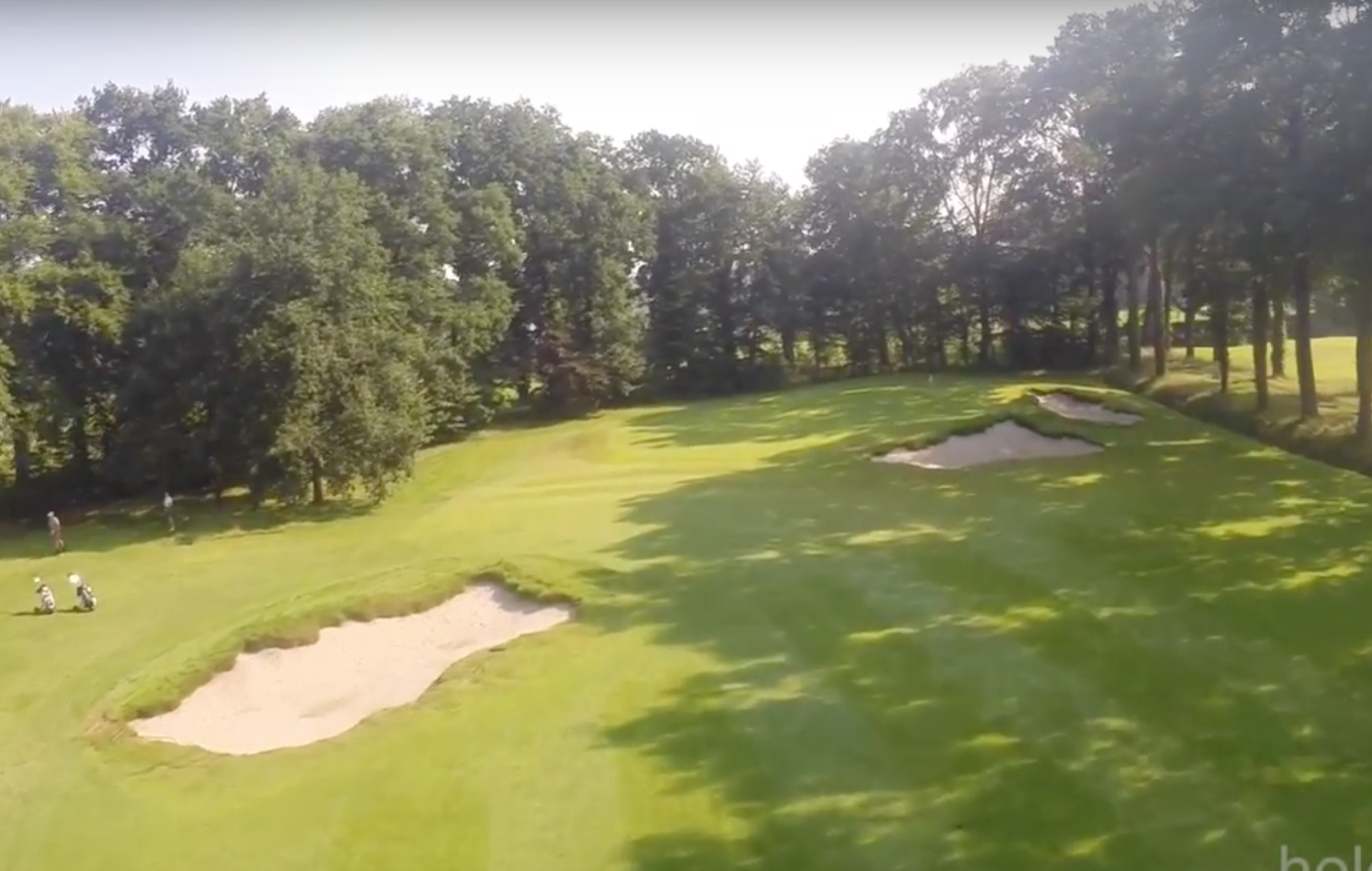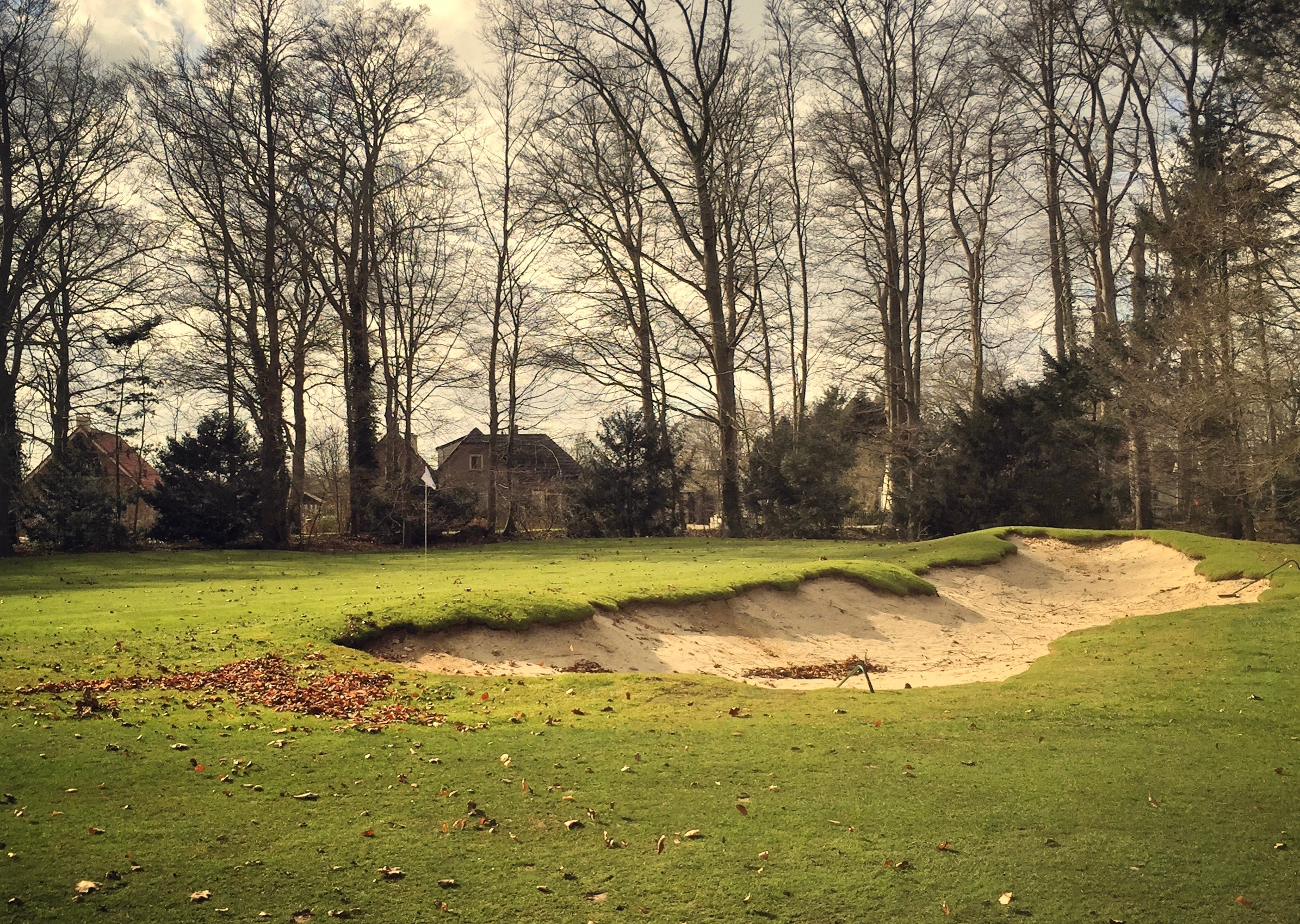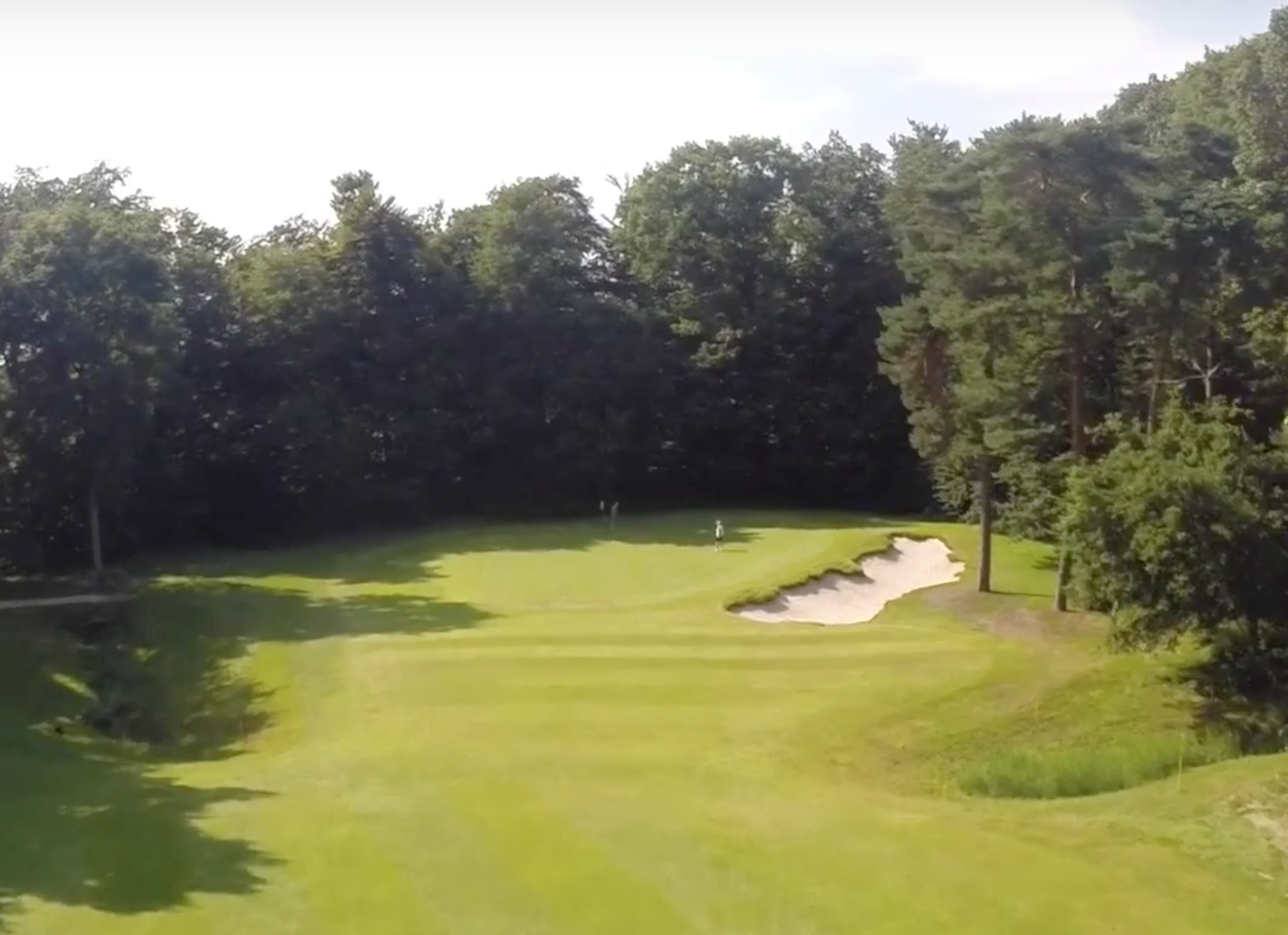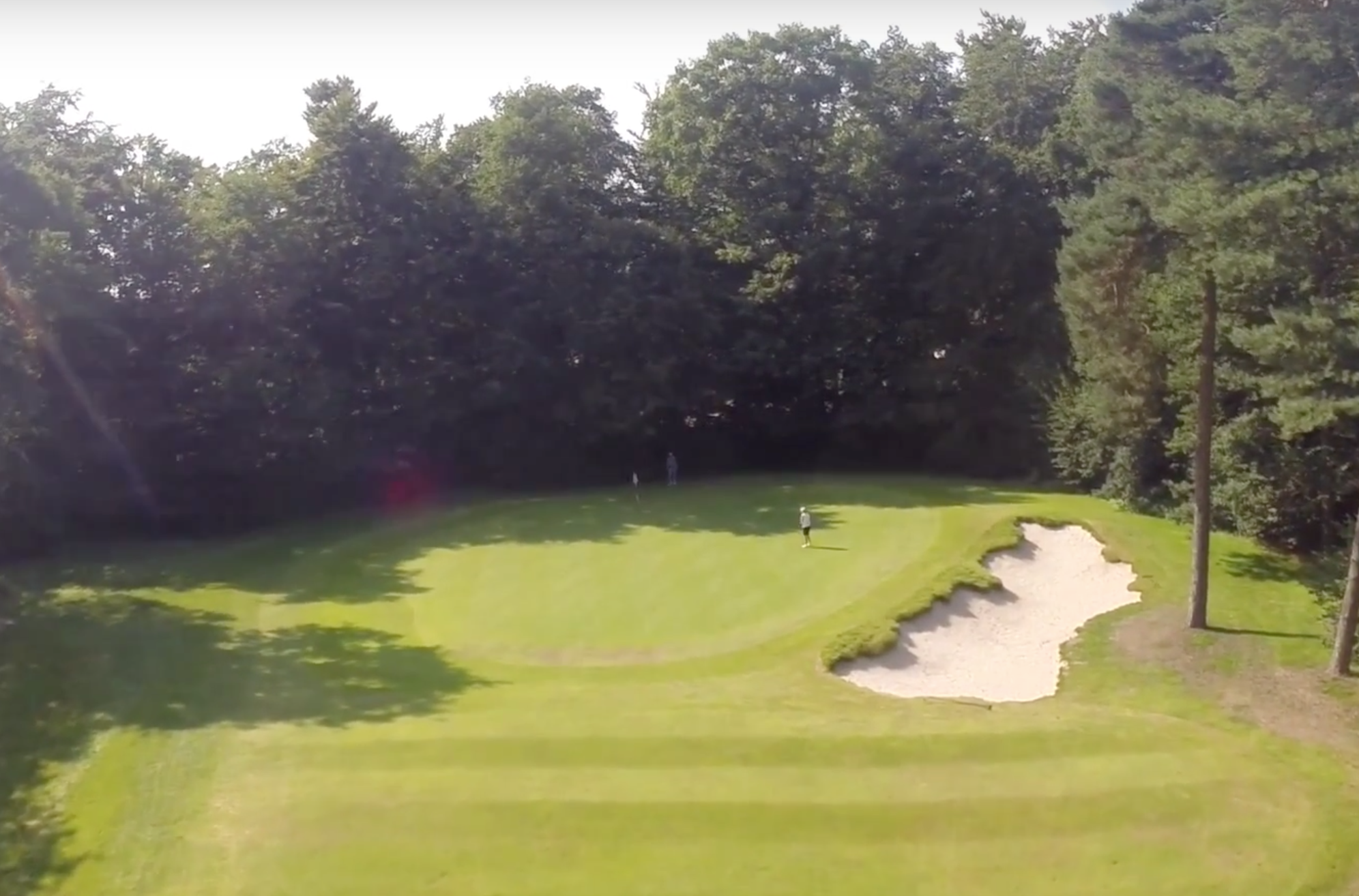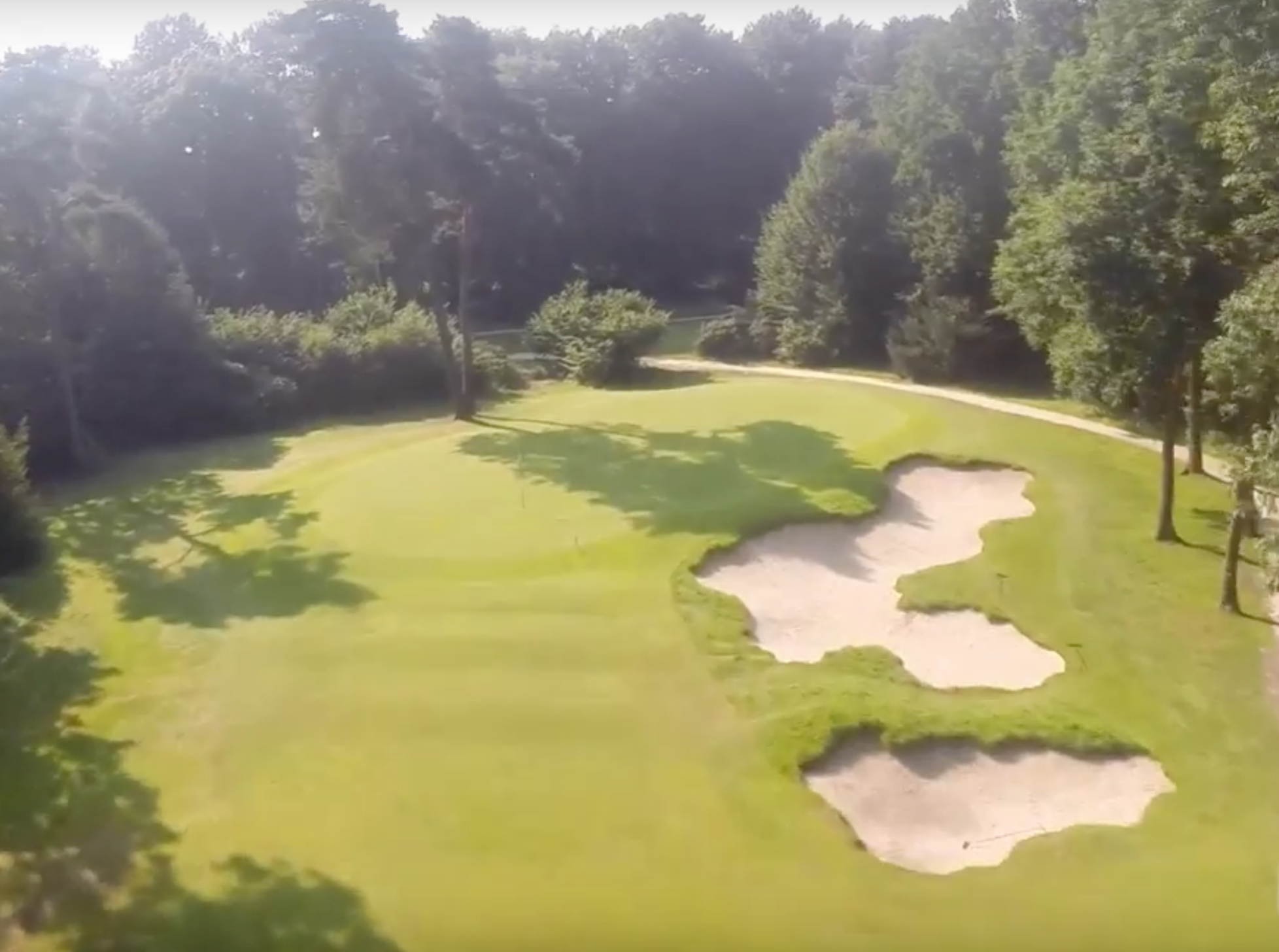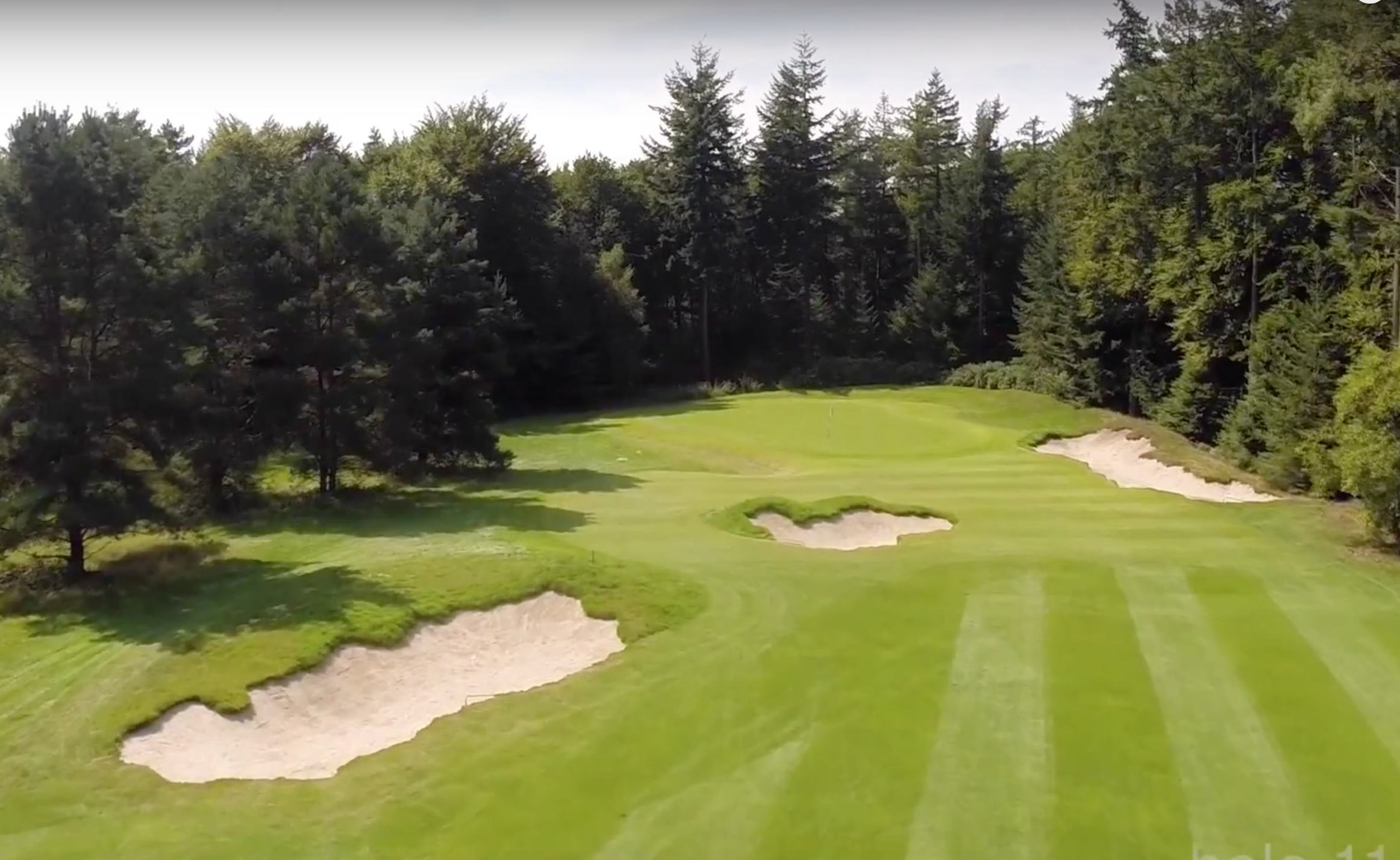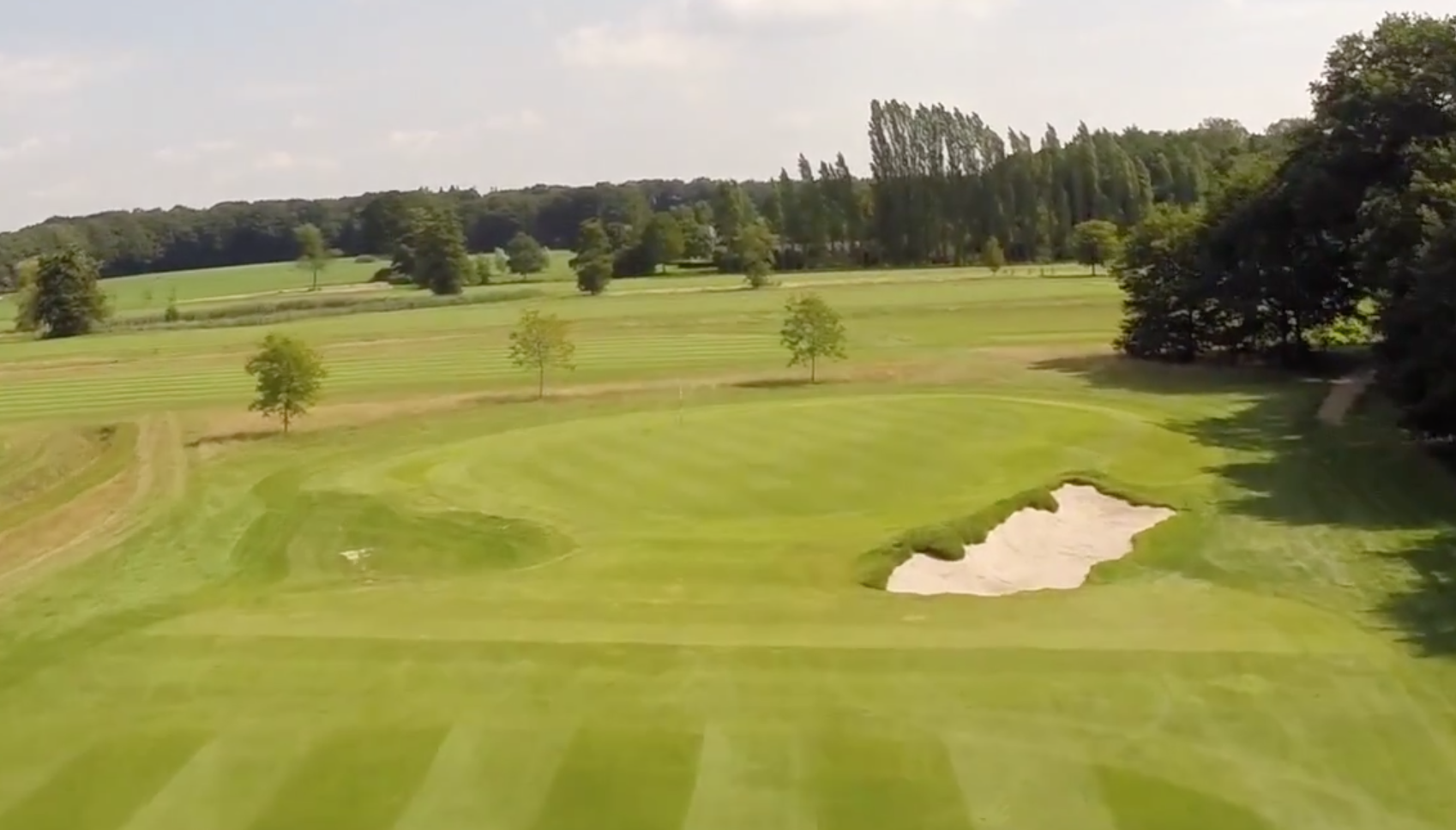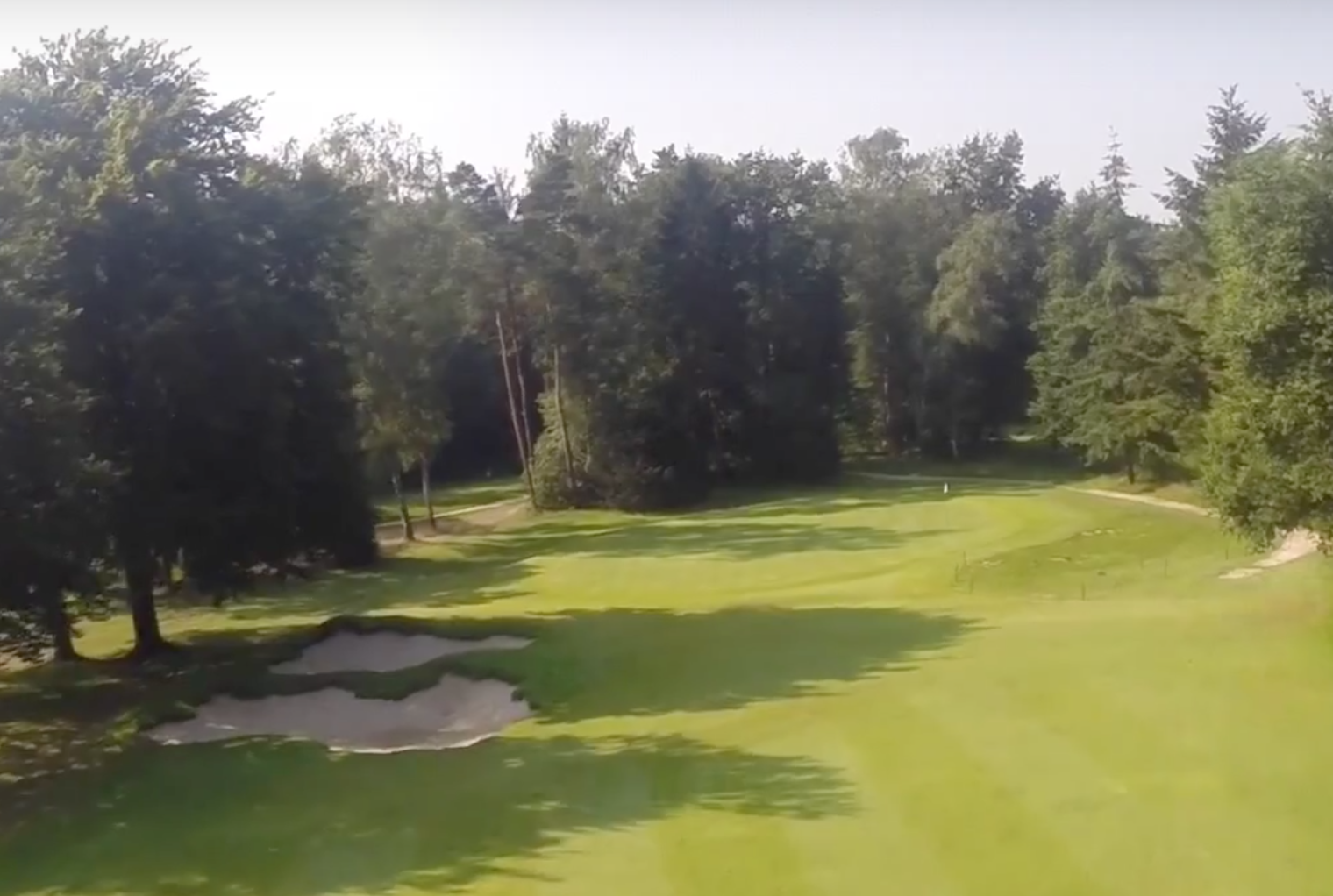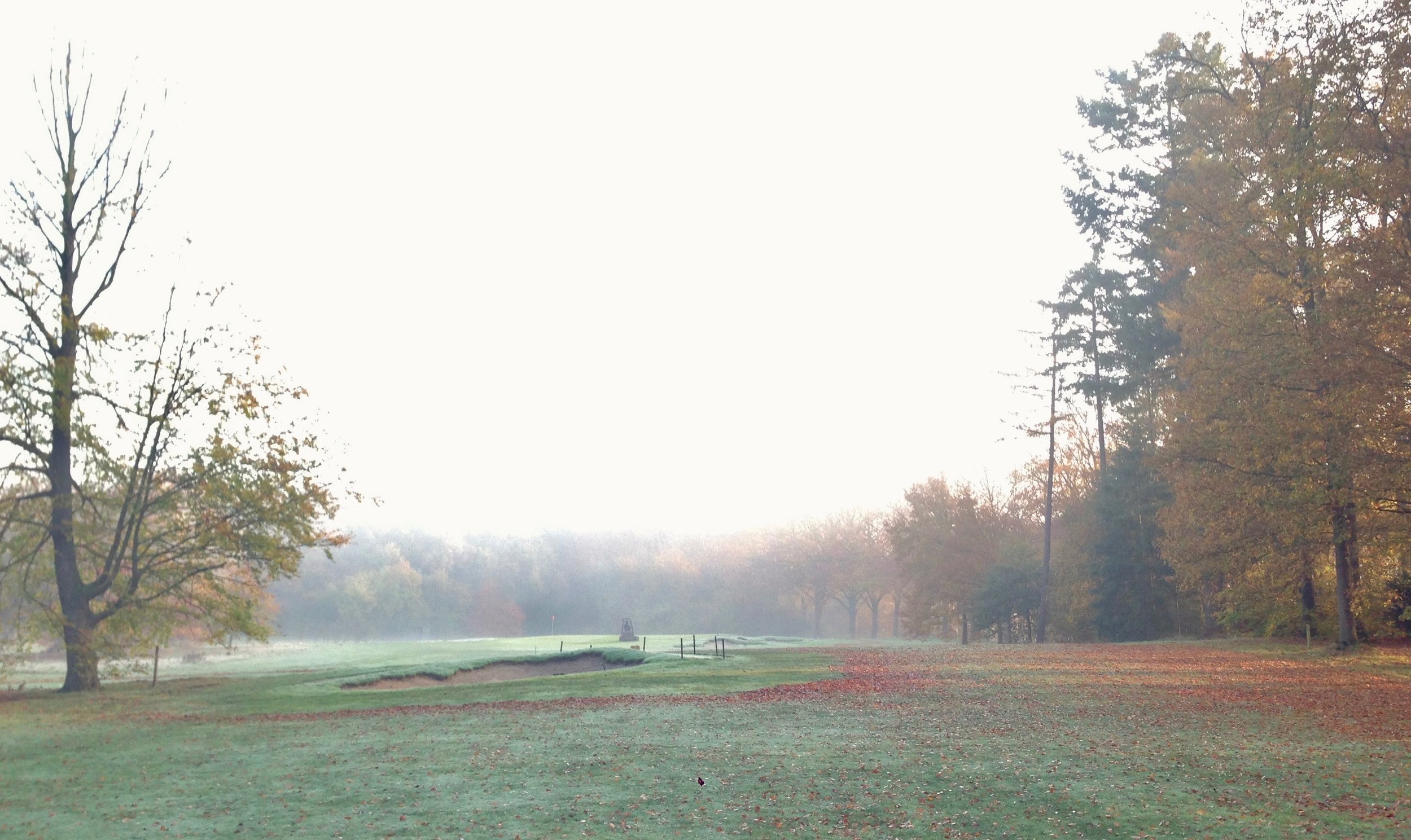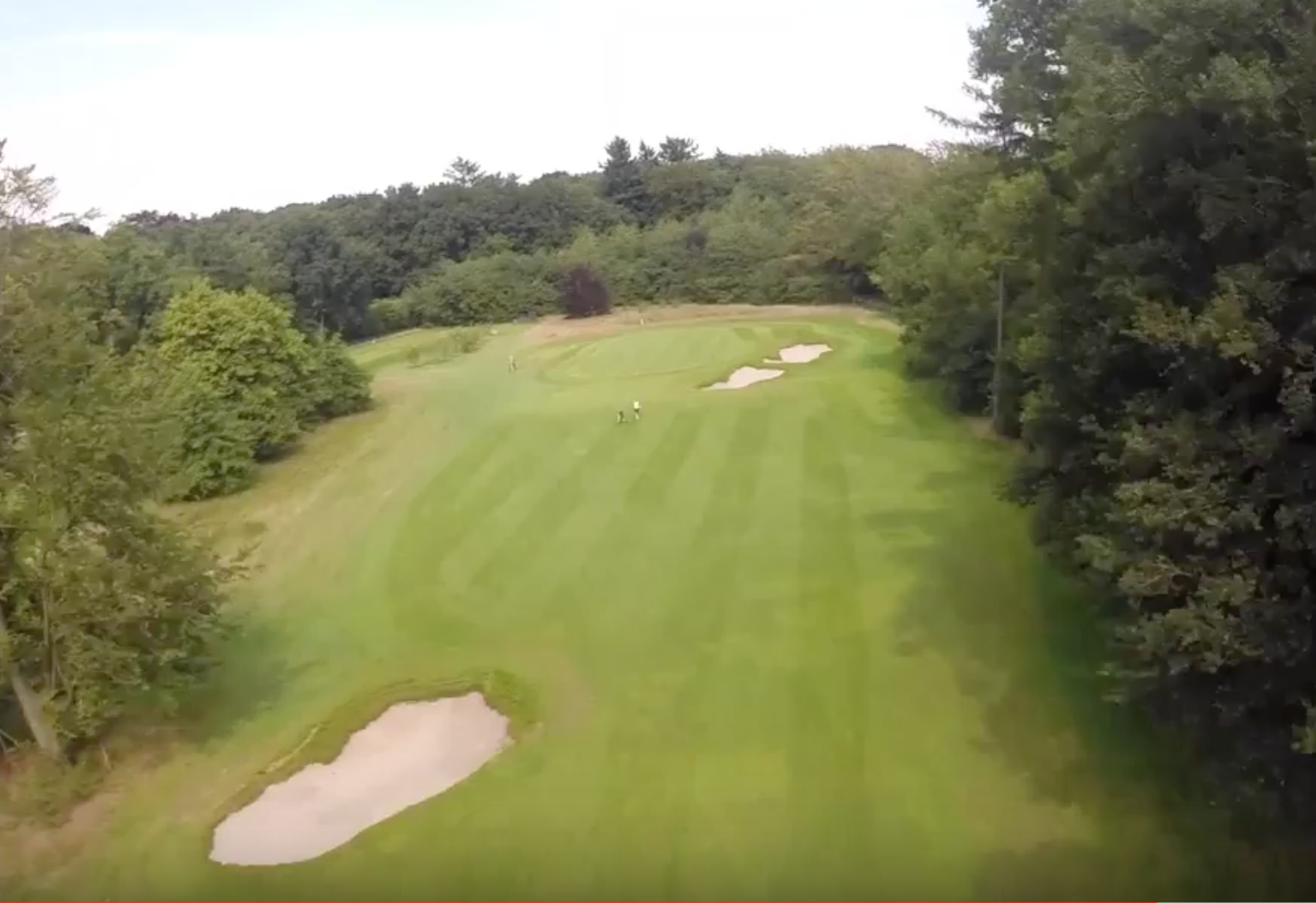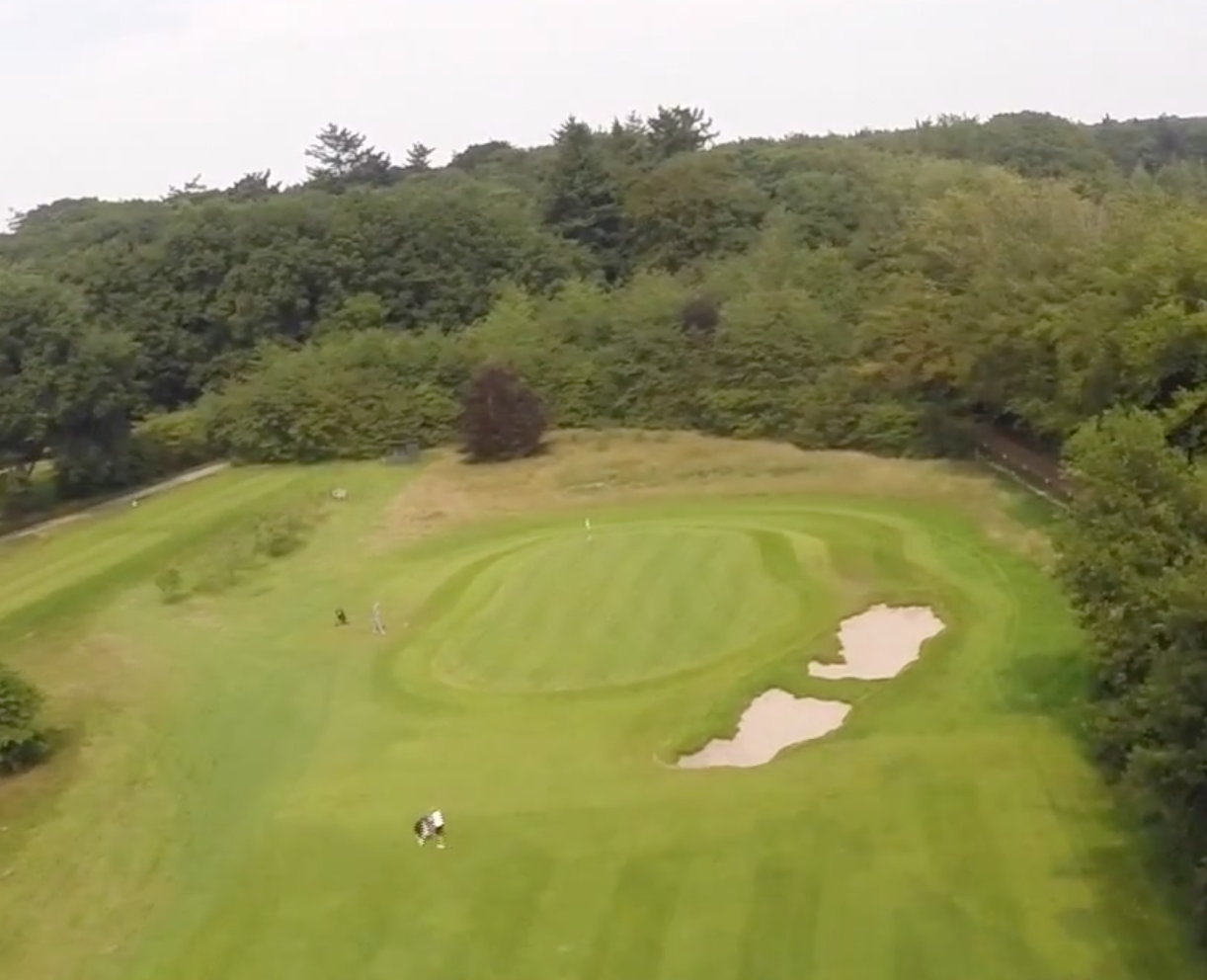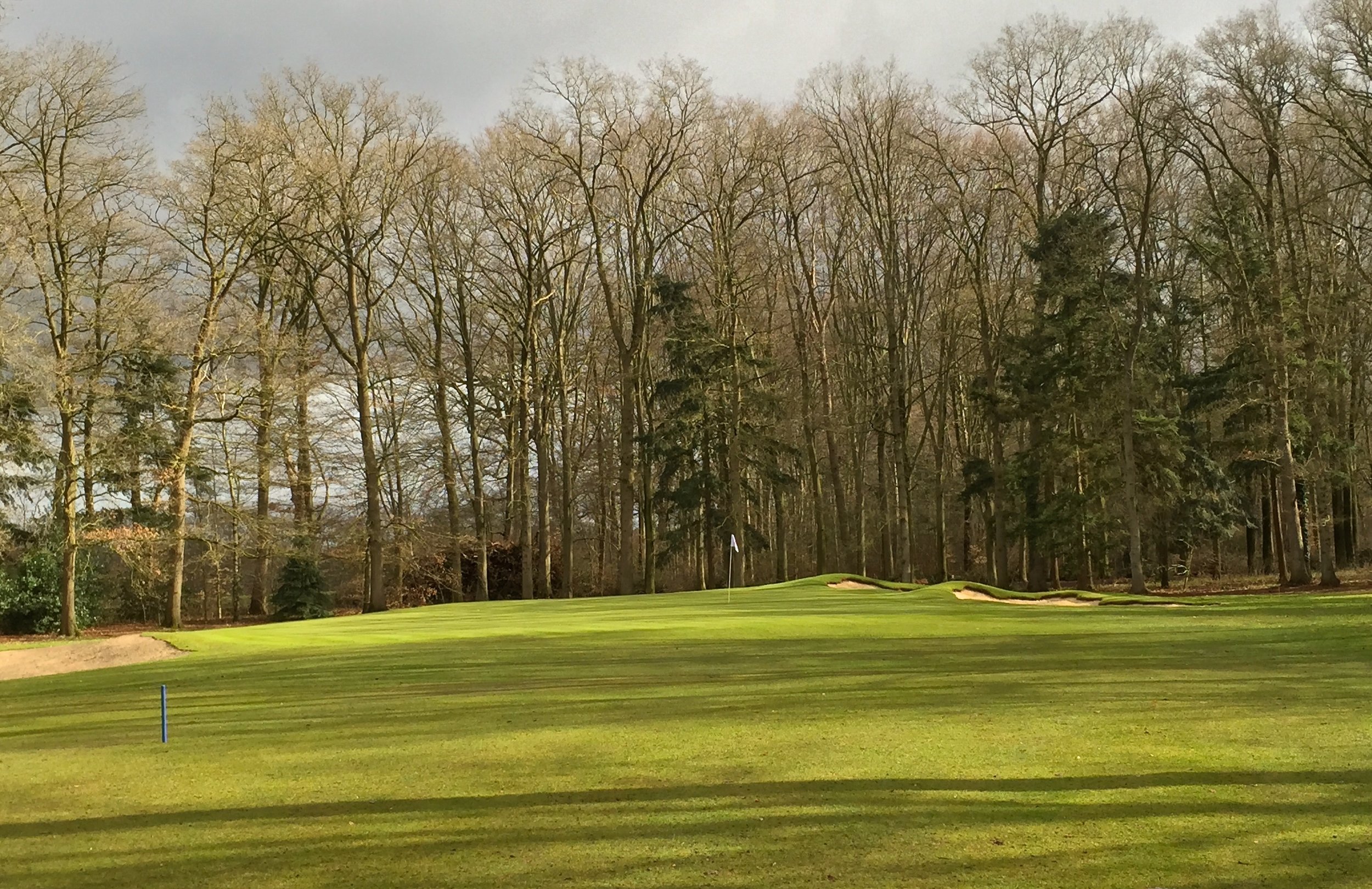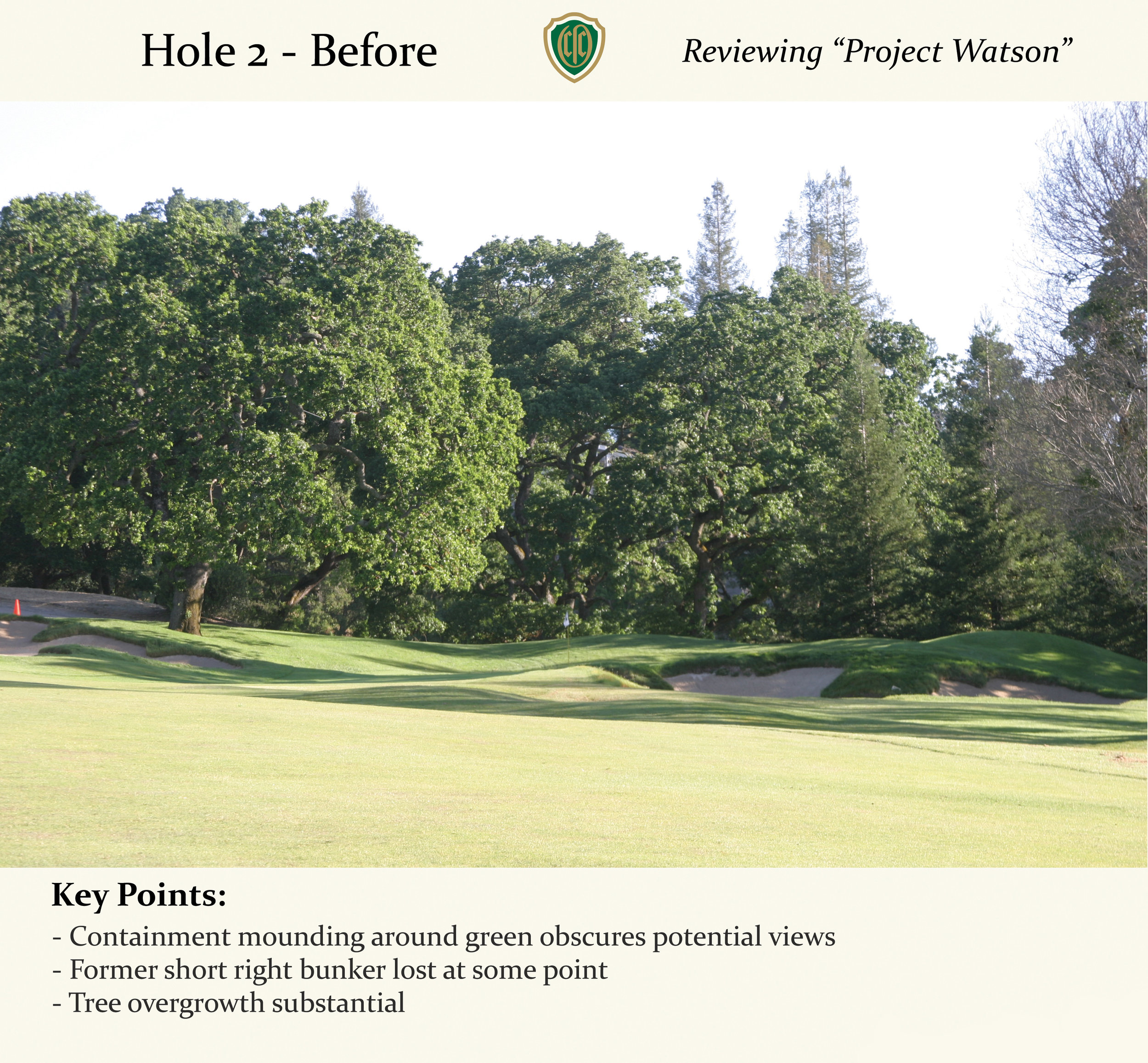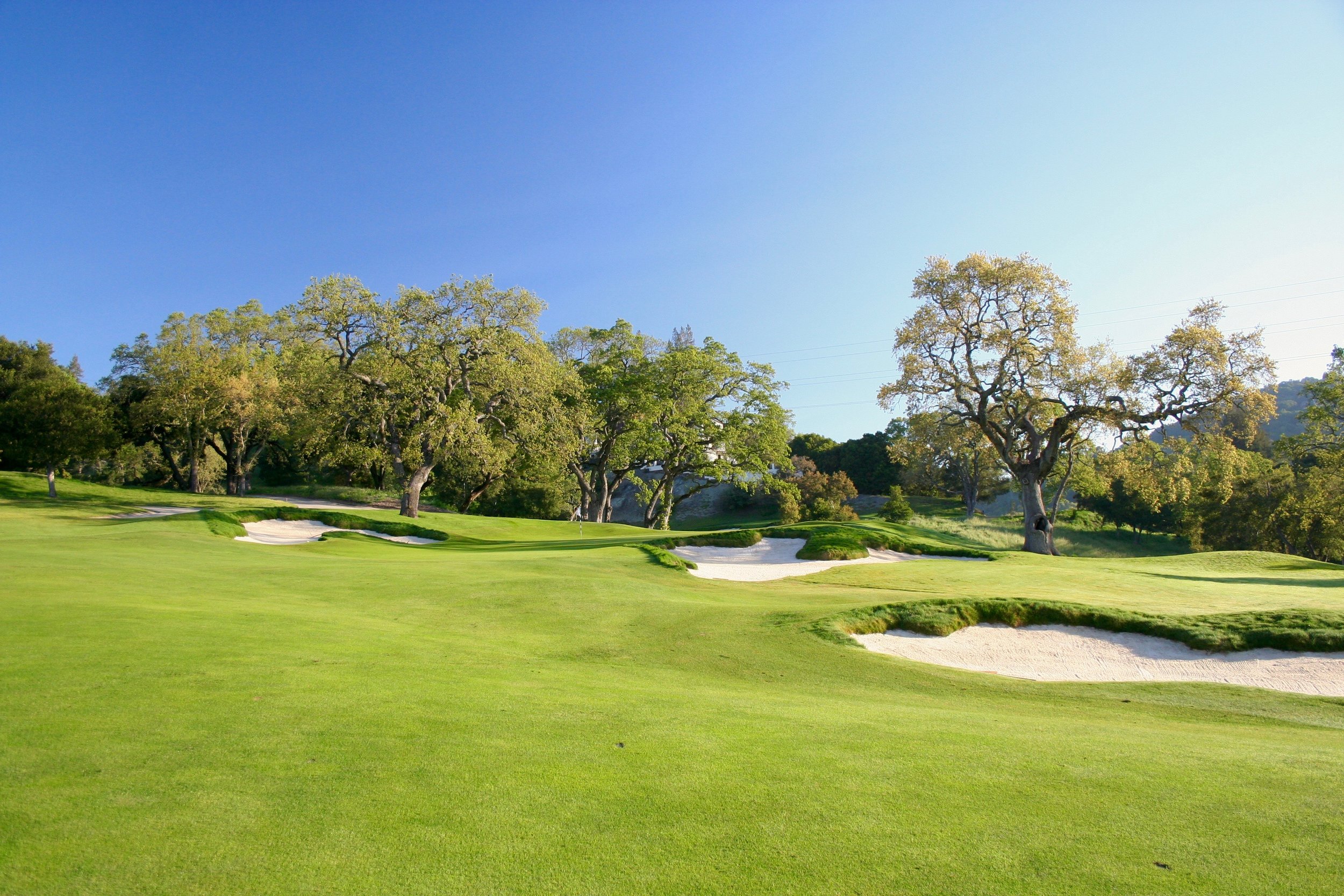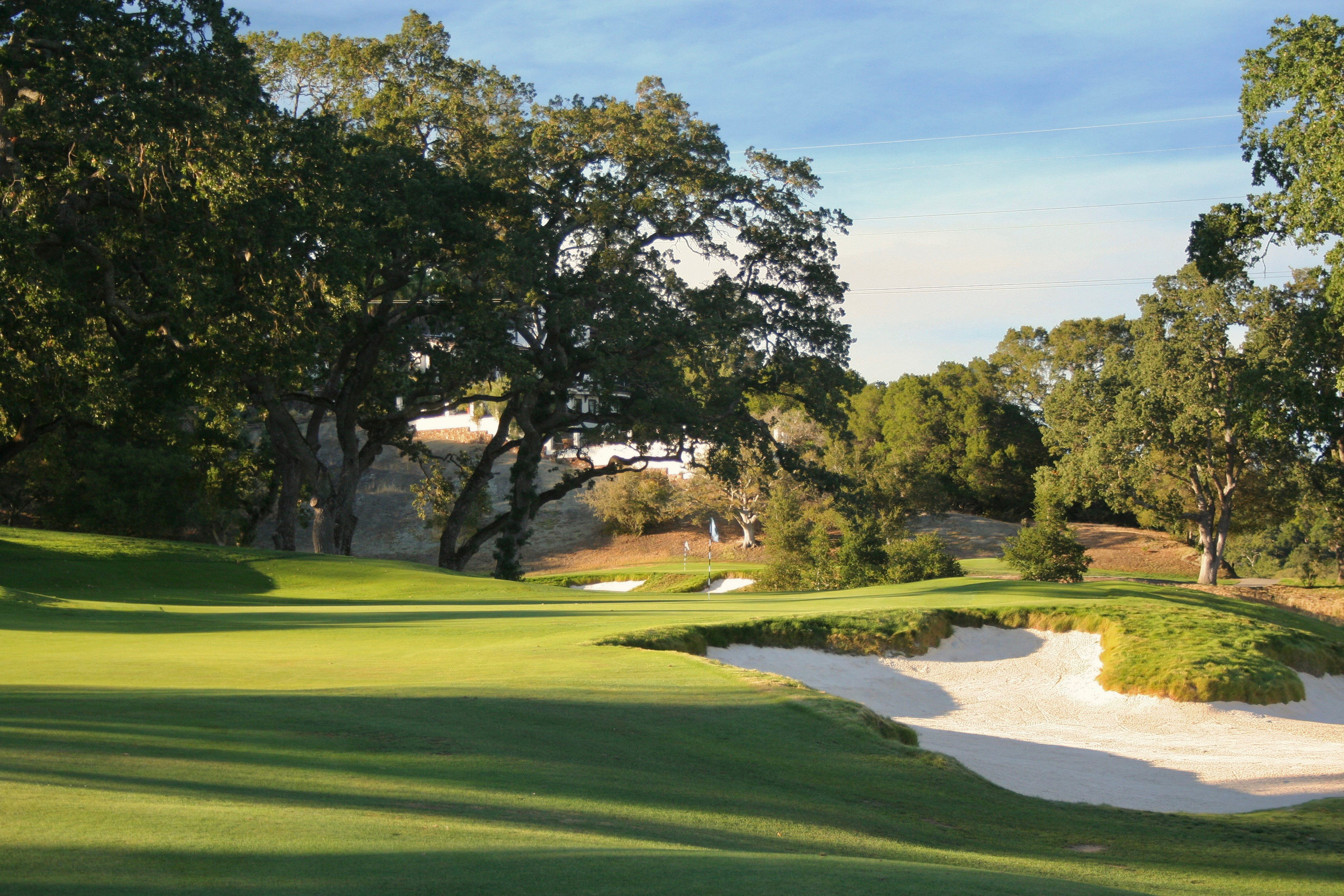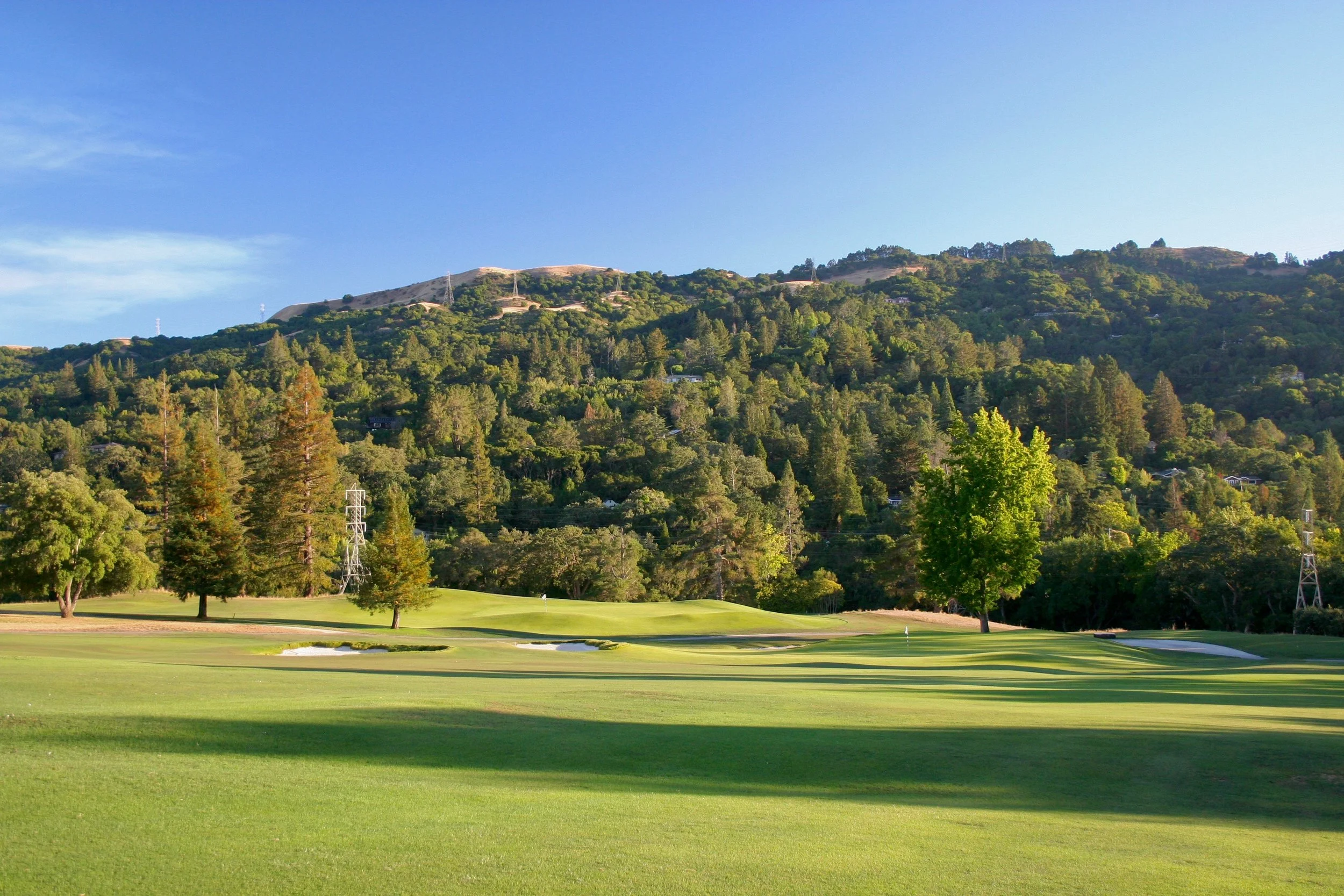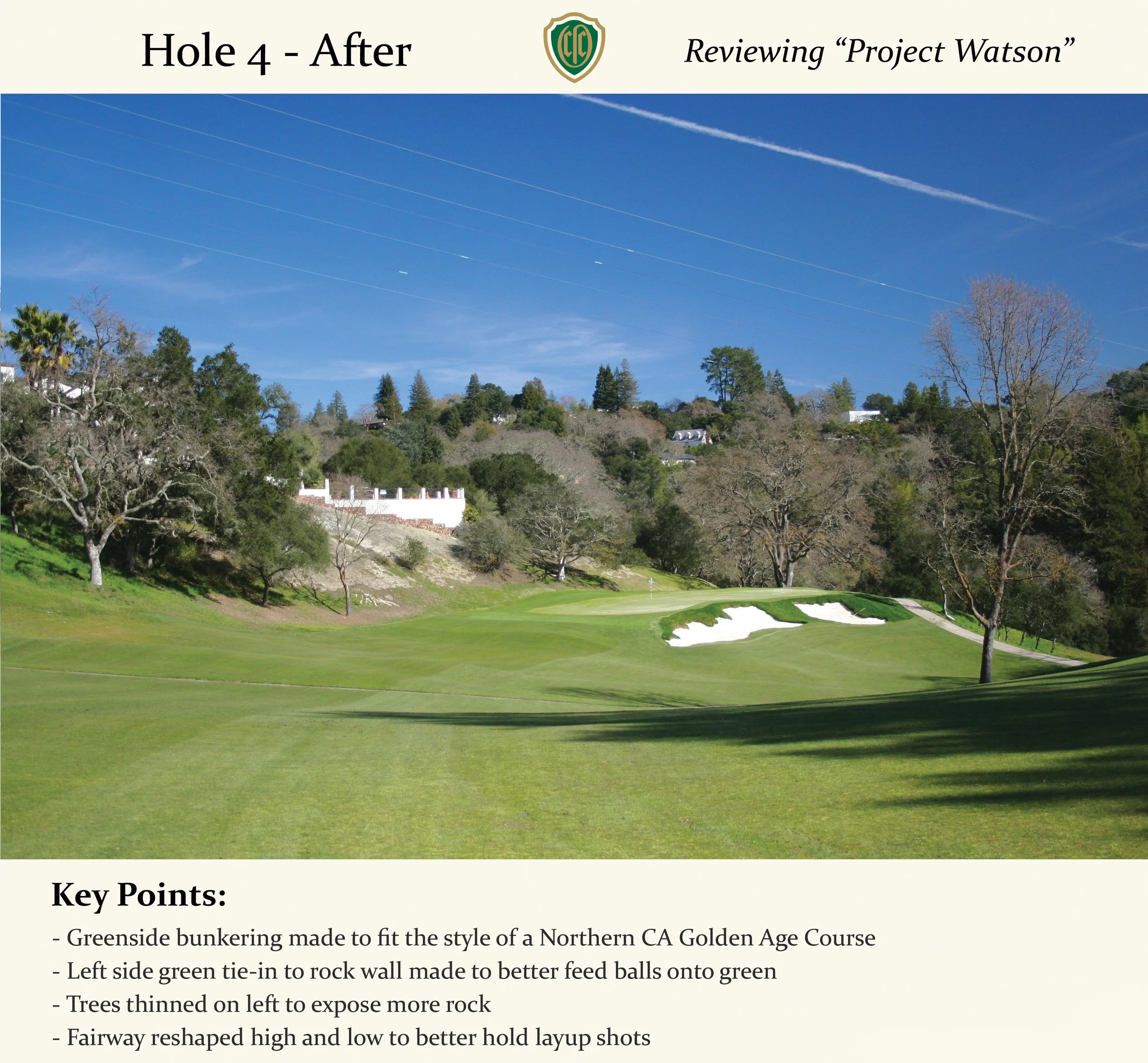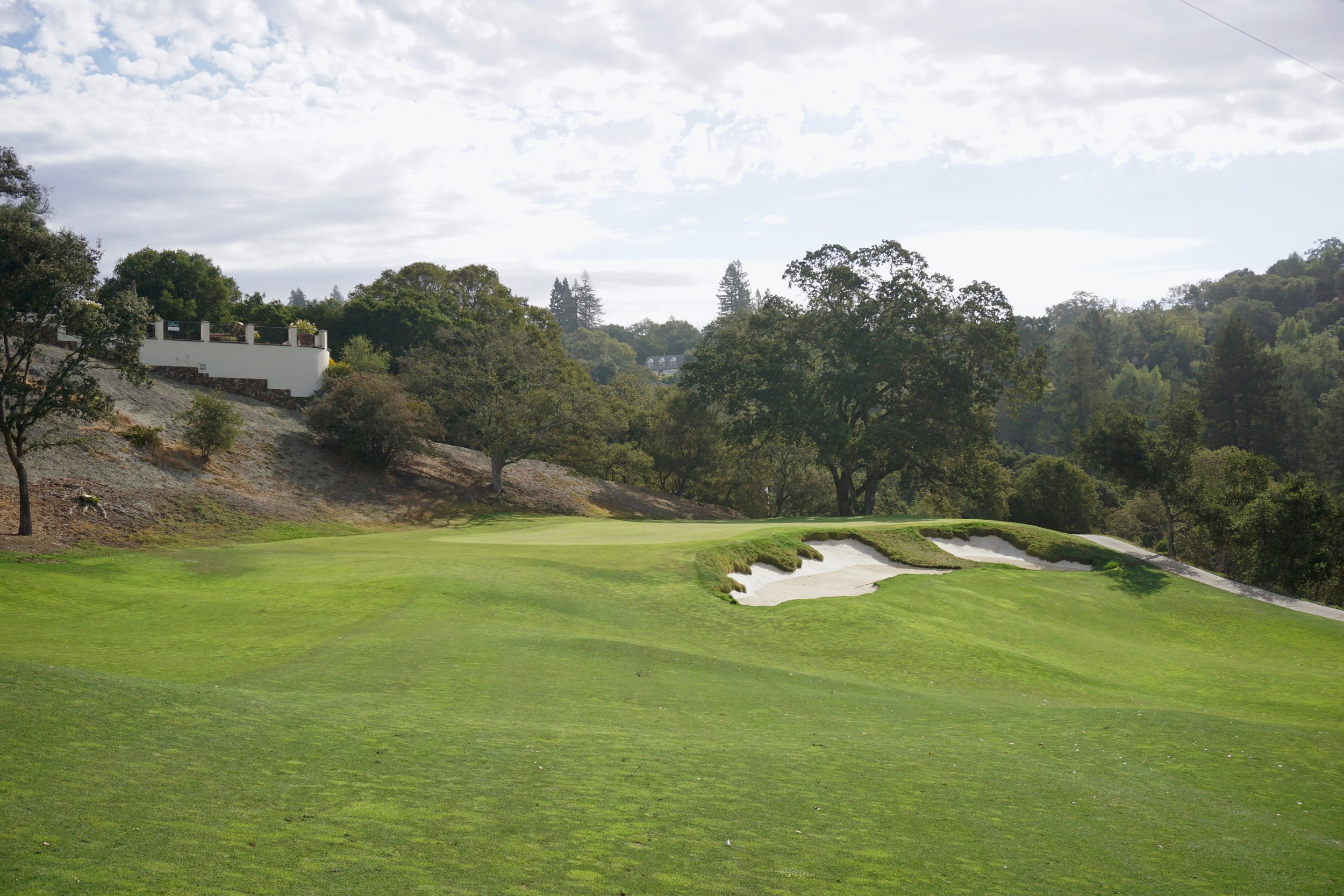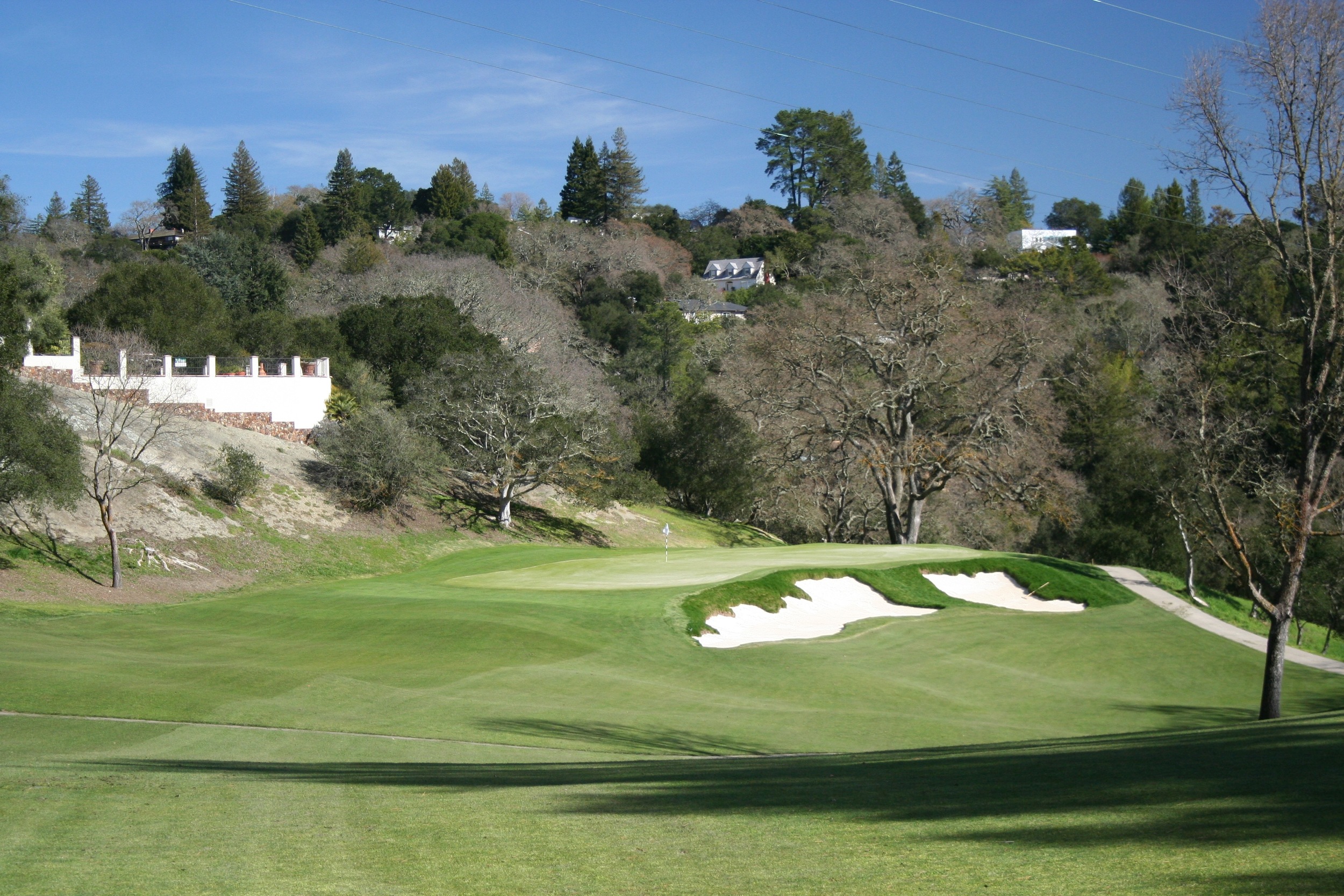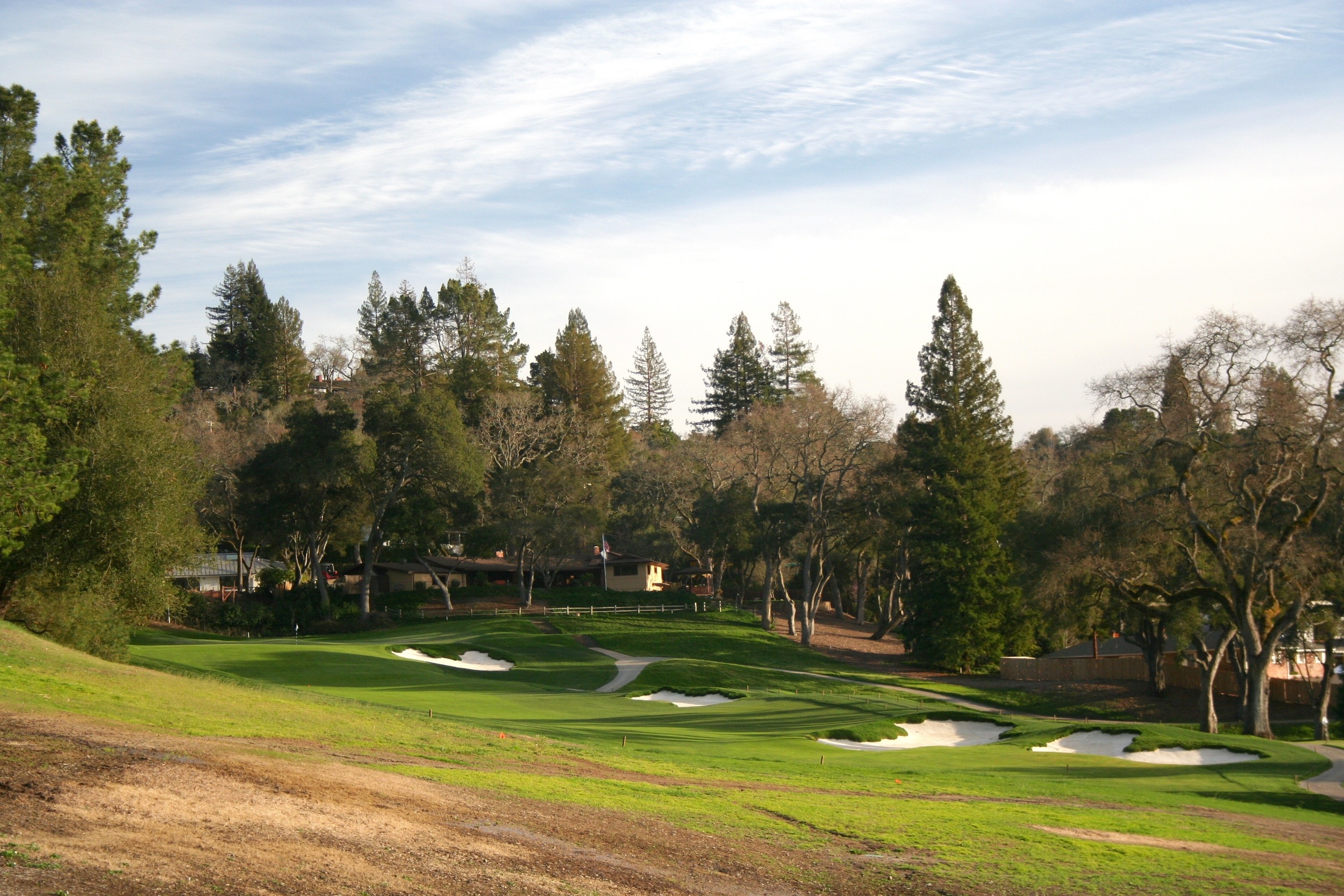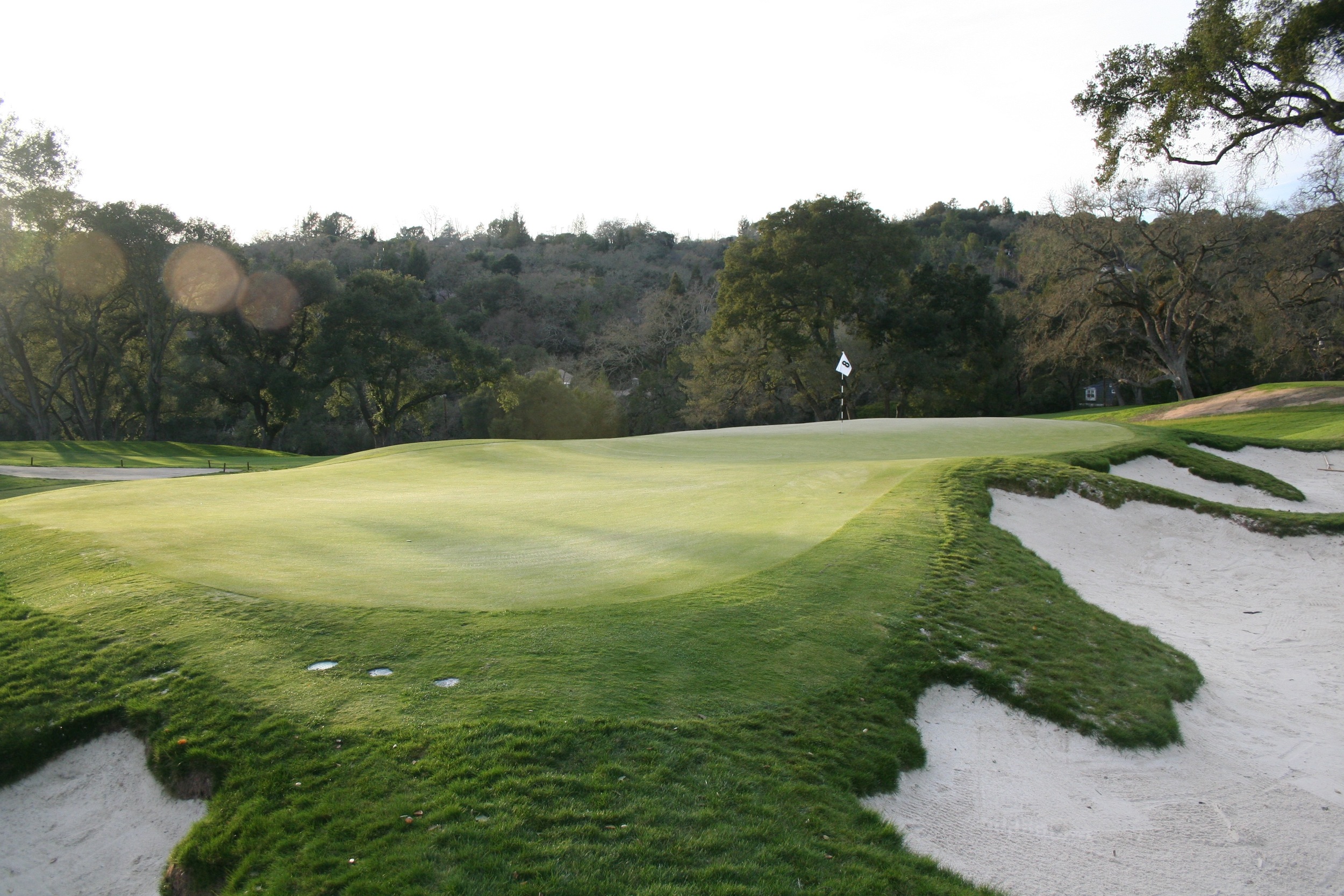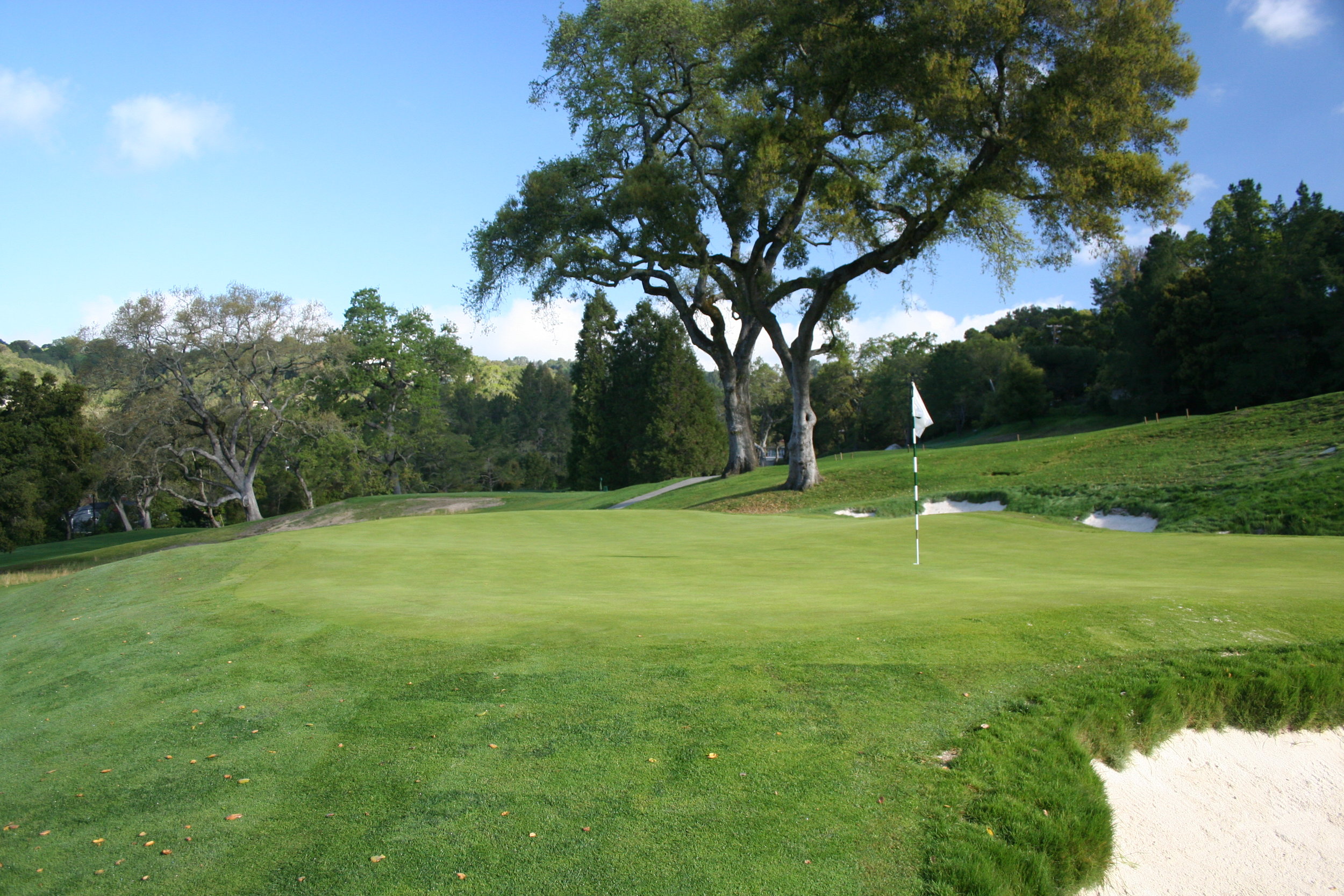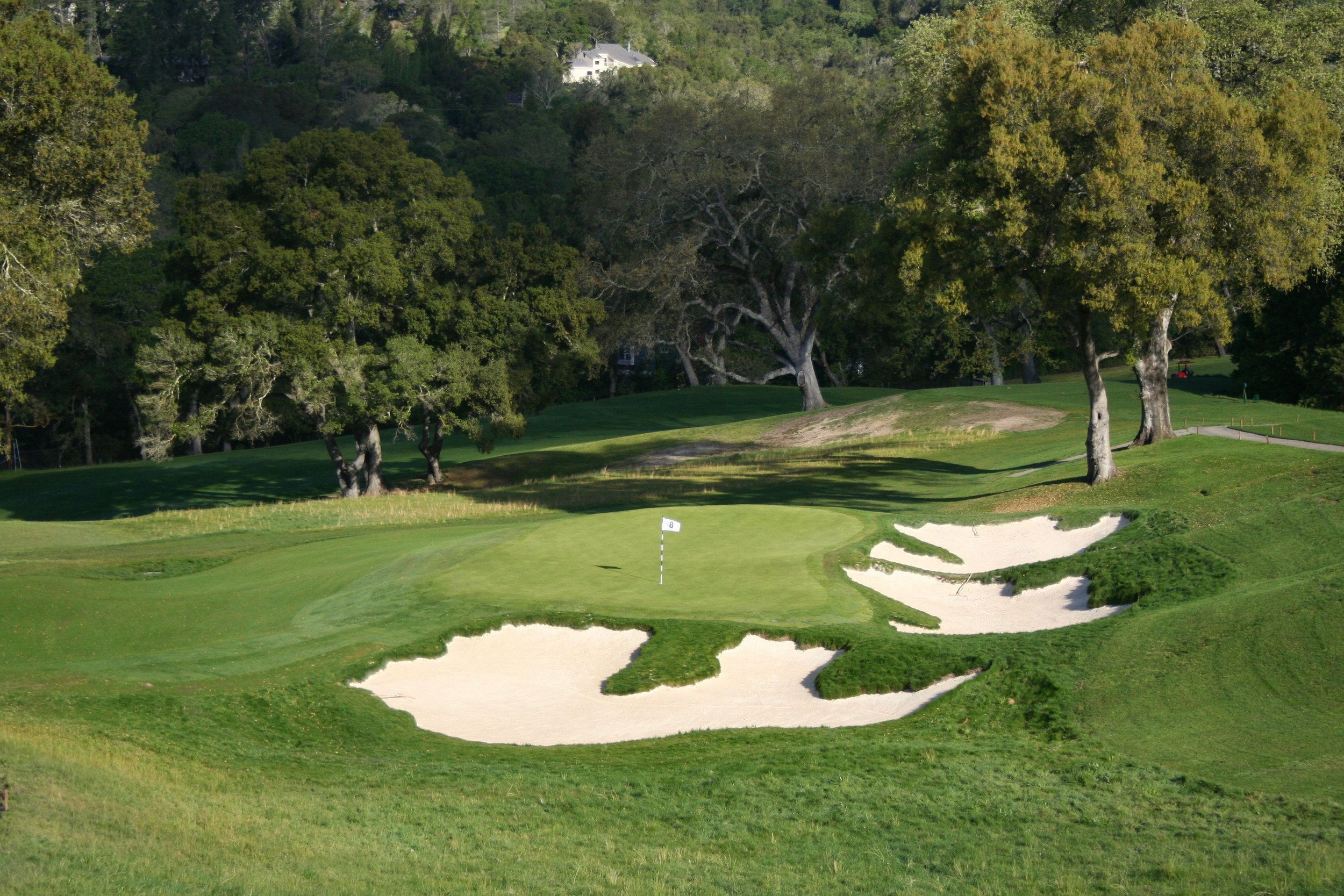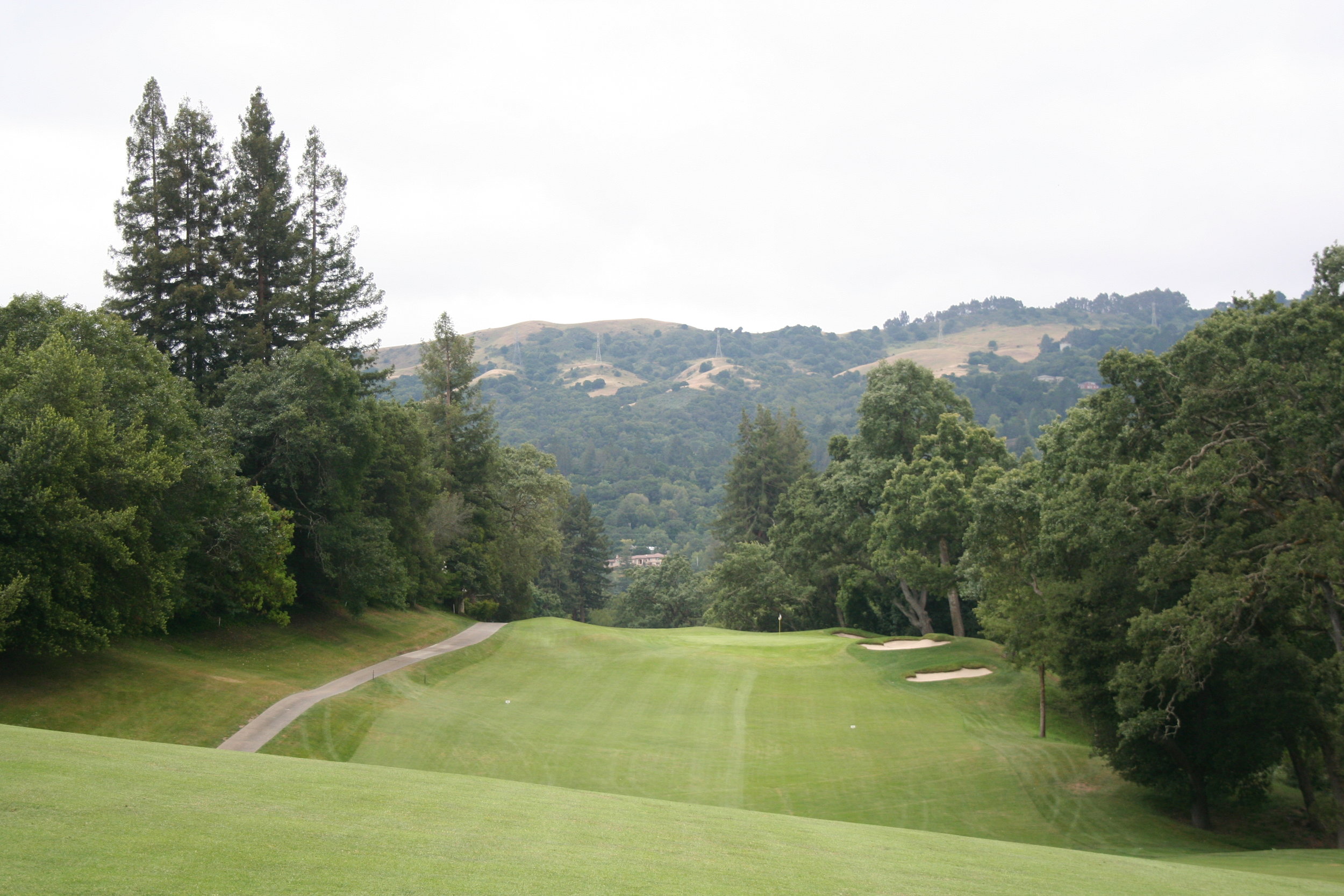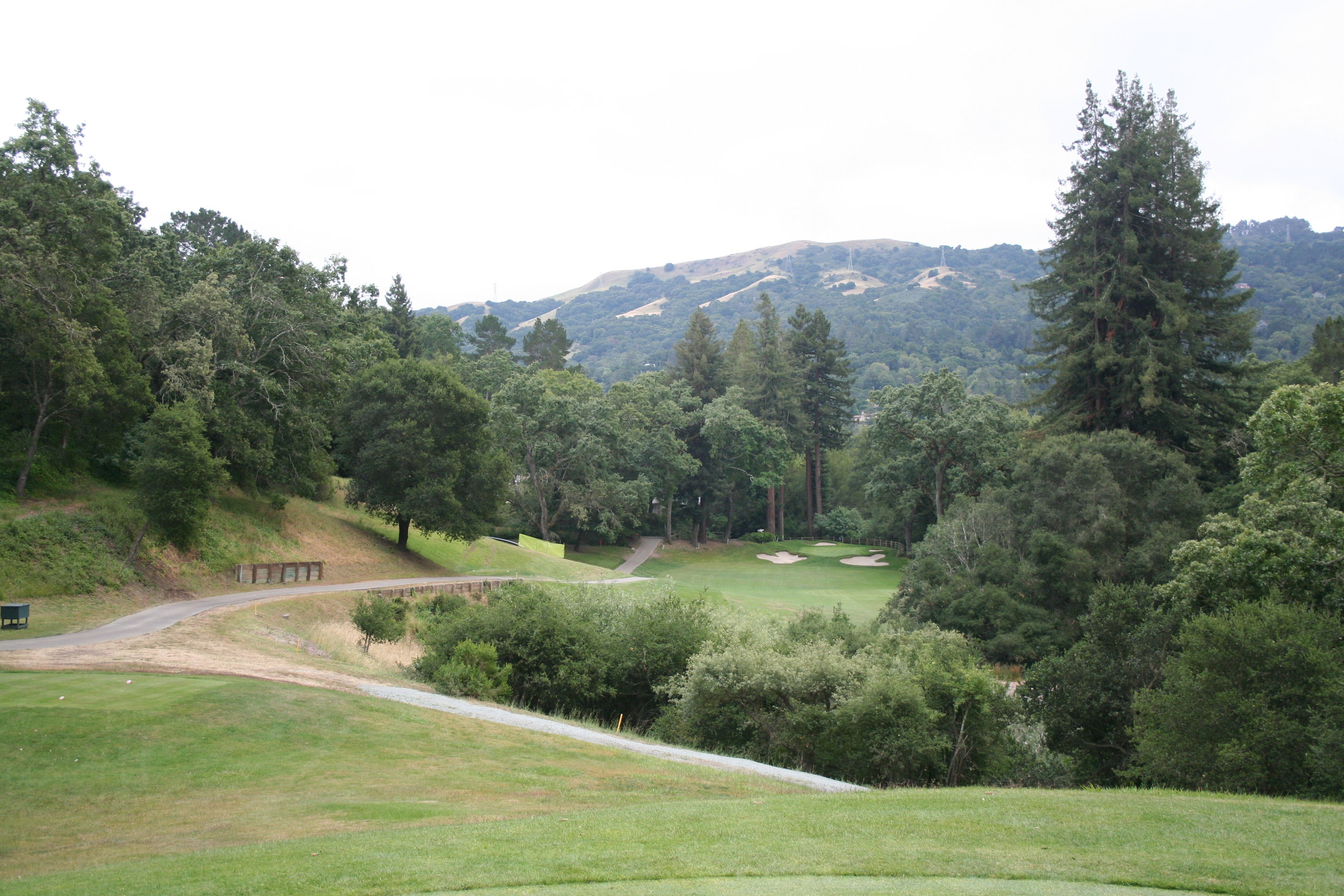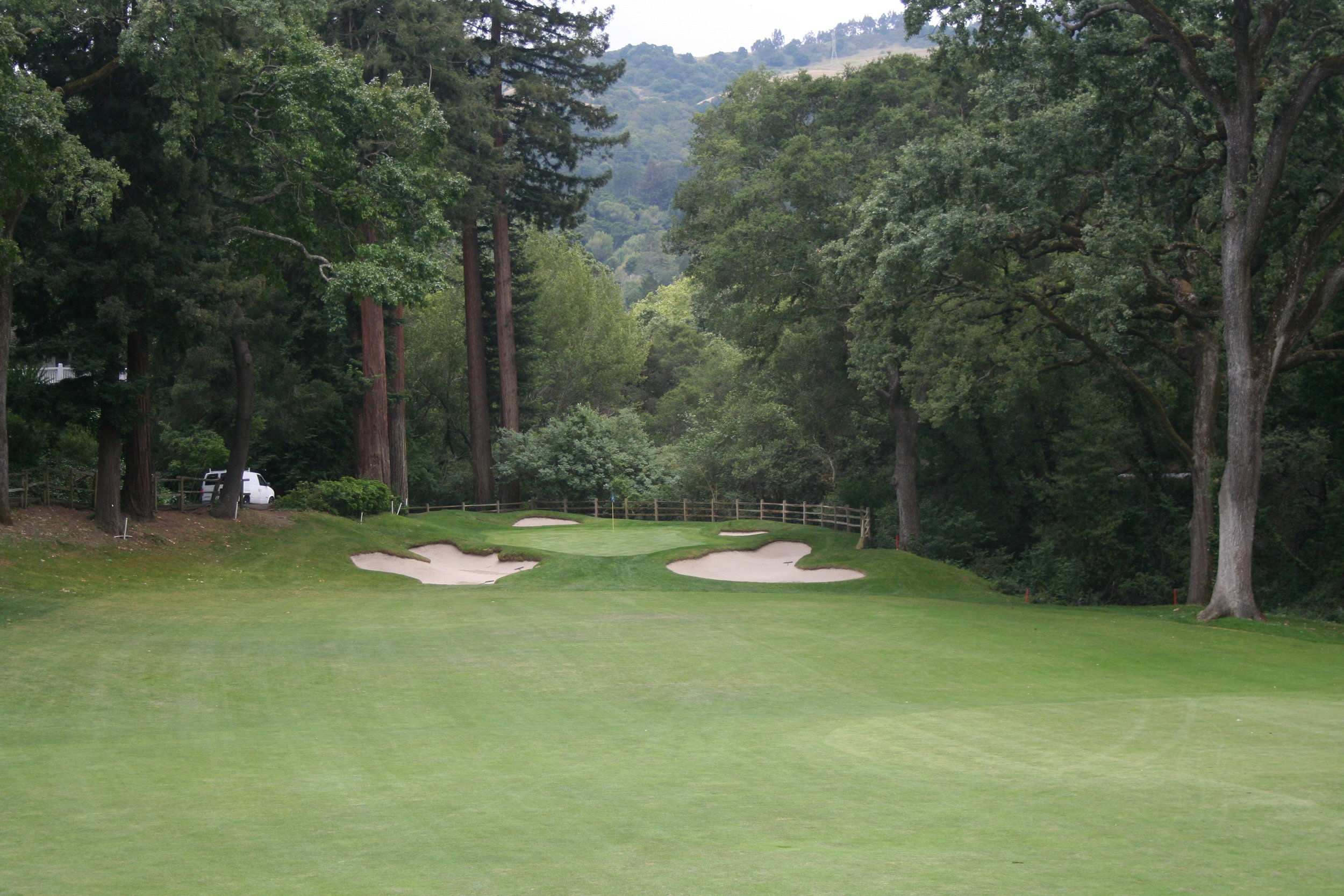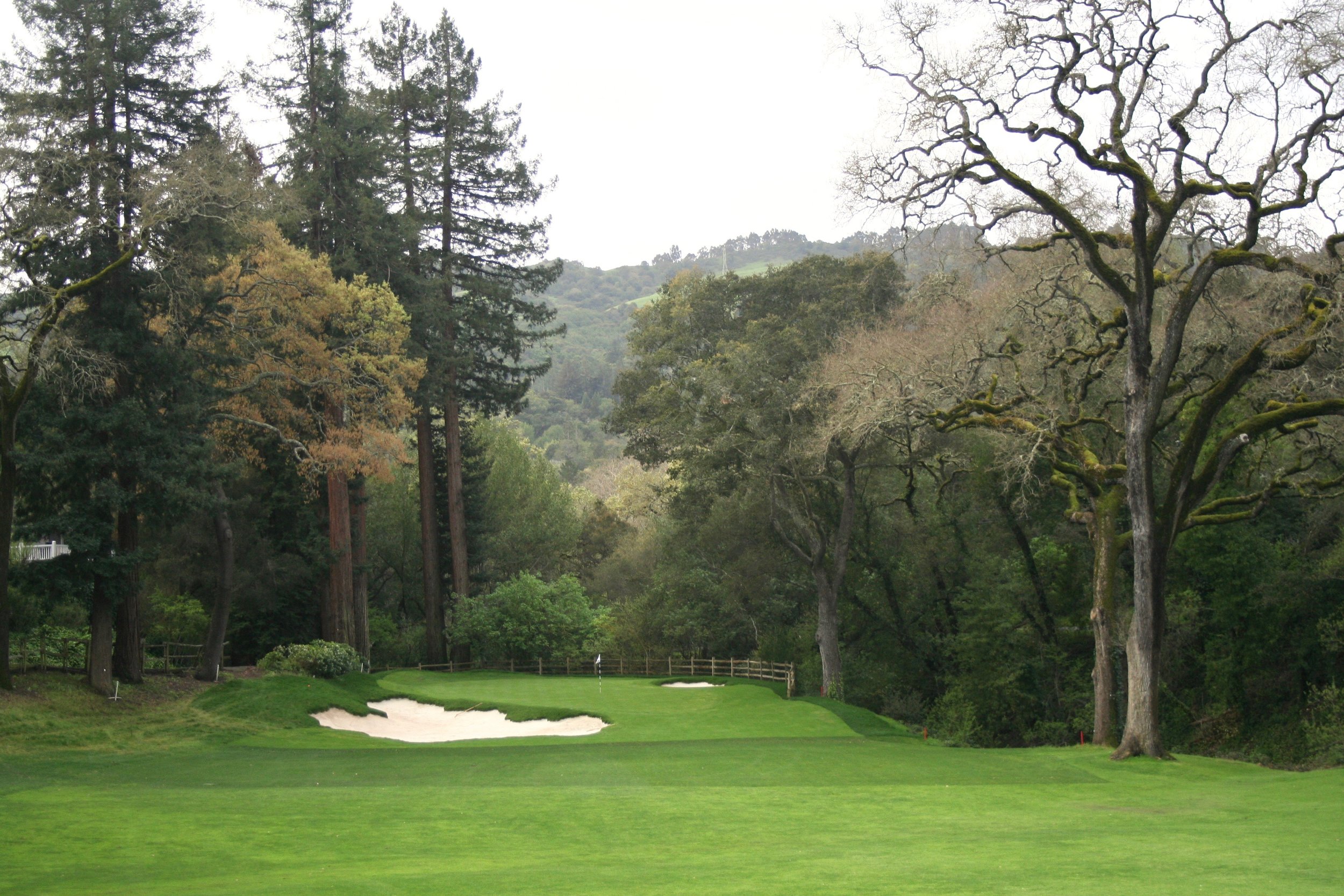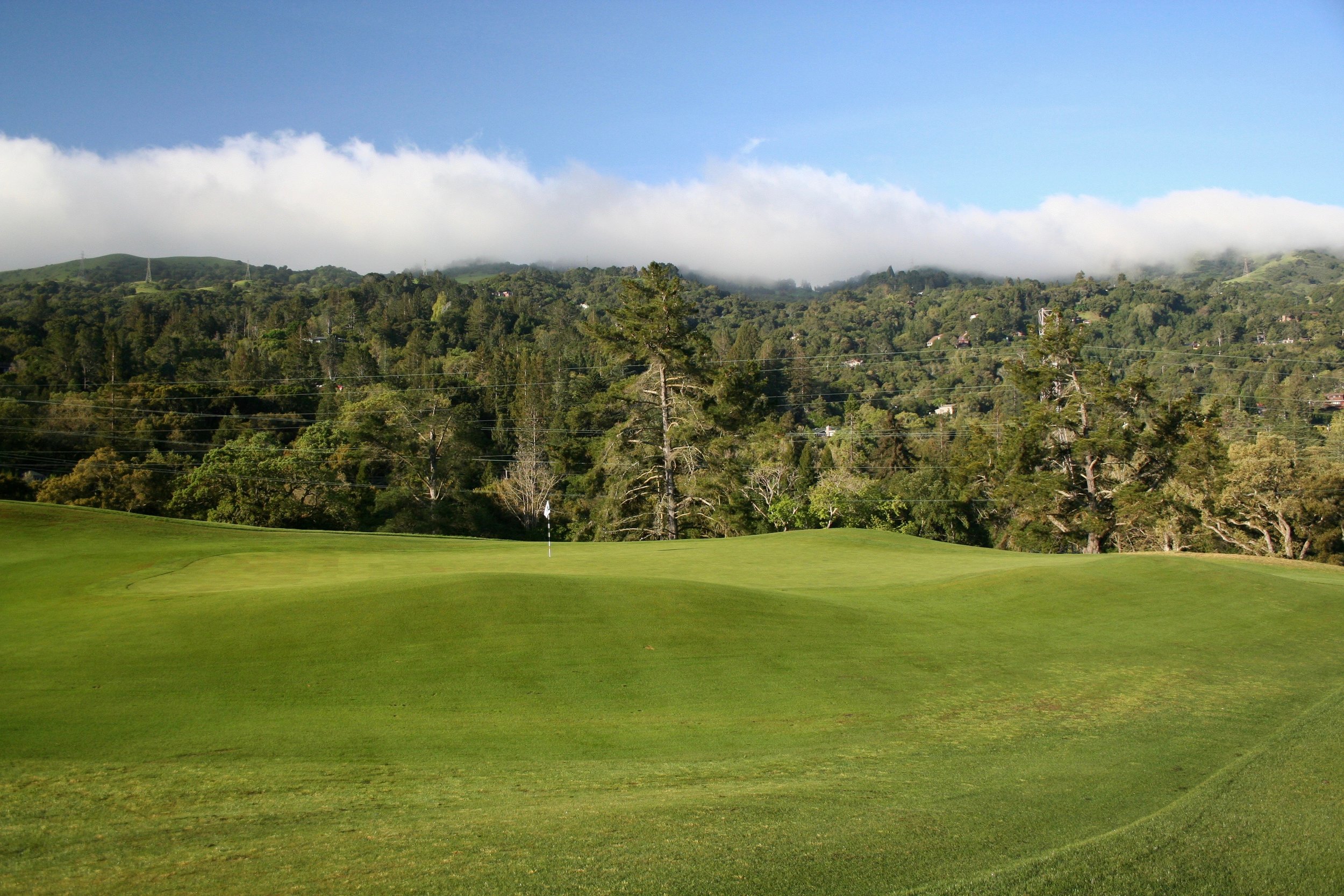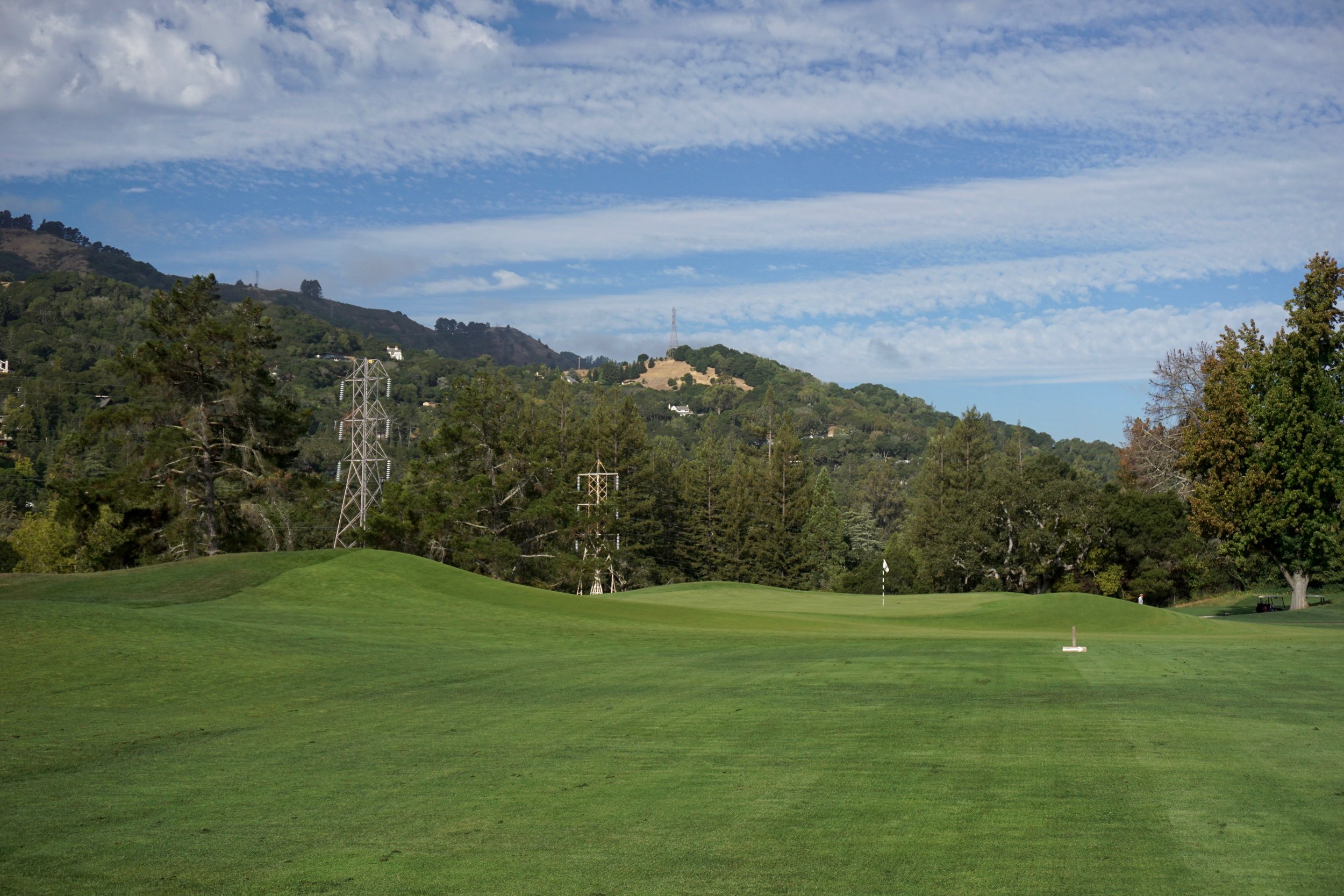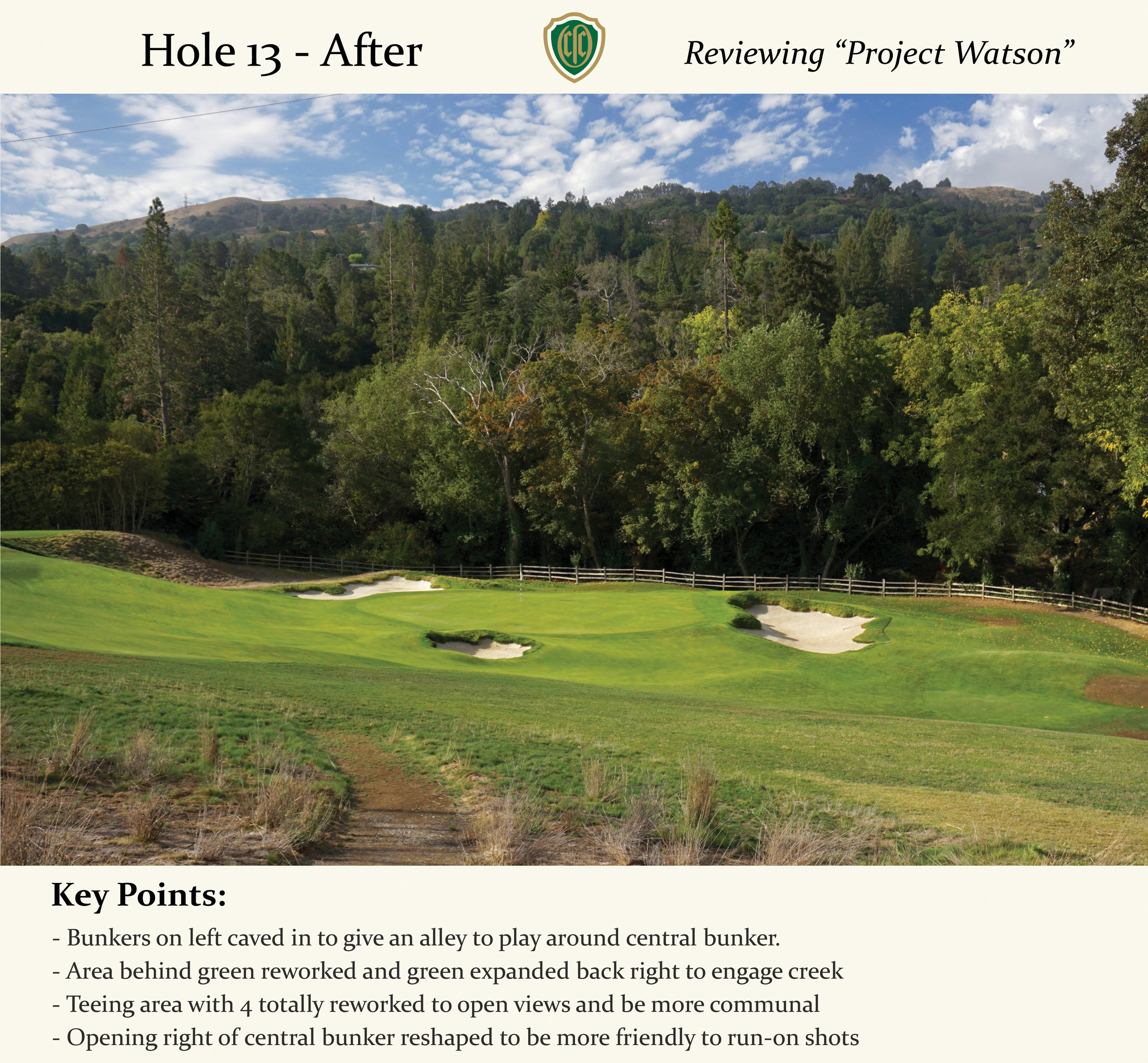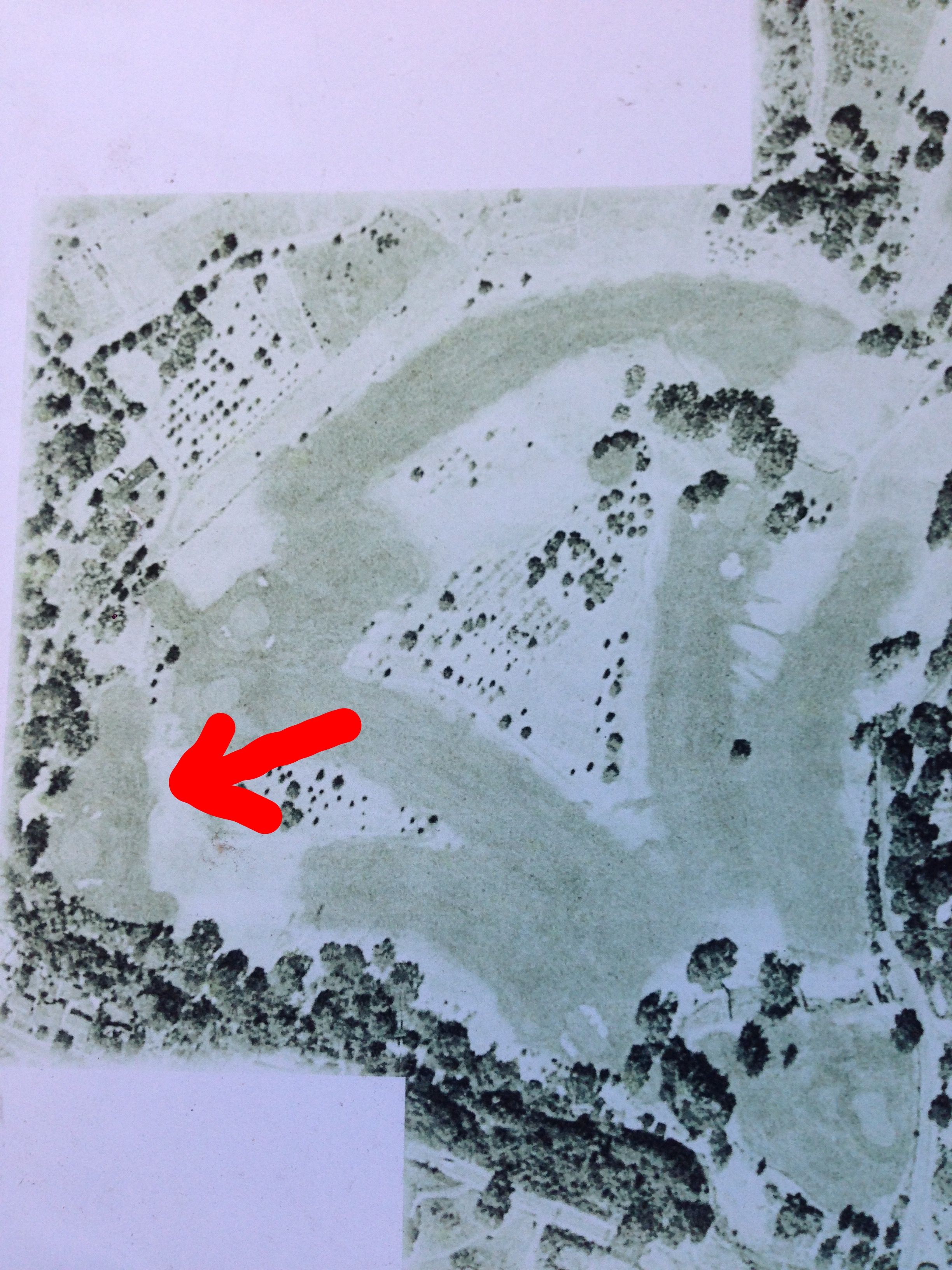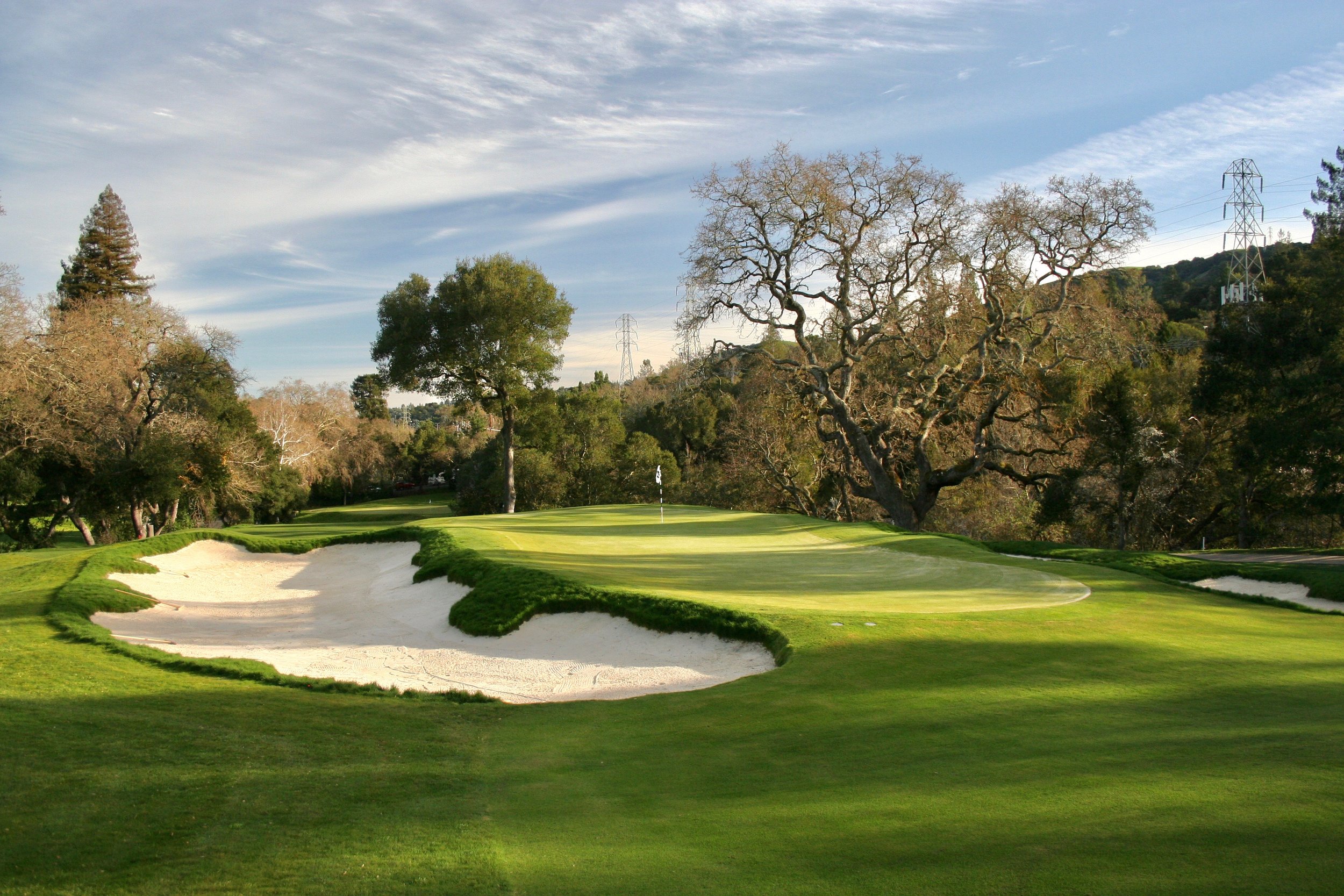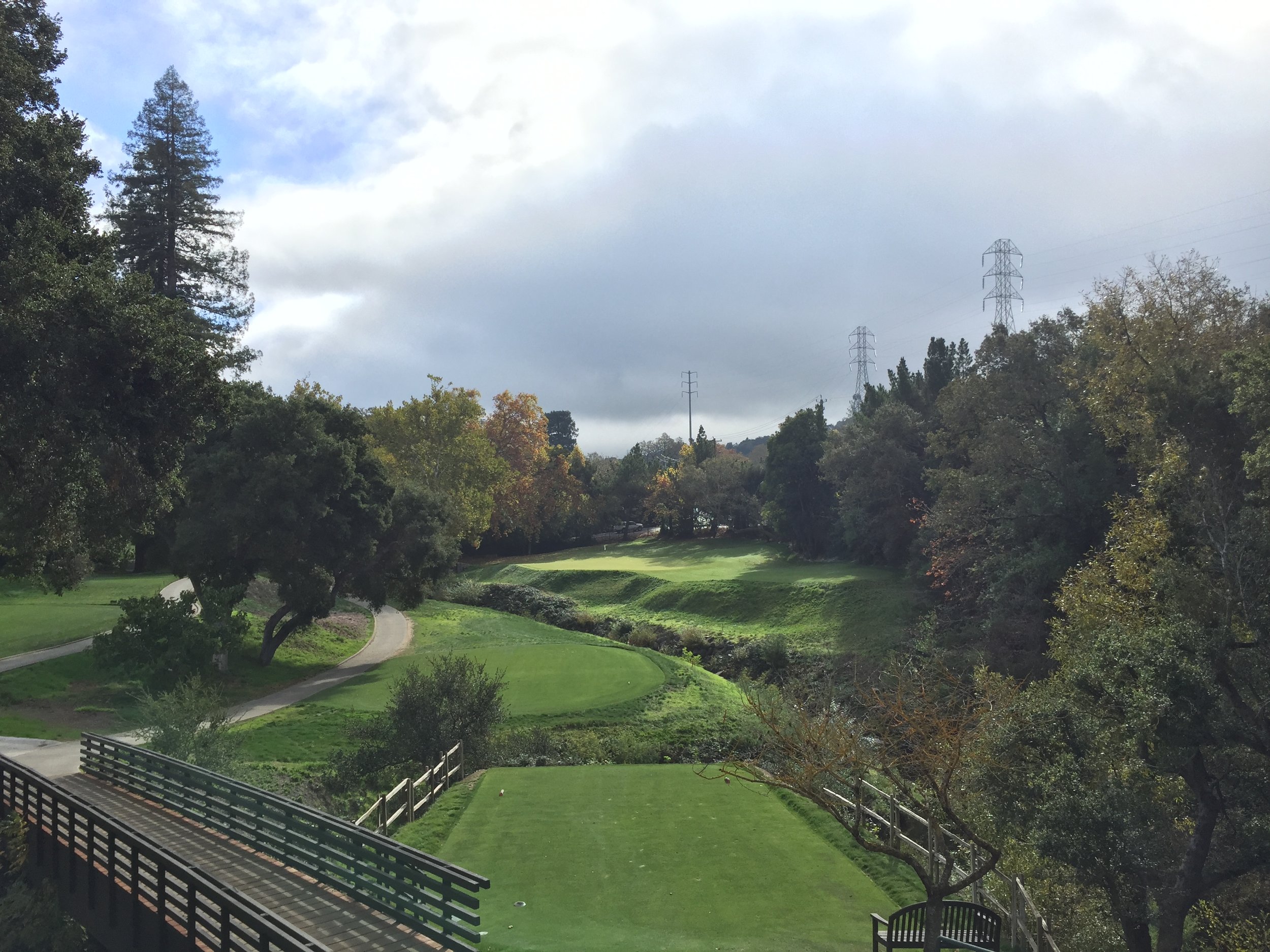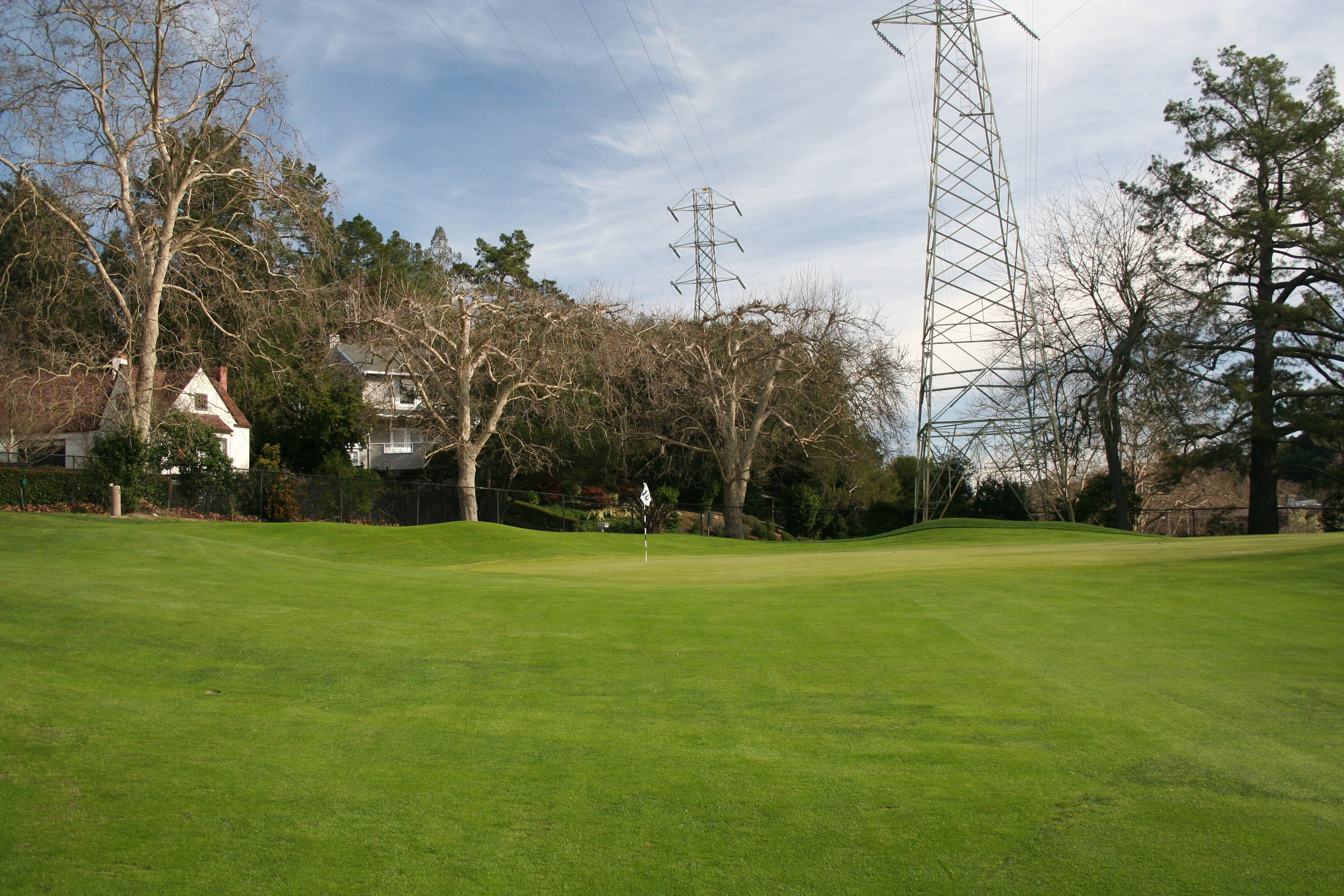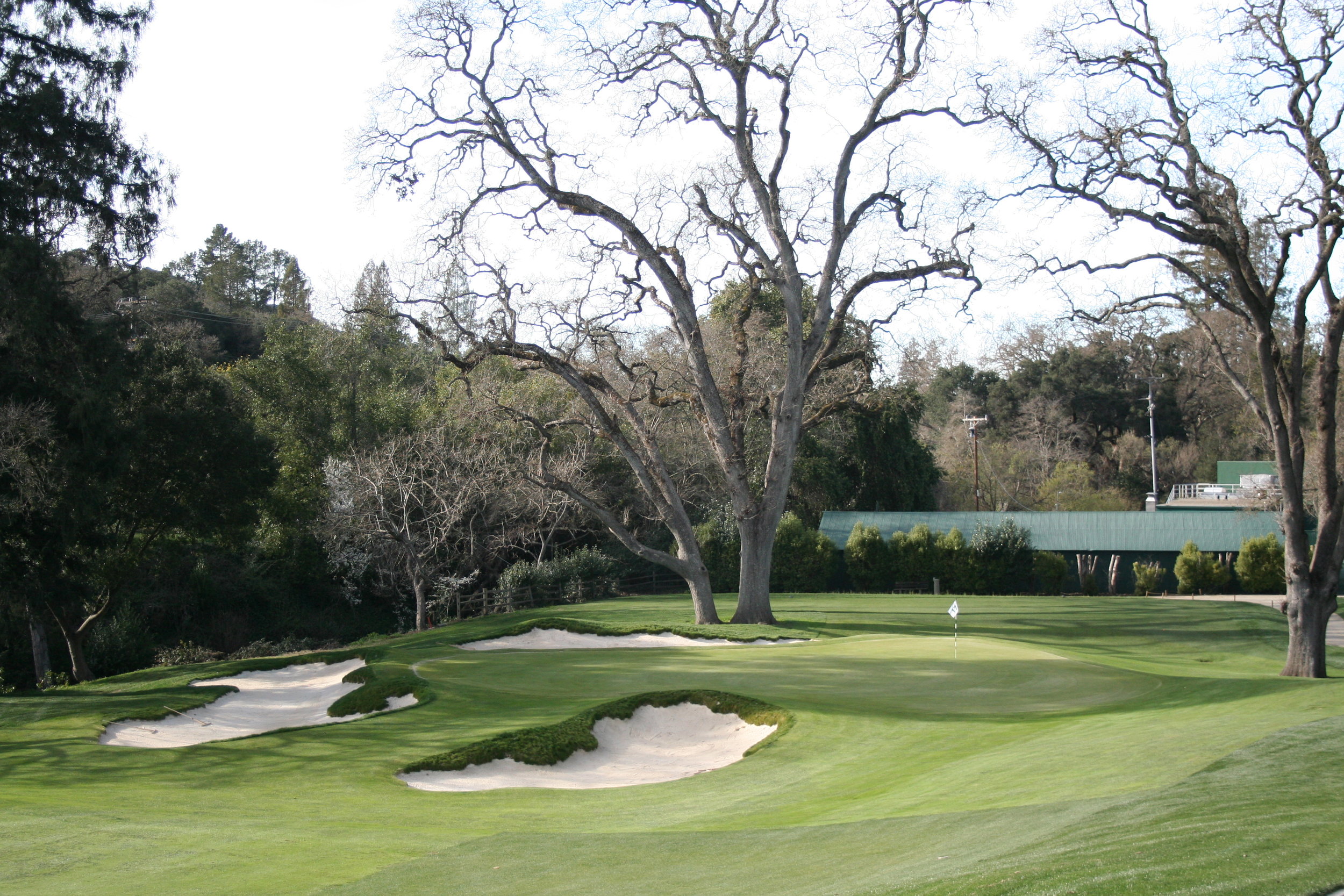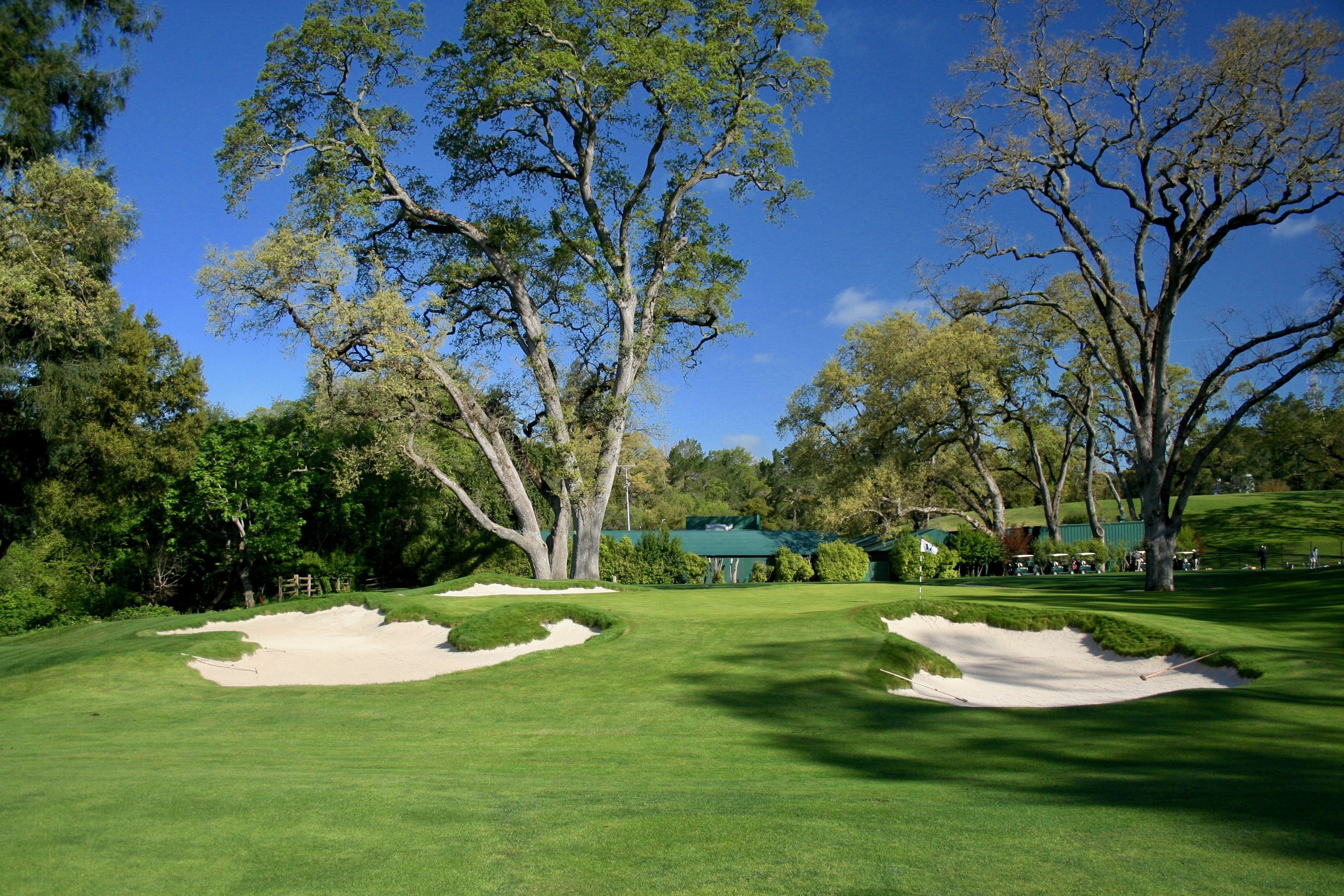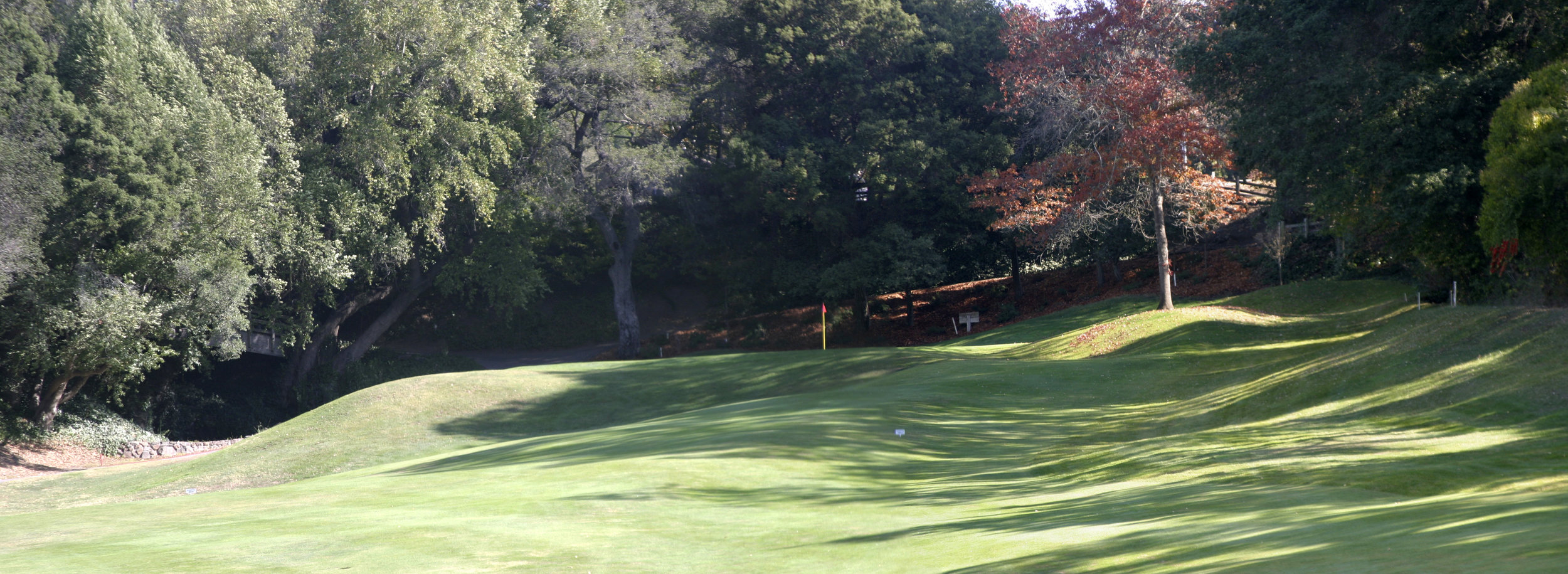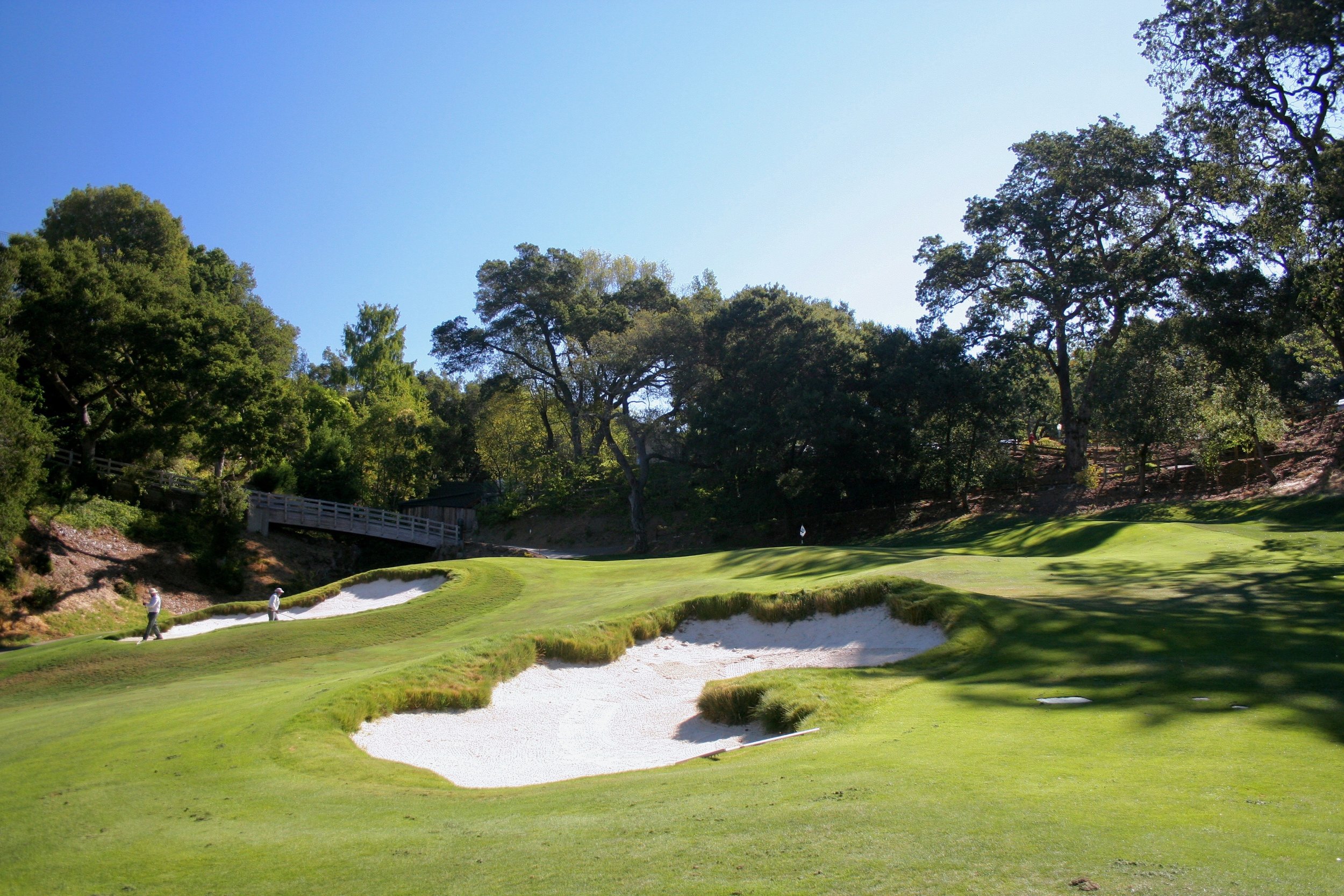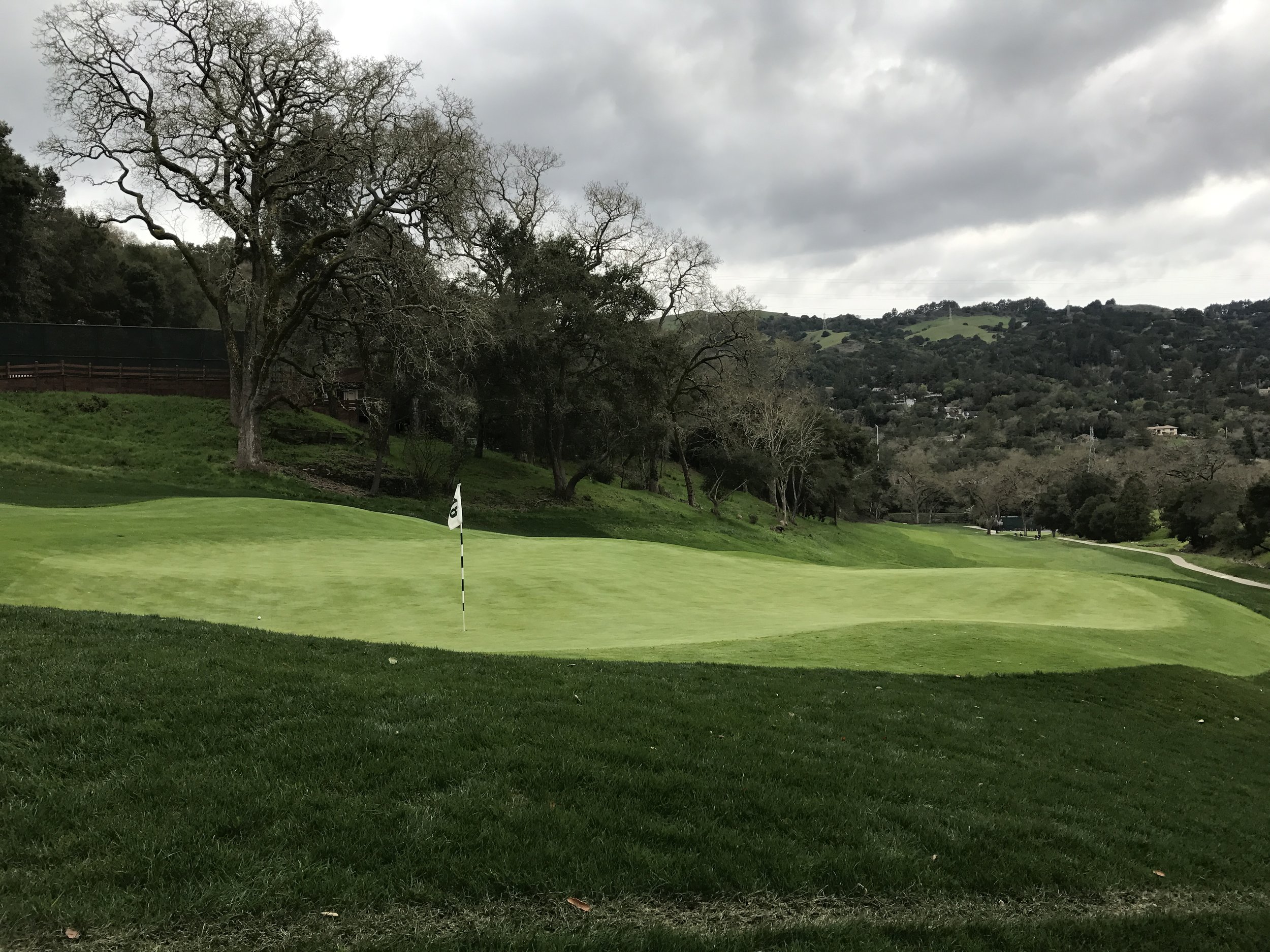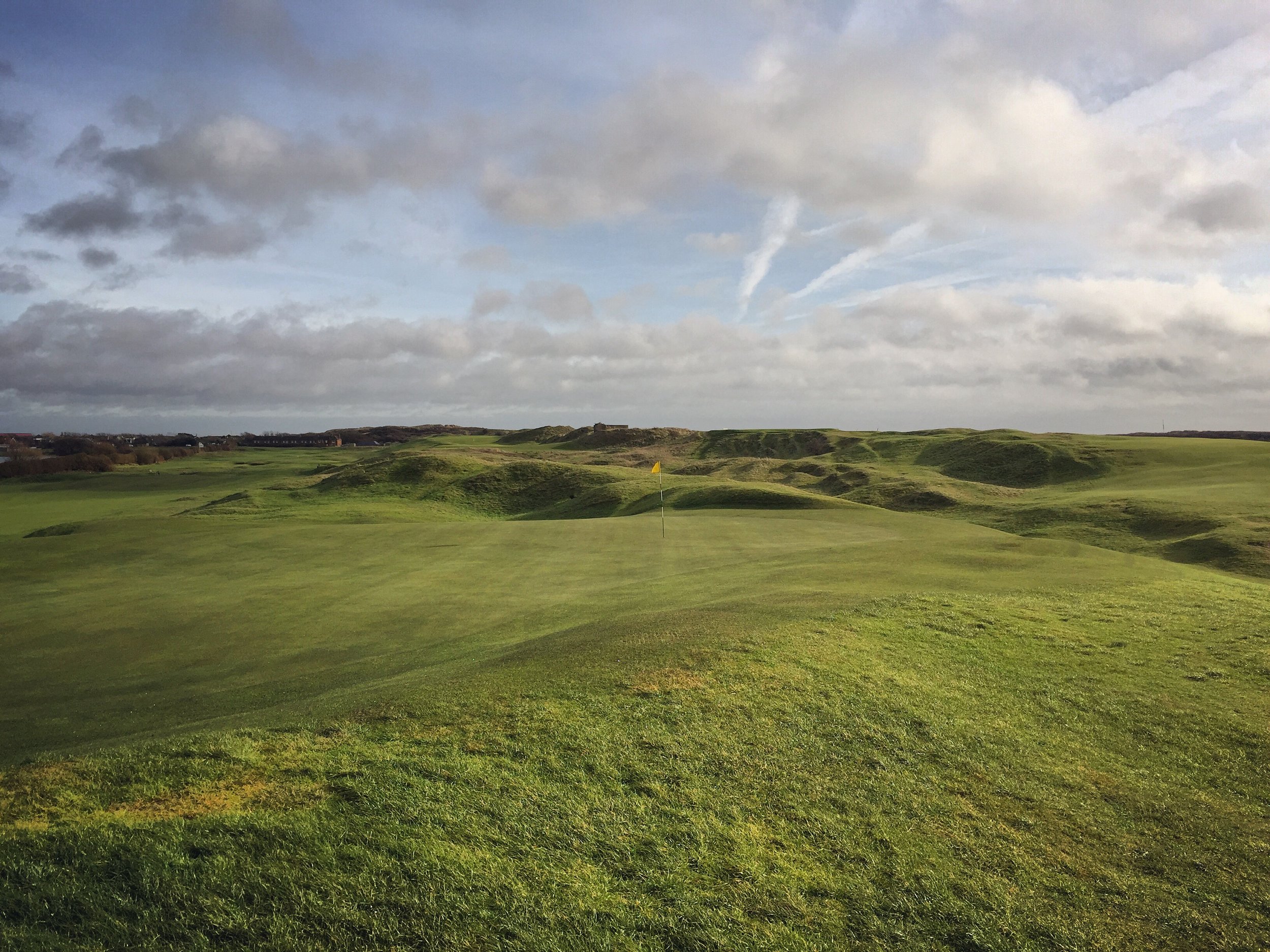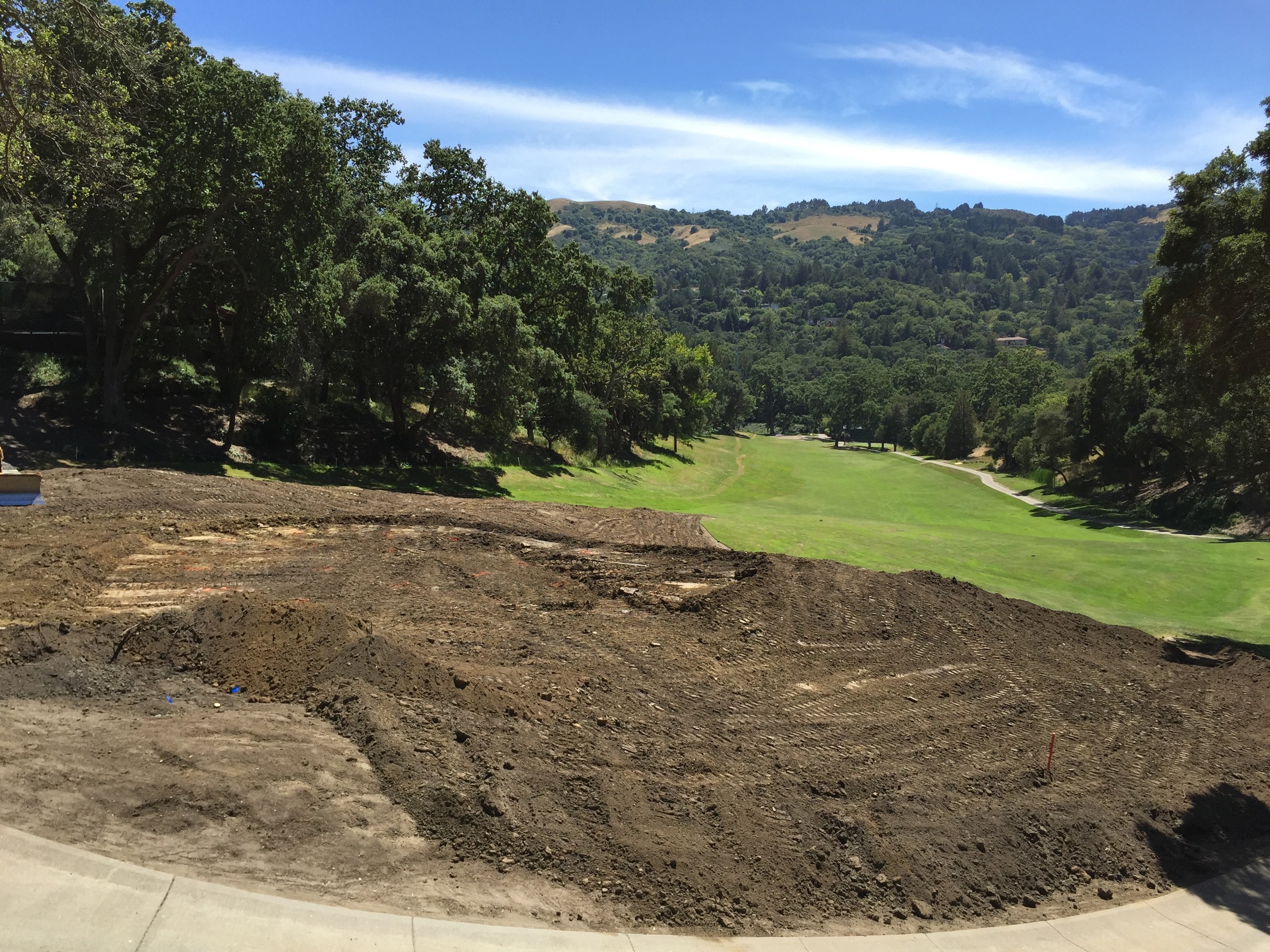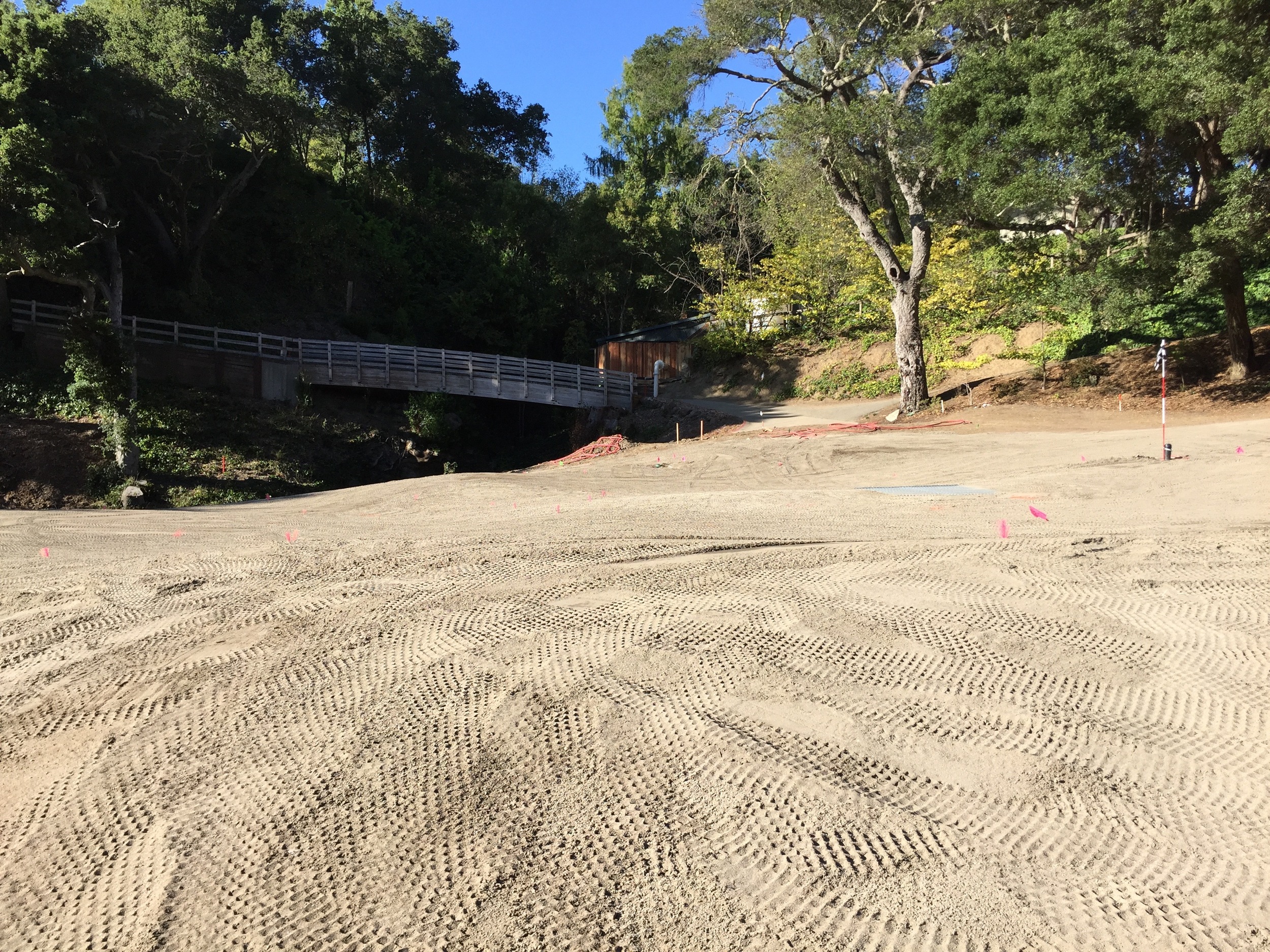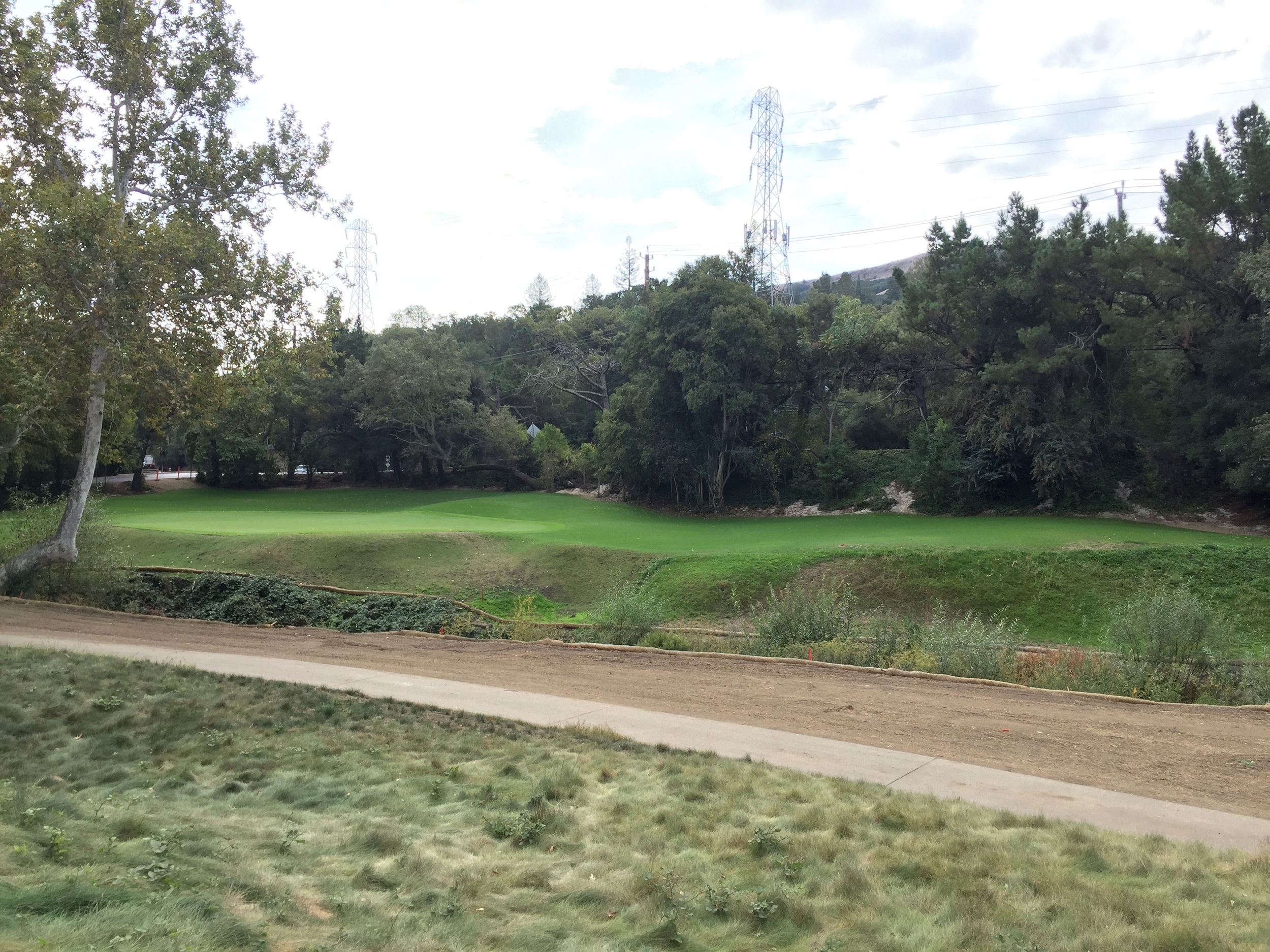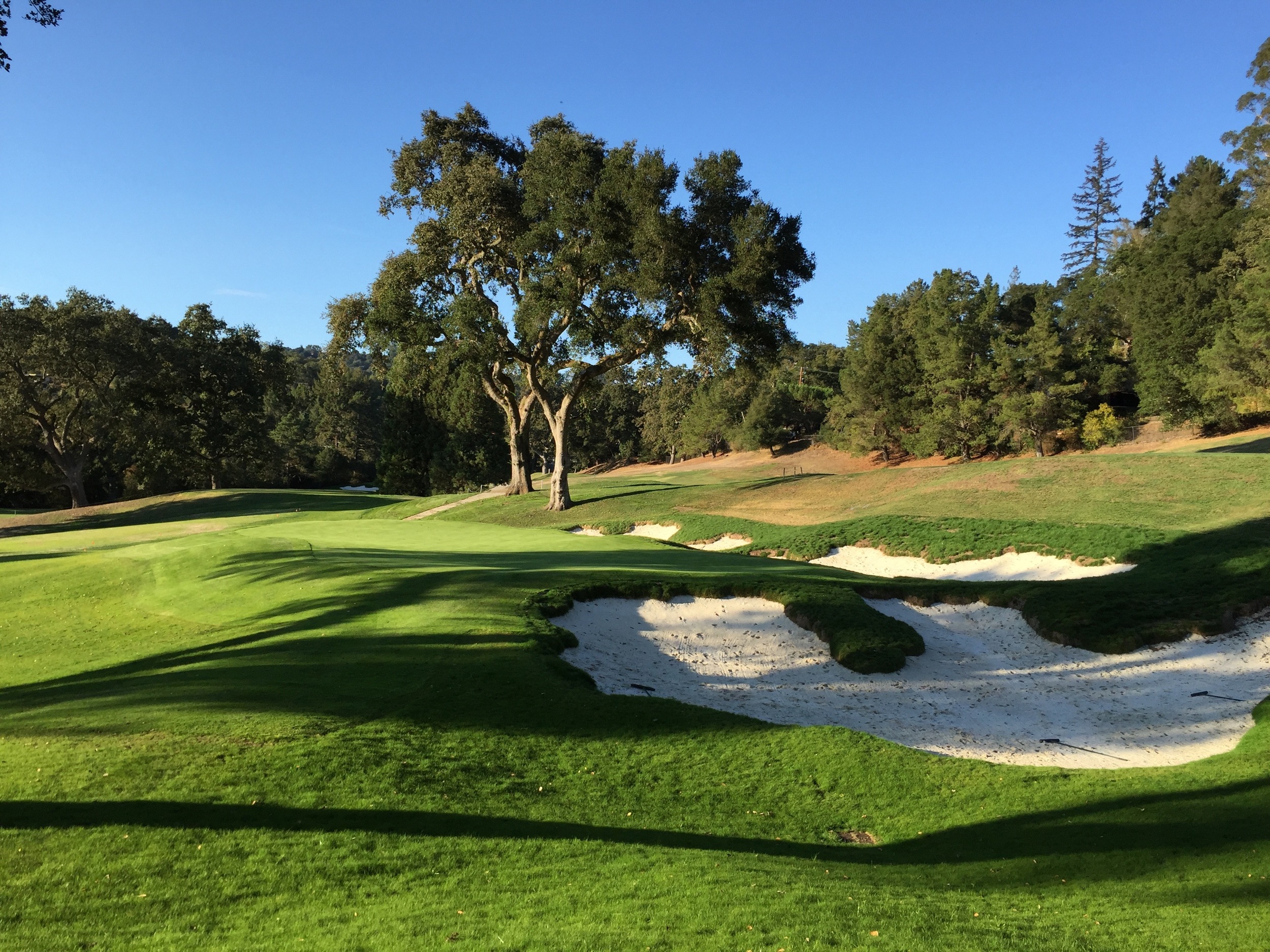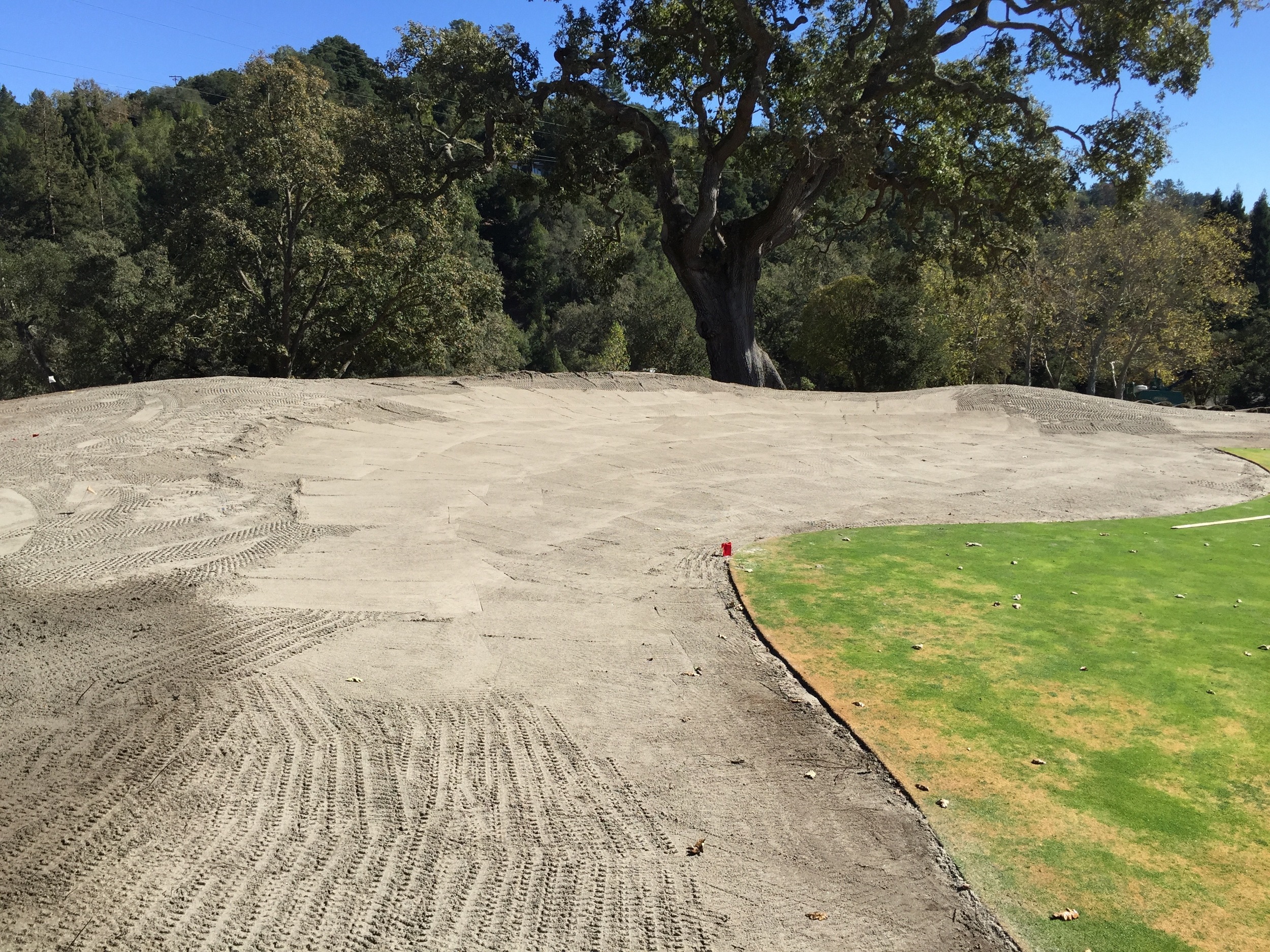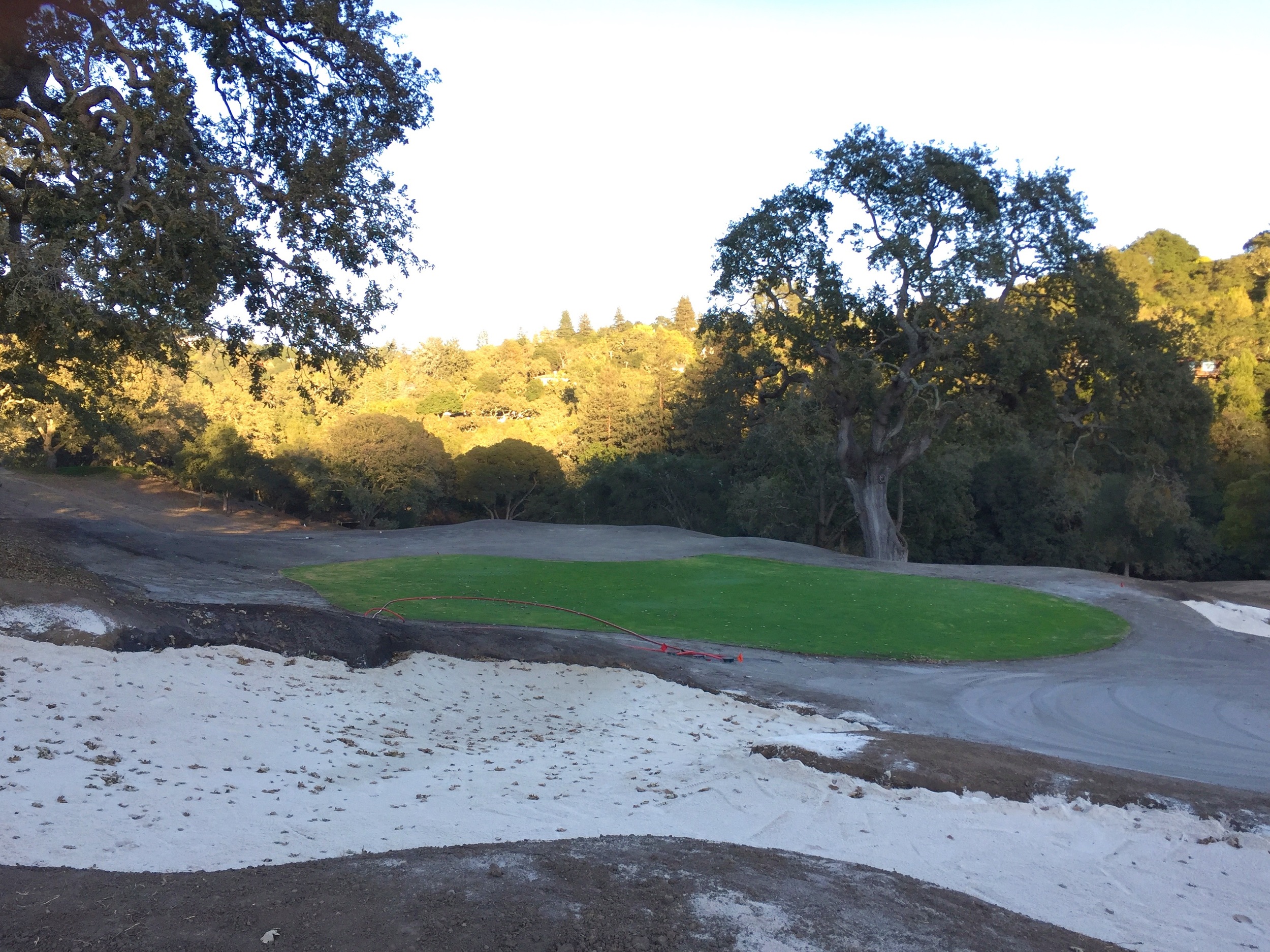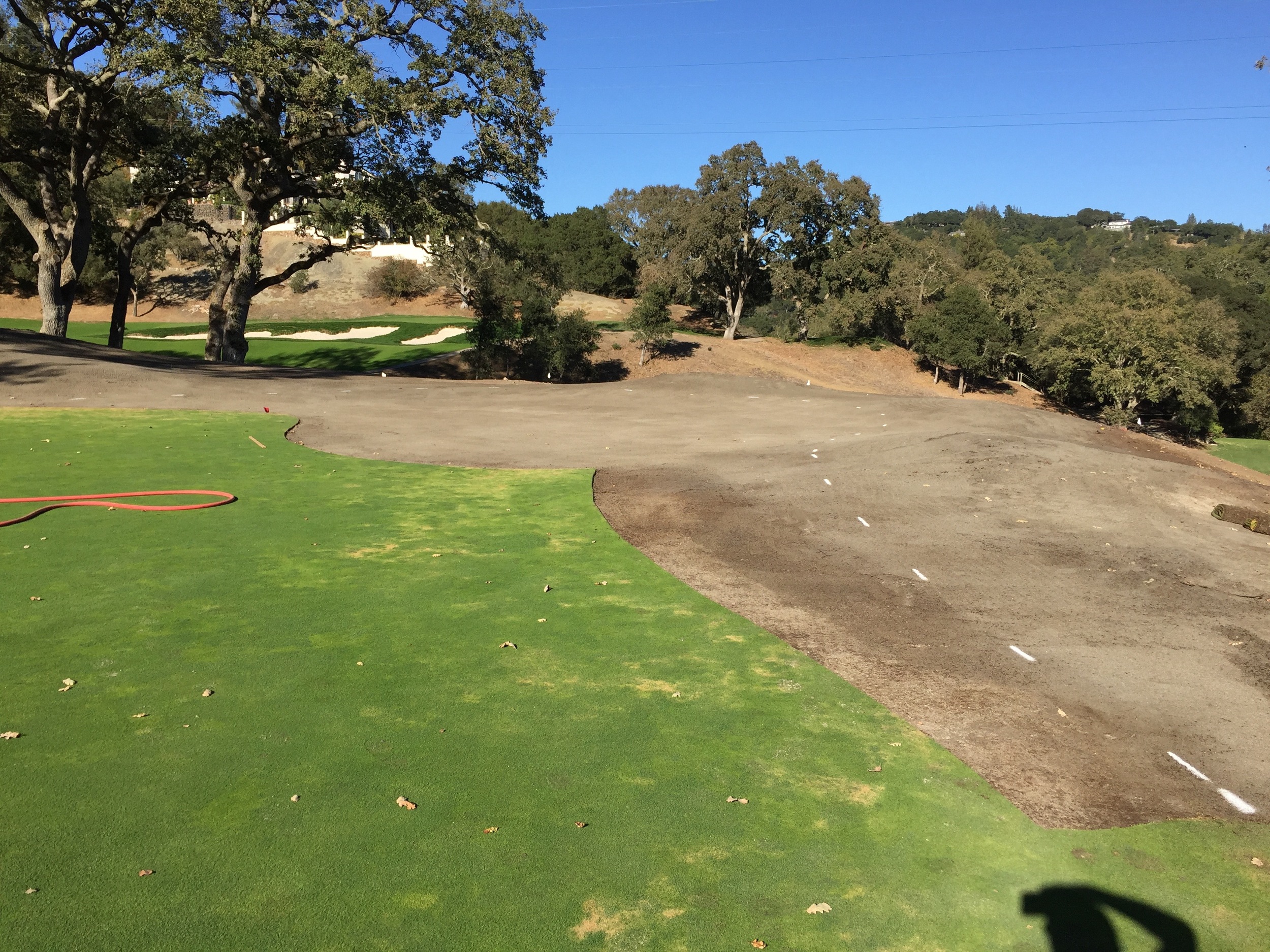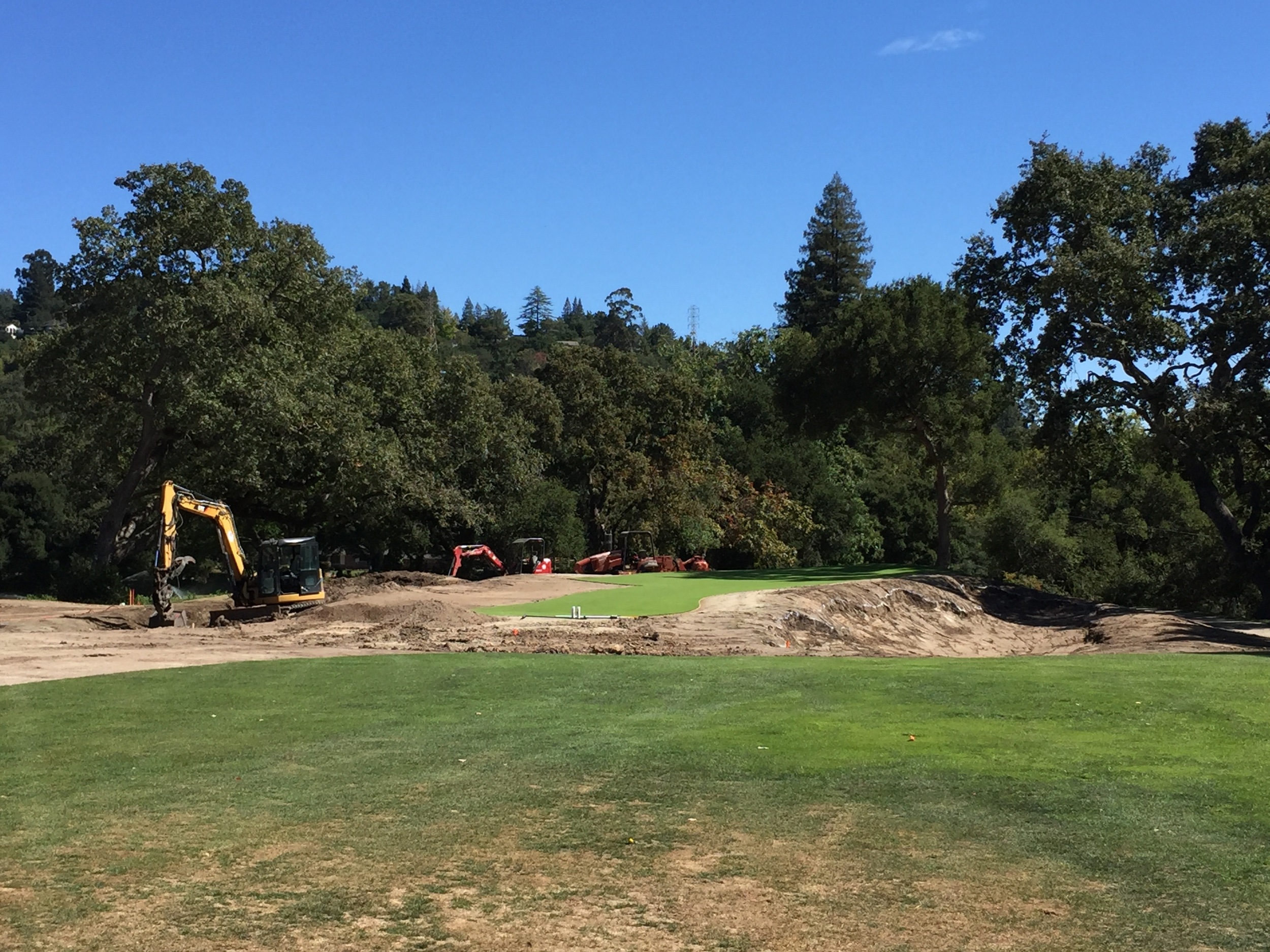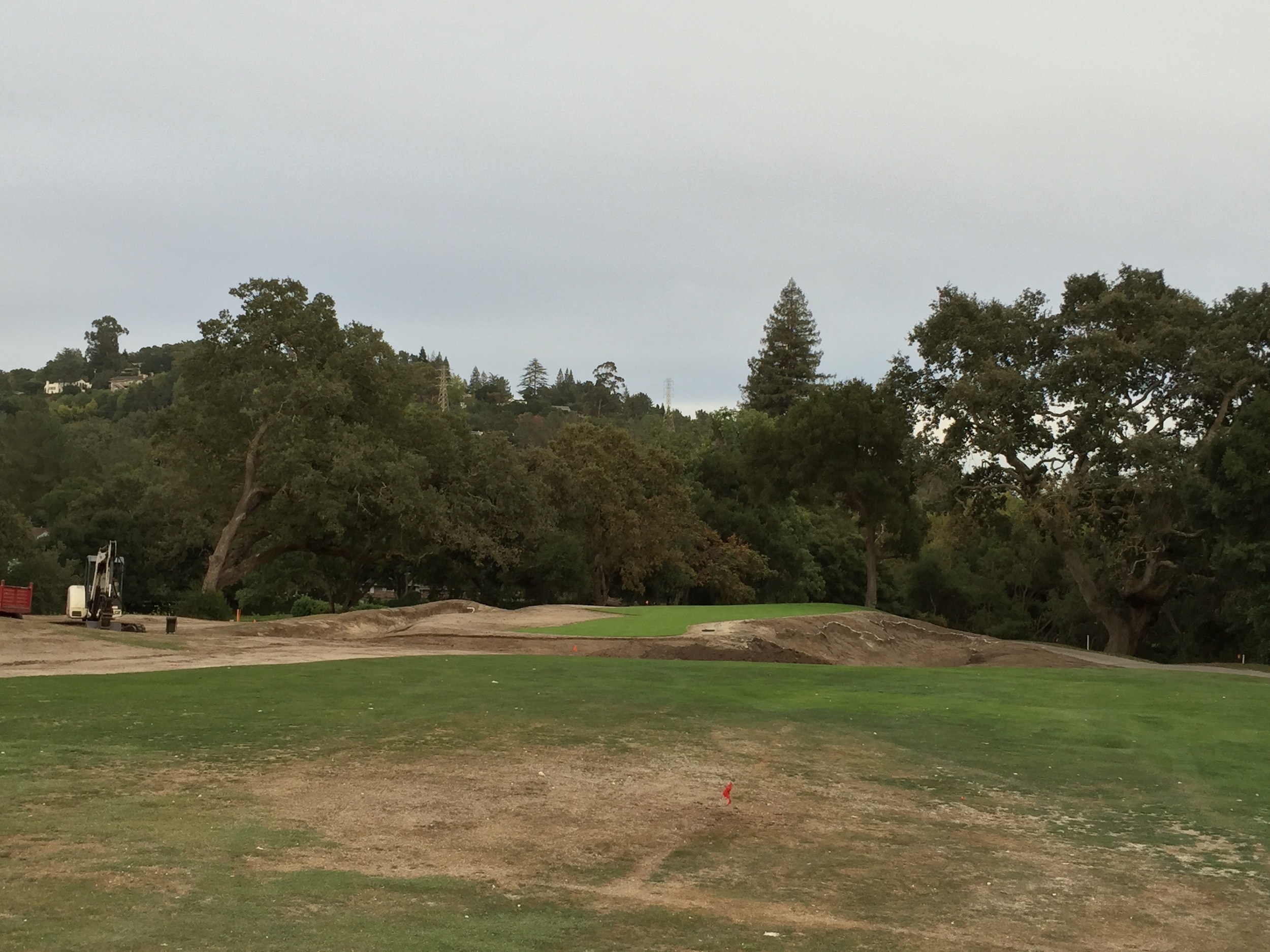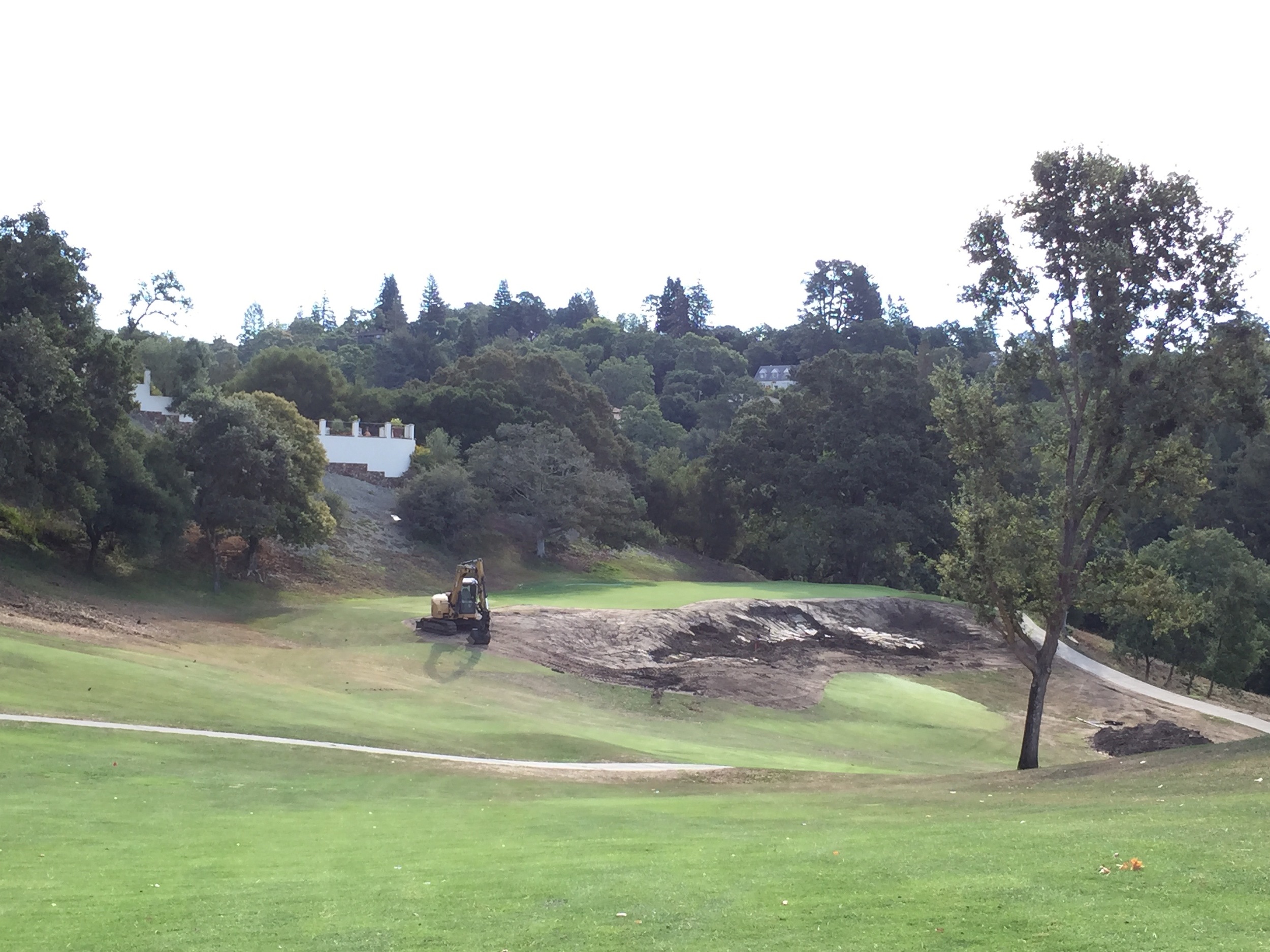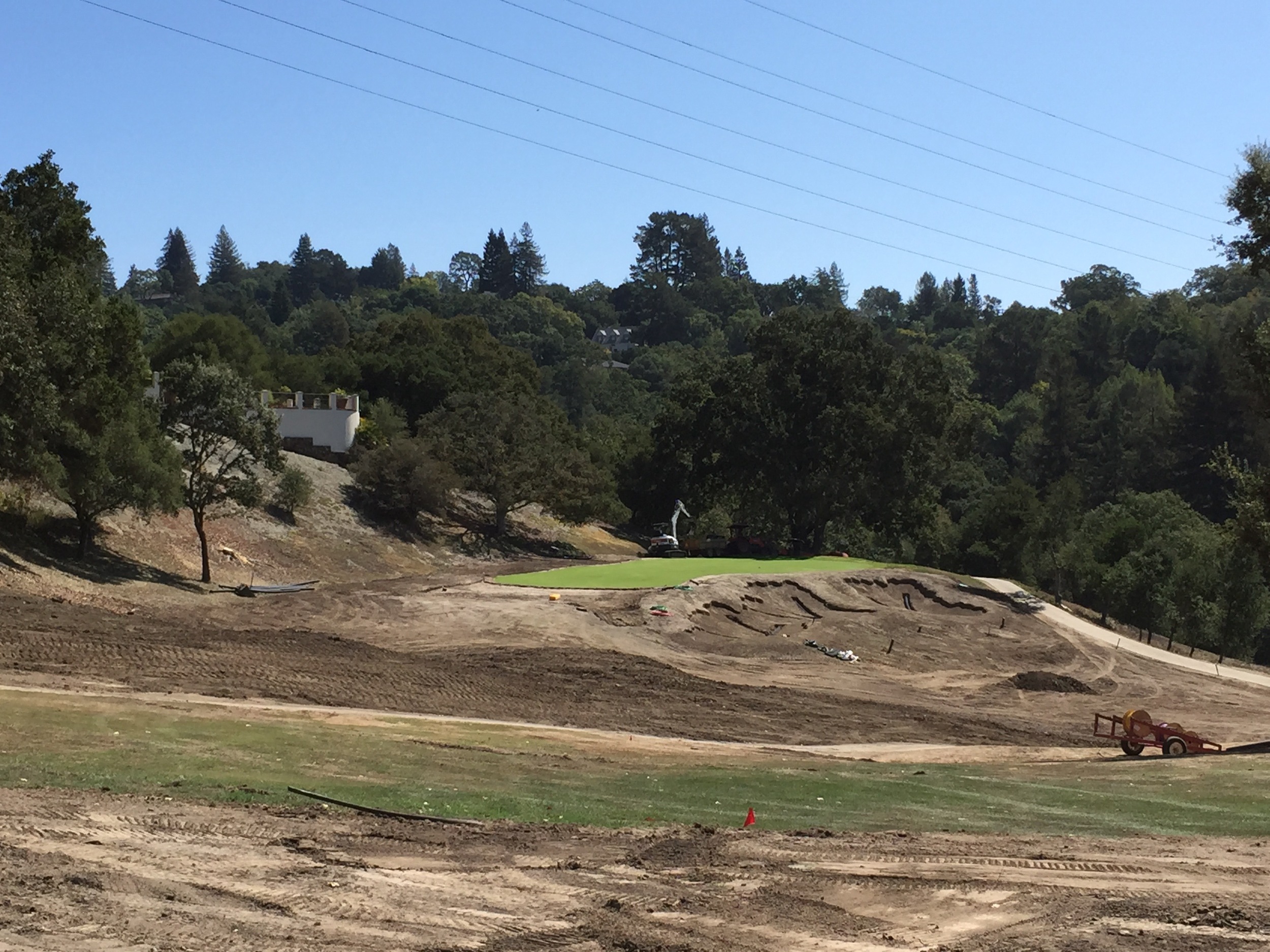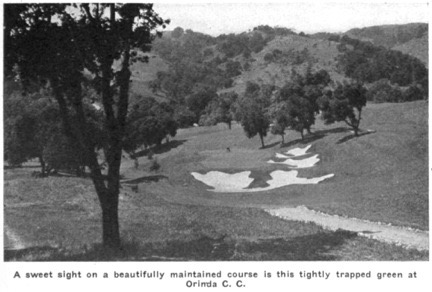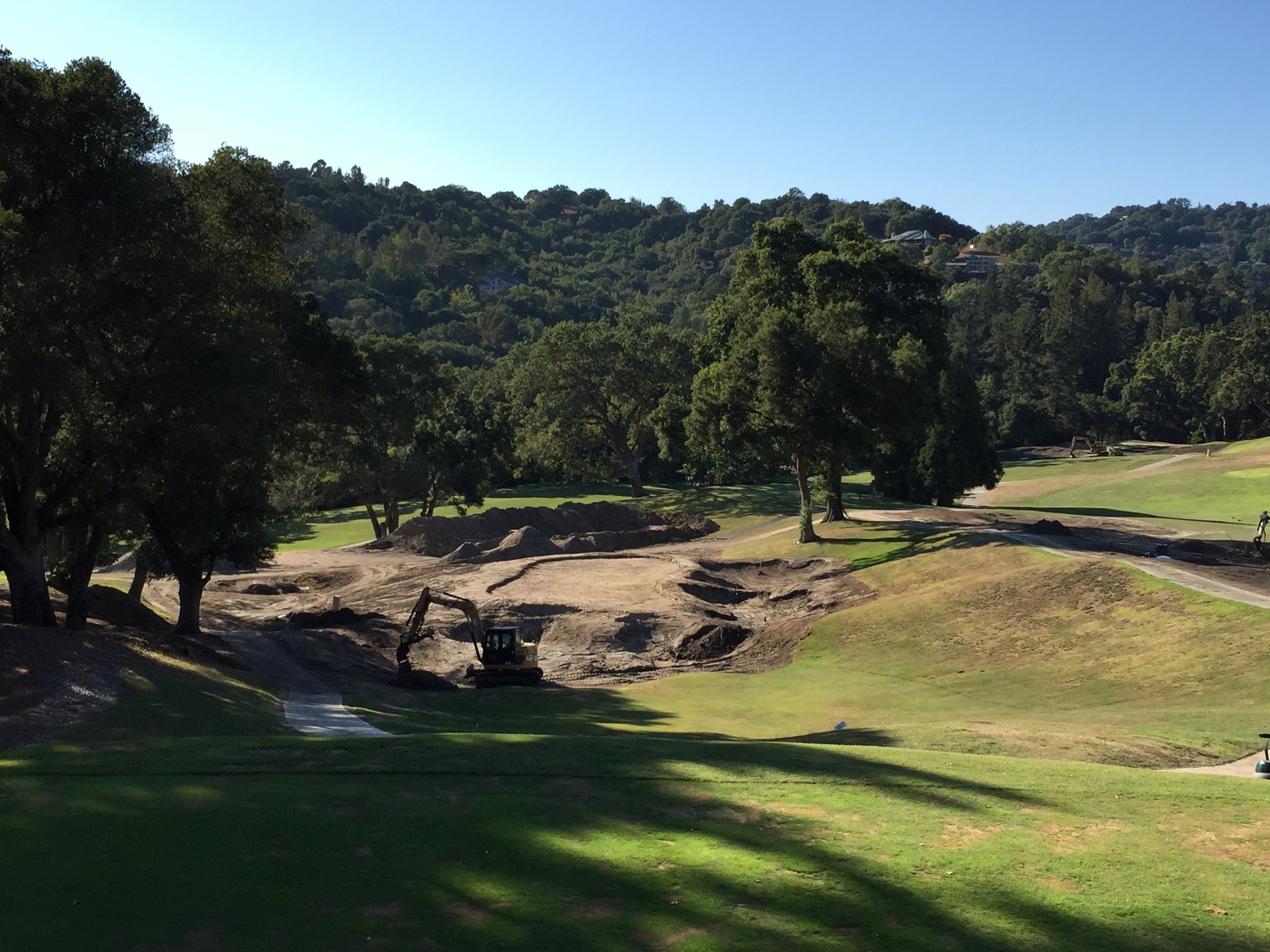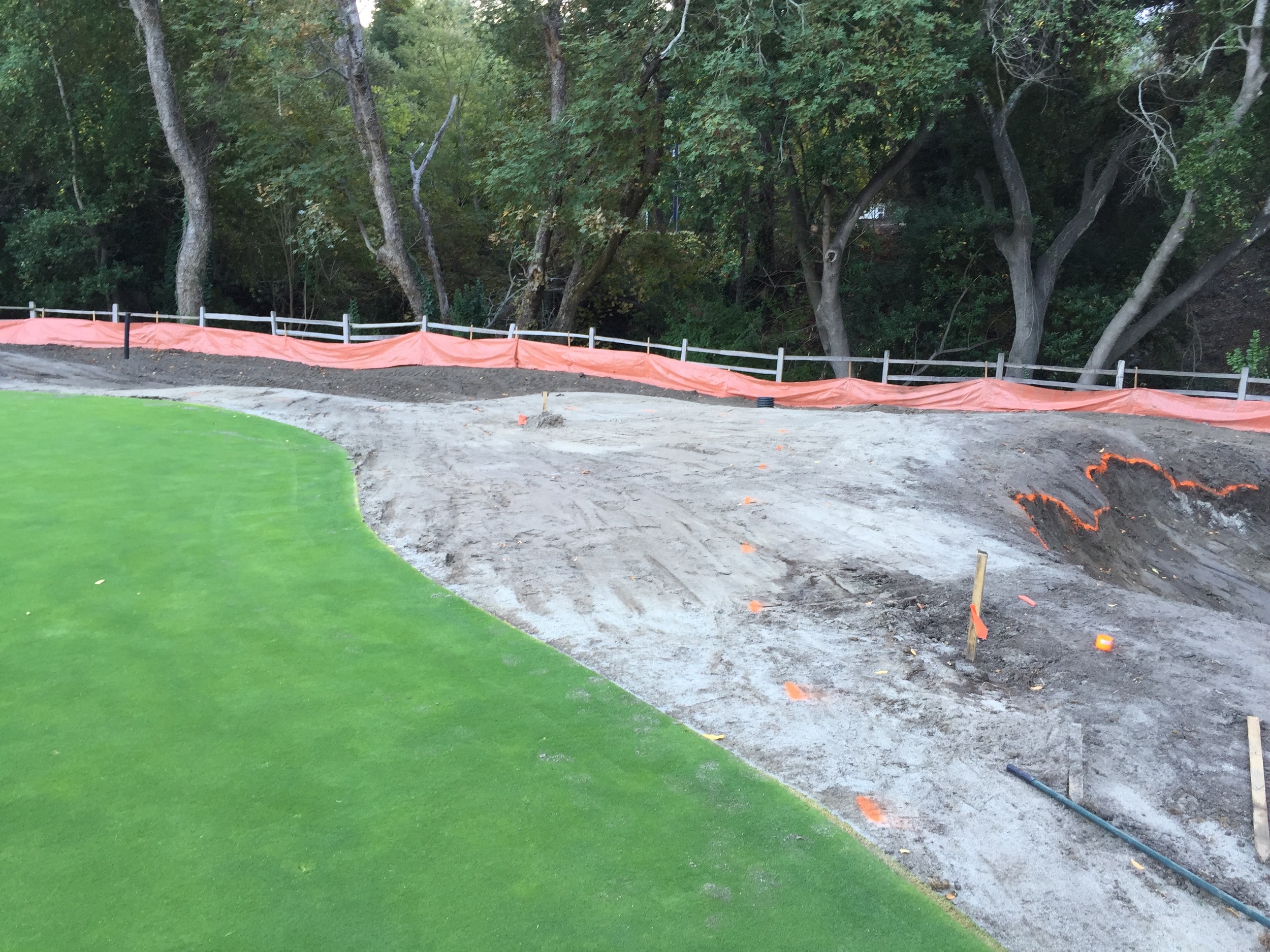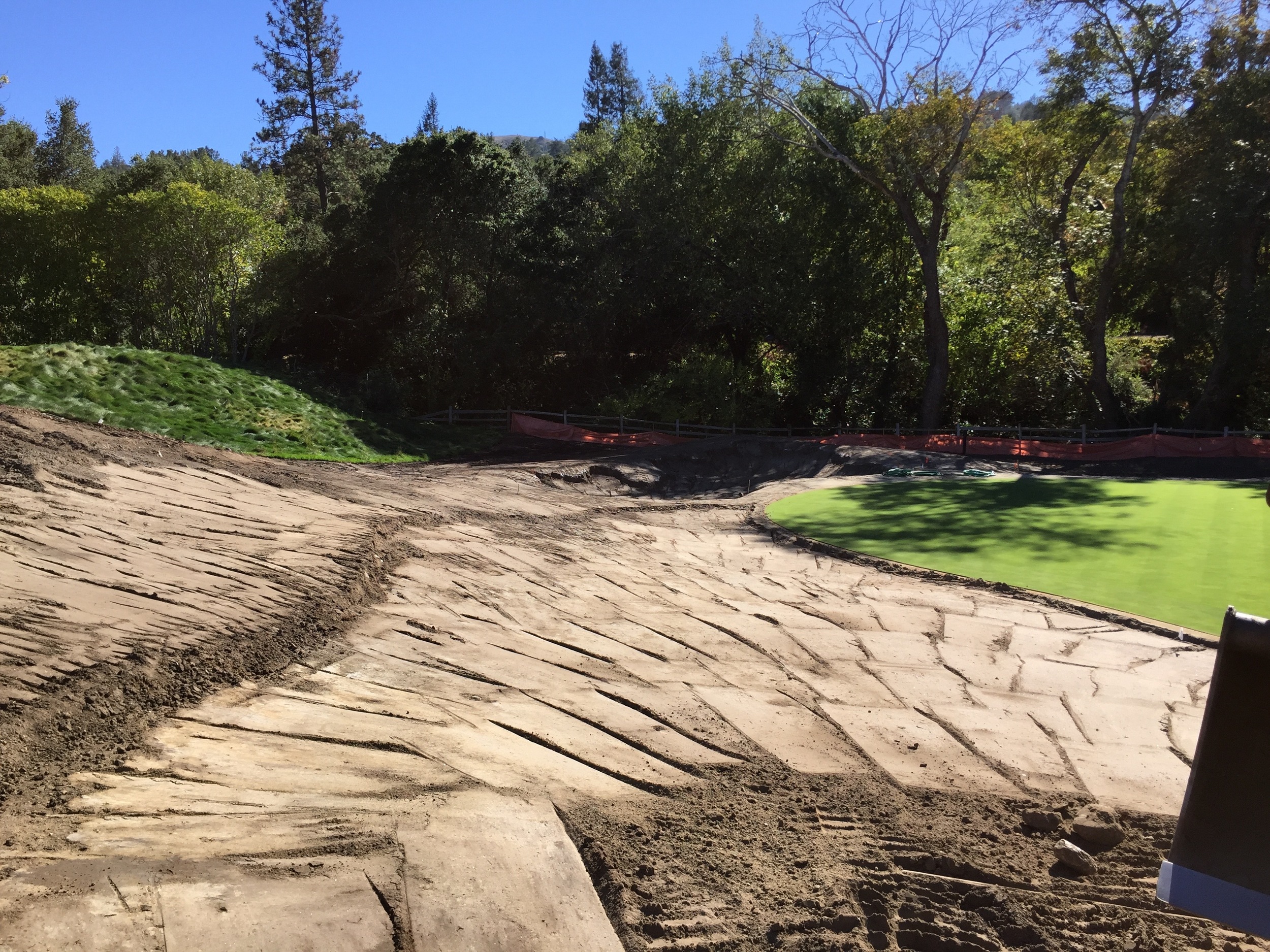I was welcomed back to the Home of Golf with a full rainbow. Not sure how much I believe in "signs," but this sure felt like one.
In early July, I was lamenting probably not taking a golf study trip later that month, figuring I just didn't leave myself enough time to organize an itinerary and make enough advance contacts. While sipping my morning tea and watching the final holes of the Scottish Open, I thought to myself, why don't I just go back there? Quickly dismissing it as kind of a crazy and unrealistic idea, I kept thinking about it, and the idea eventually got to the point where it ceased being crazy. This was doable. I knew the country, I knew that Scottish courses were easy to access, and I knew that even if I couldn't get on to play, I would still be able to walk those courses in the evenings after play died down. So, exactly one week later from that idea genesis, I was in the airport watching Jordan Spieth wrap up his dramatic Open title while holding a ticket bound for Edinburgh.
This was a big chance to see most of the courses on the West Coast that I had missed during my year spent studying at Elmwood in 2010, and it would it would also give me an opportunity to reconnect with a number of people I had gotten to know while there, especially those around St Andrews. The courses and the scenery on the west were wonderful, and the architectural value of Prestwick alone made the whole trip worthwhile. Coming back to Fife and St Andrews for the second leg of the trip was going to be interesting though and perhaps even a bit emotional, as it was an area I loved but one that I had sort of left on quick and bittersweet terms with feelings of regret for what I didn't (or couldn't) do during those previous 8 months.
On the way back across the country following my ferry ride from the Isle of Arran, I stopped off in Cupar, the place I called home while living in Scotland, to walk around its old stone streets and reminisce about the blue collar, Central Fife town. Most of my days spent here were dark and cold (and perhaps a bit lonely), but on this day the bright blue skies were warm enough to force losing the sweater. Perhaps it was the summer weather, but I couldn't help letting my thoughts drift back to those earliest days in August 2009 and all the sheer excitement I had in fulfilling that lifelong dream of finally making it to Scotland. I remembered that first walk down to the bus stop and the subsequent ride into St Andrews, face pressed on the glass as the links and the town came into view. As I got back into my car to head east down the A-91, it felt just like that moment all over again.
After checking into the B&B in town, I did what made most sense and immediately headed straight over to the Jigger to grab a pint and watch the day's final players come in down the Road Hole. A bit of rain arrived and kept the patrons more indoors, but it eventually started to break with a bit of sun trying to come out. With some of the town's buildings catching the glowing sun and what looked like a rainbow maybe starting to form, this felt like a good time to hop the wall and walk back down toward the tee and 16th green. Just as I arrived at the corner of the famous rail sheds where you peek around to check for players teeing off, I first took a look back toward town. What I saw was unexpected and most impressive--the "Grey Auld Toon" was fully aglow and sitting perfectly underneath a fully arched rainbow.
I don't necessarily believe in "signs" or that things are always "meant to be," but this felt different. It felt like something, or even someone, speaking to me. Perhaps it was just St Andrews itself simply welcoming me back. I'm not sure, but in that instant, any thoughts of cold nights in Cupar or my bittersweet 2010 farewell from Fife were absolved. I was Home again, and I couldn't have been happier.
This year I am trying something new and breaking up this annual review post into three parts. This first one focused on the work that we did both out in the field and back in the office. The second part was about all the other complementing pieces that contributed to the year, from music to places to things experienced. This final segment is back to being all about golf, and it was a very good year for it. In addition to the trip to Scotland noted above, I got to see a number of courses in Central Florida while at the Golf Industry Show, a few courses in Upstate New York while on an RFP visit, and some local Bay Area tracks that I had yet to get to. I learned a lot from some of the places seen, but I also learned at least something from every other new place that I saw.
I've taken a lot more time with this final segment than originally expected, adding extra commentary and imagery, which will hopefully give you a better idea of how I view golf architecture. That said, let's get into it and start with the best courses seen this past year.
Best New-to-Me Golf Courses Seen in 2017
The proper line of play at Streamsong Blue is often unclear and determined by your own abilities and level of agression, and that is what I loved most about it. This is the tee shot on the 8th.
Let's start by noting that this list is just a casual indicator of how good I feel a course is. It is a combination of how I think it holds up for a range of players as well as just how much I personally like it. This is why the odd, 12-hole Shiskine sits so high on the list. I think it is a blast to play and sits in an amazing setting, even if players who are a lot better than I am may find parts of it easy or boring (though there's no way they could find the 3rd or 6th holes boring--maybe just weird and "unfair!").
The brackets [ ] indicate a "Doak Scale" rating. It should be understood that I didn't spend the same amount of time on every place and that they were all first time visits. These rankings and ratings are somewhat arbitrary and based on what I saw, understood, and felt about each course. I also get admittedly swayed by firm conditions and links golf in particular; a true links course generally gets boosted by 1 or even 2 "Doak points" whenever I rate it. So don't get too worried if something seems too high or low--these are good golf courses that are largely interchangeable.
1. Prestwick GC, Prestwick, Ayrshire, Scotland; Old Tom Morris, with revisions by James Braid and John Stutt* [10] This place might have been the biggest reason I made the trip back to Scotland, and it did not disappoint. Full of rollercoaster ground shots, heroic carries over blind ridges and dunes, strategic angling, and a set of wild and wacky greens, this is golf at maximum fun. Some criticism gets levied at the "newer" holes out at the far end of the property, which is much flatter and expansive. I however found these holes to present different challenges individually within, and as a whole these longer holes presented a different type of challenge compared to the compact, rollicking, older part of the course. I liked that bit of variety, especially coming at the middle point of the round.
2. Streamsong (Blue), Streamsong/Bowling Green, FL; Tom Doak [9] Many who have seen or played the Red and Blue courses at Streamsong tend to be neutral or prefer the Red course. I however gravitated toward the Blue. Whereas the strategy at the Red felt more apparent and the holes more framed, the Blue left me constantly asking myself questions on where to play both off the tee and in the fairway. It felt a little like the Old Course in that respect, which I like. I also liked the width, variety, and boldness of some of the greens. I look forward to the next go around and again trying to figure some things out.
3. Streamsong (Red) Streamsong/Bowling Green, FL; Bill Coore & Ben Crenshaw [8/9] Don't let the previous description put down the Red, because I loved this course. There is some great strategic golf here, and the stretch of holes 7-9 is probably the best of such on the property (6 is a great par 3 too). 7 is brilliant in having the entire strategy of the par 5 based on one small spoils mound next to the green, 8 is a tiny par 3 tucked in a grove with a huge and diverse green, and 9 has a vexing, domed green that is a fun challenge to attack. There is an extra level of peace and intimacy found on some of the holes here as well, as the routing for the Red is more on the perimeter of the Red/Blue site. You aren't ever alone though in Central Florida--keep an eye out on that wildlife!
Glens Falls is a rollicking Upstate NY Ross course.
4. Glens Falls CC, Queensbury, NY; Donald Ross [8] A "hidden gem" that has recently been brought more to light, this is probably the best Ross course I've seen to date. (I don't count seeing just a couple of holes at Pinehurst No.2 pre-restoration). There are two main types of landforms on the property here--rollicking hills and valleys and a large but tilted upper plateau. As he usually does, Ross finds a way to route the holes in and out of these two different landscapes. He also finds a way to match the interest of the flatter holes to the more dramatic land with bold bunkering and having some of the most wild and funky green sites I've seen of his. 4, 5, and 6 are particular standouts, and the 13th broke completely the opposite way that I was expecting.
5. Bel-Air, Los Angeles, CA; George Thomas [Inc.; in reconstruction] This was my first time seeing the course, and it solidified the thought that the Thomas LA Triumvirate is a very diverse set amongst itself. Here, it was most impressive what Thomas was able to get out of the routing through its many tight valleys. He used tunnels, a bridge, and even an elevator in addition to perfect placements and offsets of holes sharing valleys. I'm looking forward to seeing the finished work of Tom Doak's team of Eric Iverson, Kye Goalby, and Blake Conant, as they are off to a great start restoring greens, bunkers, and washes and returning the course to its original glory.
6. Carnoustie Golf Links (Championship), Carnoustie, Angus, Scotland; James Braid [7/8] I had a chance to walk Carnoustie late one evening and was maybe a bit more impressed than I thought I would be. The greens, starting with the blind, bowled first, are much more bold and interesting than I would have thought. I also really liked the inland part of the course. Some criticize it as "not links." I'd rather praise it for its unique landscape value and change of pace in the middle of the round.
7. Turnberry (Ailsa), Turnberry, Ayrshire, Scotland; Willie Fernie, Restored by Phillip Mackenzie Ross,* Recent modifications by Martin Ebert and Tom Mackenzie [7/8] Turnberry's setting is as impressive and beautiful as they say. It's big, the lighthouse is awesome, and the views out across the shimmering sea toward the Ailsa Craig are like living in a postcard. The land is a bit different from other links though. Instead of the smaller rumples that are more common, the Ailsa plays along big, smooth, sweeping slopes as well as atop a few cliffs. The recent work by Ebert & Mackenzie brings the sea more into view, engages the lighthouse with the all new 9th, and has some good natural contouring on the greens.
8. Shiskine GC, Blackwaterfoot, Arran, Scotland, Willie Park* [7] The definition of a Doak 7 talks about a course being worth driving 100 miles to play. I didn't quite drive 100 miles to get to Shiskine from Troon, but it did require an hour long ferry ride to the Isle of Arran, which surely counts for something. Either way, I would find it worthwhile for any golfer to make the trek out to western Arran and play what will surely be one of the wildest and funkiest golf courses that they've ever encountered. Set on a craggy piece of linksland full of views to the sea, a uniquely striated rock formation, and a distant cave that supposedly once sheltered King Robert the Bruce, Shiskine is a beautiful spot to take in a game or two. Its twelve holes also pack a solid punch and feature some holes that you just don't find anywhere else. The short par 3 3rd "Crow's Nest" plays uphill to a blind green set in a bowl atop a cliff. It is the shortest hole I have ever seen that has an alternate route that gets frequently used, as there is a maintained patch of fairway to the right that allows shorter hitters a chance to get higher and closer to the green before having to inevitably pitch over the gorse and rocks to get to the surface. Holes like this, along with the rollicking, sometimes drivable 6th and the Himalayas 7th, harken back to a simpler time when golf was just an adventure not taken too seriously. Instead of worrying about par numbers or yardage or how "fair" something might be, Shiskine has the feel of a couple bored shepherds knocking rocks around and saying, "hey, why don't we see if we can hit it up over there." I wish that spirited attitude was more common among golfers as well as architects in the way they approach golf design.
Shiskine is both a load of fun and a wonderful place to play a game. This is looking back down the par 5 9th hole, which is noted later in the 2nd "Favorite Holes" section.
9. Royal Troon (Old), Troon, Ayrshire, Scotland, Willie Fernie, with modifications by James Braid* [7] As is the case in most instances of visiting golf courses, the contours at Troon were much more impressive to see in person. In addition to it being very rumply, it moves up and down much more than I had anticipated. The 7th, one of the few wide holes, was neat to see, and the first sight of the Postage Stamp was something to behold. What might be most impressive was the view from some of The Open tees and how far and impossible it seemed to find to find the fairway. The most extreme example of that is the 11th, "Railway," which hits over an endless sea of gorse with out of bounds right. All one can make of the golf hole is the tiny upper half of the white flag on the green waving way out in the distance. Might as well wave your own white flag. Thanks to greenkeeper Scott Corrigan for providing a tour and sharing insights on recent work and their management of the course.
The Postage Stamp in golden late evening lighting
10. Western Gailes, Irvine, Ayrshire, Scotland; Willie Park Jr., with modifications by Fred Hawtree* [7] As can readily be seen on the entry drive, this is prime links land with golf scale dunes and a variety of texture and color covering them. The front nine plays through the best section of them and includes the best hole on the course, the par 5 6th that twists up and through a set of dunes and finishes with a long skinny green tucked in a dell. There is some cool strategy on the holes at the turn that relate to some long skinny sand ridges, but the middle of the back nine is a bit of a weak stretch before getting to the 17th, which has a blind second shot playing over a dune ridge to a green set before a cross "t" marking post.
11. "Innerleven Links," Lundin and Leven, Fife, Scotland; Old Tom Morris [7] So, this isn't a course that technically exists in modern times, but I had a chance to walk almost the entirety of the original 18 holes that joined the towns of Leven and Lundin Links. The Lundin side has the more dramatic land and holes like the 16th, which was C.B. MacDonald's inspiration for the "Leven" template, but the Leven side also has some really interesting parts, especially in the first few holes that play at slight angles up and over some really long and straight ridges. It would be great if they offered the old combo course like this to visitors a few days a year. I would definitely try and make the trip for that.
12. Aetna Springs, Pope Valley, CA, Tom Doak Redesign [7] Undoubtedly now my favorite public course in Northern California, Aetna Springs, which sits at the far Northeast end of wine country and well away from any hustle and bustle, is a study in a golf course maximizing its sense of place. First of all, the 9 holes adhere tightly to the land, cleverly using hills, ancient valley oaks, and natural drainage ditches to dictate strategy and interest. Some interesting greens shaping and timely bunkering round out the quality of the golf. The non golf aspects also "feel" right, as wood was used in any fencing or bridging, and the cart barn is actually and old existing barn that was repurposed. This is a special place that I would recommend making the day trip to play and enjoy.
13. Irvine Golf Club ("Bogside") Irvine, Ayrshire, Scotland, James Braid [6/7] This was a recommendation by Clyde Johnson, and I'm glad that he mentioned it. The first two holes make great use of singular landforms in the fairways. The first has a ridge to try and drive on or over off the very first shot of the day, and the second hole features a big domed mound short of the green to mess with your long second shot. The next 3 holes are a wild set of short par 4s. The first plays across a deep valley shorting the green, the second plays to a green perched on a ledge next to an out of bounds wall and railway line, and the 3rd plays to a drivable fallaway green set high on a ridge and fronted by a deep bunker. The rest of the course mixes holes high on the bluff and down low near the bog. The upper holes, which there are more of, are covered in gorse, broom, and heather and afford long views out to the distant sea. The "spectacles" green tucked in a bowl behind two eye-like bunkers and the 17th green, which feels like a green at High Point (Tom Doak's NLE first design), are highlights toward the end of the round.
The 4th Hole at Scotscraig may be the precursor to the "Knoll" template.
14. Scotscraig GC, Tayport, Fife, Scotland, James Braid [6/7] Similar to Bogside, Scotscraig's landscape lies somewhere between links and heathland. Not even a mile from the coast, it is a mix of rumpled ground as well as pines and heather. The best land and holes are ironically found on the western part of the property away from the water, which encompasses all of the front nine but only parts of the back. A number of holes are broken up by landforms, rough, and heather and force decisions on where to play your ball. The 4th is one of such and is likely the inspiration for C.B. MacDonald's "Knoll" template.
15. Winter Park GC, Winter Park, FL, Riley Johns and Keith Rhebb Redesign [6/7] Finally, the potential of a municipal course has been properly maximized. Instead of falling in line with the disassociated way that cities typically approach these things, the town of Winter Park took at chance on a couple of young architects and Don Mahaffey's sensible approach to irrigation/construction to build a fun course and not break the bank doing so. There is no way the city can doubt their choice, as Winter Park is a really fun course that is even more tightly knit with the community than ever before.
16. McGregor Links, Wilton, NY, Devereaux Emmet [6] I rant a bit later on this course in the "Restoration Opportunities" section, but this is a very cool Emmet design that has been encroached upon by perimeter development while also losing some luster within. There are some neat, old school features and greens though, and the course plays over sandy soil. It could be very fun to freshen it up with a restoration, though it won't quite ever be able to get compared to Pine Valley again, which it once was.
17. Saratoga Golf & Polo, Saratoga Springs, NY, R.C.B. Anderson [6] There is a lot more going on at this Victorian Era 9 holer than first meets the eye. The routing takes you along and over 3 key ridges that run across the property, and the end result is 9 holes that all have a different feel and character to them. Outside of the 1st hole, the greens are very subtle in appearance but contain more overall slope than first appears as well as a bunch of subtle movement. One round and anecdotal evidence says that they are very tough to figure out and putt on. The course and club have a very historic feel with the proximity to downtown Saratoga, and hopefully that will be enhanced in coming years with further restoration efforts.
18. Prestwick St Nicholas, Prestwick, Ayrshire, Scotland John Allan and Charlie Hunter [6] I had a walk around this place one morning before heading to Troon, and I was pleasantly surprised, especially with the very linksy ground nearer the club house. The holes earlier in the back nine are a bit more benign in character, but there are still many pleasant views to be had out across the Firth of Clyde.
Above: Prestwick St Nicholas. Click images to enlarge.
19. World Woods (Pine Barrens), Brooksville, FL, Tom Fazio [6, but probably a 7 if not soggy and overseeded] Disappointing conditions and a bad golf swing are probably clouding my judgment a bit here because there are some cool holes with different playing options. The 15th hole with its alternate fairway up near the green gets most of the attention, but I found the preceding par 5 14th hole to be more interesting and ask more questions, especially for a wider range of players.
20. Shingle Creek, Orlando, FL, Arnold Palmer Design Group Redesign [6] Thad Layton and Brandon Johnson did a great job making a cart only, resort course fun. They were mostly locked in by the routing and excessive ponds found throughout the original course, but within those limitations, they were able to come up with some fun, varied holes that play to a bold set of interesting greens. Watching (much more skilled) players bounce long shots into the par 5 13th green was a highlight.
H.M. Plum Hollow CC, Southfield, MI, C.H. Alison, Wilfrid Reid, Jerry Matthews Dollar GC, Dollar, Scotland Unknown; Lake Chabot, Oakland, CA Willie Lock; Sequoyah, Oakland, CA Local membership with construction supervision by Willie Lock; Sonoma Golf Club, Sonoma, CA Sam Whiting, Robert Muir Graves
*Cited from The Confidential Guide to Golf Courses, Volume 1; Doak, Morrissett, Nishijima, and Oliver.
BONUS: Best Not New-to-me Golf Courses Seen in 2017
Because I just feel like highlighting some things...
1. St Andrews Links (Old), St Andrews, Fife, Scotland Natural, with modifications by Old Tom Morris and Allan Robertson [11!] Yes, this one goes up to 11. This last visit and playing round reinforced this as my favorite course in the world, and therefore it gets a special designation in the numbers. The playing corridors are so odd, the greens so large, and the rumpled ground so varied that there are multiple ways to play any given shot. You are constantly thinking and navigating your way around the course, wondering where the next best position is or wondering if it is worth it to take on a bunker or possible funny bounce. The mental engagement required to find your means of play is unlike anything else, and when you imagine a shot and then execute it, there is no greater satisfaction. It can be tough at times to figure out, but not as hard as trying to figure out why there aren't more courses that strive for these ideals.
It doesn't get any better than the rumply ground at The Old Course.
2. North Berwick GC, North Berwick, East Lothian, Scotland; Evolved from nature with guidance from David Strath, Tom Dunn, and Sir Guy Campbell* [9] Along the same lines as the Old at St Andrews, North Berwick is loaded with the unusual and encourages you to think your way around its quirks. Even the holes on the far end, which often get criticized as being boring or lesser, have a number of deep bunkers that always seem to be just in the right position. Hitting a light fade on the blind Redan that I thought could be really good and racing up to confirm that it was close indeed was a thrilling highlight. Of course, I proceeded to miss the putt badly. There's a lot of tilt in that thing.
3. Orinda CC, Orinda, CA; William Watson with modifications by Todd Eckenrode [7] I'm really not trying to toot the horn of a course I have worked on as recently this year, but the more time I spend out there, the more I am really coming to appreciate the design and routing of this course. Every hole has a feature that really challenges, and it is often based on the land. A prime example is the really long, dogleg left par 5 6th, which may seem long and boring with only one bunker on the left greenside. The tee shot plays downhill at an angle left, with Miner Road and a bunch of oaks guarding the inside corner. It is really important to take on this corner though to position yourself well to be able to get to a ridge much further down the fairway on your second shot. If that ridge cannot be reached, a long blind shot makes getting to the green on your 3rd a very difficult proposition. The right side of the green is protected by a large arm of shortgrass and makes long approaches both fun and difficult. It's a hole that requires bravery and execution as well as skill at the green. Other instances of landforms dictating play appear at the long ninth, which requires reaching a hill to have a chance to reach the green, and the 11th, which needs a long drive to straddle the inside of the dogleg (but not be so greedy as to kick left out of bounds) in order to clear the creek and reach the green on the second shot. I've really appreciated the short game options at OCC since the work has been done there, but I am really coming to love the long game strategies and demands as well.
Best New Holes Seen - Heavyweights Category
The par 5 3rd at Prestwick challenges both the aerial and ground game while being as unique and fun a hole you will find anywhere. Yes, that is my ball after not taking my own advice to lay safely back of the Cardinal Bunker.
1. Prestwick 3rd "Cardinal" It's a very unusual hole and fits basically no modern conventions. This wild par 5 is all about restraint and positioning off the tee. Let your shot run out too far, and you will end up in the Cardinal Bunker, a massive sand and turf pit guarded on both sides by sleeper walls. The further into Cardinal you venture, the more difficult the recovery. The blind second shot over the Cardinal is all about feel and confidence--how much of the corner do you want to cut off in an effort to get closer to the green? The shot must be well-judged anyway since the next section of fairway is incredibly rumply and tilts away or right to left depending on how aggressive your line is. Those contours will then have to be navigated again en route to the green or if you miss it. It is just a really fun hole to play, and it tests both the aerial and ground games at different times. Not many holes do that.
2. Streamsong (Red) 7th A par 5 designed entirely around a spoils pile next to a long pond, this hole shows just how clever design can be based on a single small feature. If the hole is in the middle of the long skinny green and next to the mound, then it will be important to lay back your second shot as close to the bunkers and pond on the left to set up an angle that allows you to attack. If it is front or back, and you want to be safely aggressive hitting a long shot to the fairway right of the green, then distance judgement is key so as not to be stymied by the mound. The strategy here is just brilliant.
3. Prestwick 1st "Railway" A short par 4 that tests both your decision making and your nerves at the same time. The hole is hard against the out-of-bounds railway wall the entire time, and the fairway pinches in tightly at just over 200 yards. You can play left, but the longer you go the deeper the rough gets and the worse the angle to the green is. The best angle is as close to the wall as you can get, but the further you lay back, the more that same wall is going to be in play on your second shot. No matter what, you will have a testy shot at some point.
The closer to the railway, the better the angle into the green. The red flag at the green can just be seen in the center behind a dune.
4. Streamsong (Blue) 13th Tom Doak says he doesn't necessarily take the driver out of your hands, he just makes it a very risky/dumb play to do so. This is certainly evident on the short par 4 13th at Streamsong. The narrow green lies straight away and sits up on a promenade. Very deep bunkers sit left of the green, and a falloff rolls away on the right. The fairway is really wide with a high narrow-ish ridge running down the right side of the fairway, and then everything else falls down low into the massive left side. The best play is a controlled tee shot that finds that upper right section of fairway and lines you up with the green. If you play either safely or aggressively down the left, a very difficult second shot will remain to a narrow green guarded in front by deep bunkers and falling away at the rear. It is very easy to make a mess of this little hole, especially if you aren't paying attention.
Looking back down the twisting, tumbling 6th hole at Western Gailes
5. Western Gailes 6th "Lappock" This par 5 is no doubt the star of Western Gailes as it twists up, over, through, and around a dune ridge to a green offset left in a dell. The goal is to try and hit two good shots to clear the ridge and set up a short 3rd shot with a view of the green. The short grass slopes at the right of the green can either help or hurt you depending if you land right on them or if you intentionally play off them on the ground. Its a great hole based entirely on landforms.
6. Carnoustie 16th This long par 3 has a multi-leveled, propped up green that sheds balls away to its short grass surrounds. If a perfect running tee shot isn't played, then your short game will be put to a great test.
7. Prestwick 13th "Sea Headrig" This is sort of the par 4 version of Carnoustie's 16th, where long shots into a wild green are likely to be shed away. Even if the green can't be reached in two though, it is still very hard to get close or even on in 3. The green has a subtle knob guarding it's upper plateau, and everything slightly left will roll back down the 7-8 foot false front on the left half of the green. It is a very fun and challenging ground game situation on and around this green.
8. Turnberry 10th The new 9th has the lighthouse, but this is a better hole. The famous and recently redone donut bunker confounds the second shot, often forcing decision to lay up short of it or carry it over for a short pitch 3rd. The setting is incredible as well, with the rocky coast to the left the whole time as well as a horizon green set against the sea.
Turnberry was often criticized for the course not matching the dramatic setting, but after the renovation work by Mackenzie and Ebert, the 10th hole is certainly worthy.
9. Streamsong (Blue) 5th With a long view out to the distant hotel, this extremely deep (70 yards) green also falls away from you, especially back right where it drops down well below the right side bunker. I recommend playing the ground and allowing for some rollout. I took off a couple of clubs and played a 3 quarter swing, but Kyle stepped onto the tee and played a putter. That looked like enough fun that I too then had to play a putter and try it out. I need to get back and see what the hole is like when it is down in the back right.
10. Streamsong (Red) 8th I don't know why exactly I am so fascinated with the huge greens on short par 3s at Streamsong, but I am. This one has 50 yard long, angled green from the regular tees and depending on the hole location is either a really short little par 3 or just a moderately short one. I didn't realize all of the left portion of green existed at first, probably because it ran against intuition to have green over there. I think it is really cool that it is there though, and I would love to get to play to all the different pin positions on this artfully built green.
Other Holes of Note (Alphabetical): Bel-Air 9th, 12th "Mae West"; Glens Falls 1st, 5th, 6th, 9th, 14th; Prestwick 4th, 5th, 10th, 14th, 16th, and 17th "Alps"; Royal Troon 7th, 8th "Postage Stamp"; Streamsong (Blue) 1st, 6th, 8th, 17th; Streamsong (Red) 4th, 6th, 9th, 13th, 16th; Turnberry 9th, 11th; Western Gailes 2nd, 9th, 11th, 17th; World Woods (Pine Barrens) 4th, 14th
The ramped green on the "Alps" at Prestwick was my favorite part of this great famous hole.
Best New Holes Seen - Lesser Known Category
1. Leven 2nd My favorite hole of both the Lundin and Leven courses, this hole takes wonderful advantage of an angled linear dune formation to maximize strategy. There are two options off the tee--play safely low and right and have a blind second shot over the long ridge, or take on a pair of bunkers and a facing slope to get a straight and visible shot at the green, which is long and falling away slightly. There is a real reward in terms of both angle and comfort by taking on the aggressive line down the left. Brilliant use of the land to create strategy.
2. Shiskine 6th As much as I've raved about the "Crow's Nest," I'm going with the 6th at Shiskine as my favorite of the course. It is drivable if you are long and aggressive, but trouble awaits with a pull or a push. The contours of the hole are the most rumpled on the course, and the green sits blindly down in a dell. Only longer drives provide full visibility, providing extra incentive to get greedy with the big stick. I'd love to stand back on the ridge behind the green and watch better players shots bounce and carom their way toward the green.
3. McGregor Links 3rd The long par 3 with a well-bunkered diagonal ridge fronting the green forces the shorter hitter to make decisions. Clear the bunkers on the right to gain a view, or play down and left safely but be blind? The saddle green sits perfectly on the ground and must be difficult to hold for most long shots.
4. Shiskine 3rd "Crows Nest" I don't usually love do-or-die par 3s this much, but this one is just so cool and unusual. Plus, it has alternate routes short as well as halfway up out to the right. Eventually though, you will have to clear some craggy rock and gorse if you are ever to find the surface. It's a throwback to a time when golf was more adventurous and worries about stroke play didn't exist.
5. Irvine Bogside 3rd, 4th, and 5th I'm looping all these short par 4s together because I couldn't pick a favorite. The 3rd has a narrow green defended by a (mowed) deep gully fronting it. The 4th has a green propped up hard against the railway wall, and the 5th is short enough to tempt even my length to try and clear the giant ridge and bunker in attempt to reach the green. Be careful though--everything after the top of the ridge, including the green, falls away from you.
6. Shiskine 9th The only par 5 on the course is a formidable one. If a tee shot is not well struck, it will be difficult to carry the deep valley and burn on the second shot. If laying up, a choice has to be made with regard to where exactly to do so. Stay further back but higher up, or flirt with the burn for a shorter but more uphill 3rd shot. A large left to right falloff splits the elevated green in front and makes long shots into it very difficult. Either a sharp draw has to be played into the slope, or a moderate fade has to be played off the plateau to the left to reach the naturally saddled green.
7. Aetna Springs 7th A ridiculously simple but effective concept on this very wide dogleg right hole. Hug the big right-to-left sloping hill and oaks on the right in order to cut distance and get and open angle into the green, which is defended by two front left bunkers but helped by a slope on the right. Any conservative or pulled tee shots will kick down into the low left side of the fairway and be largely blocked out with their long 2nd into the green. Extra credit goes to this hole for how natural it feels and how well it ties into the pastoral plain across the road from the course.
8. Aetna Springs 3rd Strategy again is dictated working backwards from the green, which has a front right kicker slope that feeds balls left and away toward a bunker or lateral hazard behind the green. The play off the tee is down the left, which requires taking on a bunker and deep rough down the left. The green itself is in a really nice spot with views across the main part of the course and a peek up into the oak-laden gully where the little par 3 4th hole lies.
9. McGregor Links 7th If it weren't for encroaching housing, the tumbling double dogleg 6th would be in this spot on the list. Instead, it's the long par 4 7th, which plays over a bunch of rumply, links-like ground itself and is guarded by numerous hazards along the way to make it interesting for both the long and short hitter. Not too many holes do that.
The land at McGregor Links tumbles as if it were a British seaside links. This is the view from the green looking back down the hole, which doesn't show the numerous center line hazards that are to also be dealt with along the way.
10. Lundin Links 16th The inspiration for C.B. MacDonald's "Leven" template is actually on the Lundin side of the towns' connecting links. The hole is quite short, but control of the tee shot is still important. A player must negotiate the burn, rough, and bunkers down the right side to gain the ideal angle into the green, which is tucked behind a dune on the left. A further evaluation of the hole's intricacies can be found here.
Other Holes of Note (Alphabetical): Aetna Springs 1st, 4th, 6th, 8th; Dollar 1st, 17th, 18th Irvine Bogside 2nd, 10th, 13th, 17th; Lake Chabot 8th, 15th, 16th, 18th; Leven 1st, 13th, 14th; Lundin Links 1st, 15th, 18th; McGregor Links 6th, 16th, 17th; Plum Hollow 7th, 11th, 13th, 14th; Prestwick St Nicholas 3rd, 6th, 16th, 18th; Saratoga Golf & Polo 4th, 5th, 7th; Scotscraig 1st, 4th, 6th, 7th, 8th; Sequoyah 1st, 4th, 11th Shingle Creek 4th, 12th, 13th
Best Greens: Design, Interest, and Sensibility
The green on Sea Headrig at Prestwick is one of many strongly contoured but very fun greens encountered at Prestwick.
1. Prestwick The most varied and severe set witnessed in 2017, Prestwick might also be the wildest set of links greens in all of Scotland. If you can forget about any sort of so called "conventions" in modern golf design, you will have a blast attacking and putting on these surfaces, which also happen to fit their setting beautifully.
2. Streamsong (Blue) A Doak course is always going to have interesting greens, and these are no exception. Their overall bolder contours and dictation upon strategy are what gave me the slight nod over the neighboring Red.
3. Glens Falls Donald Ross funk and variety on a level I haven't quite seen yet. The stretch of holes 4-6 is a highlight, as is the severely canted 8th, which is a supposedly controversial green that I see no reason to alter or soften.
4. Streamsong (Red) These greens have a number of slight rolls and bumps in them that make them very interesting for both putting and approaching. The surfaces on the par 3s are a lot bolder with the tiered 6th tucked behind a dune, the large and snaking 8th that can play wildly different day to day, the 14th sitting on a plateau with bunkers eating into it, and the giant rollercoaster Biarritz at the 16th. The 9th (a par 4) might have been my favorite of all though. Its crowned surface had a naturally random feel and seemed very tough to score low on while not being so extreme that you could make a big mess of it.
Rear view of Streamsong Red's take on the Biarritz
5. Turnberry (Ailsa) I couldn't quite figure out the story if all the greens at the Ailsa had been redone or just some of them. Even on ones that seemed like they weren't part of the redesign plan, it looked like there were lines from re-sodding. Either way it is probably a testament to the work that it is hard to tell which is which, and there is some nice, natural-appearing contouring throughout.
6. Carnoustie These were a lot more interesting and bold than I imagined, though many have a feeling of being reconstructed 20-30 years ago or so. (Someone with more information please feel free to reach out and provide the real story). After seeing the difficult 16th in person and watching balls get shed away from its surface, I am really excited and interested in seeing the how the pros attack it in this coming Open Championship. I have a feeling I will be even more impressed with their abilities.
7. Shingle Creek There are some interesting and bold greens out here, which is what was needed to bring interest to a project working within the limited corridors of an old Central Florida resort course.
8. Winter Park The tight corridors of the Winter Park course meant that there was little room to create strategy and interest through bunker placement. It would have to come at the greens, which is good anyway since this is a course meant for all, and contoured short grass is the great equalizer in golf design.
9. Aetna Springs These aren't the craziest of Doak greens, but they fit the landscape well and still provide interest and strategy through tilts and simple moves.
10. Saratoga Golf & Polo This is a really subtle but challenging set of greens. Many have a slight crown, and a number have strong tilts that are difficult to detect upon first glance. They also have a lot of slight interior movement that is tough to read. Glens Falls pro Tom Haggerty says he always struggles with the greens at Golf & Polo, and he isn't the only one I've heard say that.
H.M. "Innerleven Links," Scotscraig, Irvine Bogside, Plum Hollow, McGregor Links
Irvine Bogside also had a couple of really cool greens. The one that stood out most to me was this saddle green at the 17th. It reminds me a lot of some of the greens at High Pointe the way it sweeps and fits with the land.
Best Bunkering: Playing Importance, Aesthetics, and Context
1. Streamsong (Blue)
2. Streamsong (Red)
3. Prestwick
4. Glens Falls
5. Shingle Creek
H.M. Aetna Springs, Winter Park, McGregor Links
The Red Course's bunkering is varied and beautiful in how it fits the unique landscape of Streamsong.
Best Routings: Making the Most of the Available Land
1. Glens Falls
2. Streamsong (Blue)
3. Bel-Air
4. Prestwick
5. Shiskine
6. Plum Hollow
7. Irvine Bogside
8. Aetna Springs
9. Saratoga Golf & Polo
10. Turnberry
H.M. Streamsong (Red), Carnoustie, Scotscraig, Sequoyah
Champions of Fast and Firm--Best Turf + Conditions
Irvine Bogside had the fastest and driest conditions of all the courses I played last year. And no wonder--they don't irrigate the fairways!
1. Irvine (Bogside)
2. Western Gailes
3. Royal Troon
4. Scotscraig
5. Turnberry
6. Carnoustie
7. Streamsong (Red and Blue)
8. Winter Park
A muni with great conditions?! Winter Park has it with wall-to-wall short bermudagrass and greens that roll smoothly at a proper speed.
9. Glens Falls
10. Prestwick
H.M. Plum Hollow, Saratoga Golf & Polo, Shiskine, Lundin/Leven Links
Best Playing Experiences
Riley Johns and Keith Rhebb sporting the eclipse glasses at Stoatin Brae
1. Day 1 at the Renaissance Cup at Stoatin Brae. I partnered up with Jay Blasi again this Ren Cup, and the second round match against Riley Johns and Keith Rhebb took place during the solar eclipse. Thankfully, the clouds parted enough for us to fully enjoy one of the weirdest settings/lightings that we'll ever play golf in. I also don't think I've had a round where I laughed that much. Re-match next eclipse?
2. A combination of my two go-rounds at Prestwick. The first was with Matthew Galloway, currently on the bag for Michelle Wie on the LPGA, and the second was a solitary round where I spent as much time trying different shots and taking photos as I did playing actual golf. And the weather was fantastic--calm, warm, and full of ever-changing lighting.
3. Old Course. You know, I never get too caught up with pin sheets, probably because I haven't been good enough lately to really consider that level of detail. But one place it really matters, especially when you know the course well, is the Old Course. A day's location can completely change your route of attack to the hole. So, I have to say I had an absolute blast coordinating my play and figuring out whether to try and carry a feature like the deep gully fronting the 5th green or run my shot through it. Pin sheet says: 6 paces off the right, 67 off the front. That should be enough yardage to safely fly it and run out, I think... ;)
It was also extra cool this time to linger around the fairly crowded 18th green afterward and watch the rest of play come in, which was mostly LPGA players and their caddies who were all in town that week for the Women's British Open down the road at Kingsbarns. In a role reversal, Sandra Gal carried the bag for her caddie, which was pretty cool to see. Very good vibes and smiles all around, and some pretty loud roars and laughs echoing off the old buildings as putts were made or almost made.
4. 36 with Kyle Harris at Streamsong. This couldn't have been much of a better introduction to a set of courses I had wanted to see for a long time. One, we got out early and played with no interruptions. Two, I got to learn about both construction of the courses and their current maintenance practices from the guy who is there every day taking care of it. Three, Kyle is a very smart guy and fun to play a round with.
5. Taking a day off after a busy couple weeks traveling and finishing an RFP to drive up to Aetna Springs to play a couple of peaceful 9 hole rounds, reconnecting with the game I love. The quiet countryside is pure bliss, and the golf is a load of fun. If this was only a half hour from my house instead of an hour and a half, I would be much better about making time to play golf.
6. North Berwick with local Edinburgh-based member Michael Graham. With a pleasant day, sporty breeze, and pretty close to even action on our match, this was a perfect capper to my whirlwind trip.
7. My second round at the 12 hole Shiskine. It started wet, but it cleared up by the time I got to the best part of the course--the 3rd to the 7th. The 4th green is where the bizarre, straight-lined cliff near the far end of the golf course first comes into view. When I arrived there, the rain and breeze had completely died, and no one else was around. Very cool moment in time.
8. An isolated round with the last tee time at Western Gailes. The course was basically mine, especially as I took my time checking it out.
9. Again having the course mostly to myself at Irvine Bogside and its pleasant heath/links landscape.
10. Hosting friends out at Orinda for a game and tour. I had design/build architect Riley Johns out in February, and Andy Johnson of The Fried Egg came out in November, where we might have spent more time playing with his new drone than actually golfing.
H.M. Walking Winter Park with a huge group including Don Mahaffey, Adam Lawrence, Brian Palmer, Joe Hancock, Guy Cipriano, and more; Quiet early evening round at Scotscraig.
BONUS Non-Playing Mentions
1. Having lunch and a lengthy chat about old-school greenkeeping with Gordon Irvine and Alistair Philp. If you ever want to take a step back from the industrialization of golf and get back to the basics--like, Old Tom Morris basics--then these are the guys to talk to. I felt quite refreshed after our talk.
2. The non-golf portion of the Renaissance Cup is quite possibly just as fun as the golf itself. Always fun to catch up with old friends and meet some new ones.
Cool Curiosities, Awesome Oddities: The Most Enjoyable Unusual Features
The back tee on the 5th at Shiskine provides amazing 180 degree views as well as a more interesting angle toward the hole
This is a feature where I like to highlight the wonderfully strange, almost humorous things you sometimes find in golf but just about never find in anything built over the last 40 years. (Let's bring back the quirk!)
1. The first hole and green at Prestwick lying hard against the wall and railway. The rest of the hole plays perfectly off of this and dares a player to stay as close as they can to the out of bounds wall. It might be the shortest, most terrifying, and strategic opening hole there is.
2. The underground rope pulley system at the Himalayas hole at Shiskine to indicate whether play is clear. This is the most original solution I've seen for blindness yet. You push it down when you walk up to the green to turn the "hold" signal up, and the connected rope then pulls up the other lever located on the green's walkoff point 40 yards away. When you walk off, push the other lever down, and it pulls the original lever back up to the "all clear" position. Very clever.
3. Bridges, tunnels, and elevators that connect the routing at Bel-Air
4. Clubhouse and portal-like stairs to the first tee at Dollar. The course is up on a hill, but the clubhouse sits down in the urban fabric of the town. So, to get up to the course, you go through a gate and concrete walkway with stairs reach the first tee as well as get back from the 18th green. You would never realize there was a golf course here just driving by.
The clubhouse and walkway to the first tee at Dollar is as urban as I've ever seen.
5. "Crow's Nest" - The wild little par 3 3rd at Shiskine. (See course and hole descriptions above)
6. The Cardinal Bunker at Prestwick. The size is impressive, the sleepers are cool, and the strategy is sound. But what really makes this bunker cool is the way that it also ties into the 16th green and 17th tees.
7. 4th green against the railway wall, Irvine Bogside. A bunch of greens at different courses along the Ayrshire coast touch up against this same railway wall, but this one might be the closest to it. I especially know from being right up against it and having the serious decision of whether or not to play the ricochet shot.
Bank shot, left handed, or way behind stance? The 4th green at Bogside gets closer to the railway wall than any other hole (that I know of) in Ayrshire.
8. The 2nd Hole, "Brae," at Dollar. It's 79 yards from the member's tee but about 60 feet uphill over a cliff. It's an impossible hole for some golfers, unfortunately, but for everyone else it is a bit of wacky fun that gets the golfer up to the big field where the rest of the course lies.
9. Marking systems for blindness at Prestwick. On the par 3 Himalayas, color coded disks scattered on the dune relate to the color of the tee markers you are playing. On the Alps Hole, a rotating left-right-center sign at the tee lets you know which of the 3 posts to generally aim over on your second shot.
10. The bridge crossing Round Pond to reach the first tee at Glens Falls. This is both a clever routing solution by Ross to increase the interest of the first hole as well as just a neat way to engage the water and start the round.
H.M. The deck tee on the 5th hole at Shiskine; The cross shaped marking post on the 17th at Western Gailes; Railway hole at Troon; The massive downhill finish on the 18th at Lake Chabot; Repurposed cart barn at Aetna Springs; World War tank blocks along the shore at Lundin and Leven
Best Logos
1. McGregor Links I don't know the backstory of the logo (nor did anyone that I asked about it), but the Dagger and Tree is really cool and original. It is also a fitting suggestion for what they should do to many of the trees on the course...
2. Shiskine This is a beautiful, simple logo that uses a 2 divided by a flagstick, which also acts as a "1," designating the unique number of holes at the course, which is 12. S,G,T,C are interlaced around the 2 and represent "Shiskine Golf and Tennis Club."
3. Western Gailes According to the Club's history section on its website, this unique logo is taken from a small portion the Portland Coat of Arms after the Duke of Portland leased the Club its land in 1920.
4. Glens Falls This logo falls firmly in the generally overused "crest" category, but it is a good example of how to highlight the key characteristics of a club or site. The upper left has the standard crossed club and flag, but the lower right is blue with an evergreen tree and waves depicting water, which is the famous scene at the first tee box. I can't verify the intent of this or not, but the diagonal bisector of the two areas looks like the railing on the bridge to get to the first tee. Pretty cool and well done if so.
5. Sequoyah It is simply a sequoia tree with the founding date and name at the bottom, and I really like the font of both. There can be a lot of beauty in simplicity, especially when it comes to logos.
H.M. Prestwick, Streamsong
Logos of the year. The McGregor logo (top right) is typically shown without text, which makes it even better to me.
Best Restoration Opportunities
Because I can never just relax and play golf...
1. St Andrews Old (!!!) If there was one thing disappointing about my return to the Home of Golf, it was confirmation of how much I disliked the recent changes made to the Old Course. The bunkers on the second hole ruin one of the greatest natural green sites in the world, the left arm of the Road Bunker is way too bulky and aesthetically awkward, the 11th green certainly felt different in the corner, and the tinkering with micro contours around different greens is excessive and unnecessary. The greenkeepers, as I expected, did a finely crafted job, but it shouldn't have been one that they were tasked with in the first place. Fortunately there is a lot of documentation of the course (including hundreds of my own photos and a laser survey before the work happened), so hopefully one day it can all be put back to place. This would be a dream of mine to grab a sandpro and rake and help bring it back.
2. McGregor Links (Even despite the housing encroachment issue) This sandy site and course was once compared to Pine Valley, and the pictures of its original incarnation are truly impressive. Unfortunately, housing developments have encroached upon its edges, especially at the double dogleg 6th, and tree overgrowth has tightened play and taken away all of the great long range views. That said, there is still a lot of opportunity to return Emmet's greens back to original size, restore bunkering, thin out some trees, and reintroduce some sandy scrub throughout the course. It won't ever be what it was, but it could still be pretty special.
3. Plum Hollow Originally laid out by Hugh Alison, this course plays over a series of deep valleys formed by the Rouge River and a couple of tributaries. The sequencing and interaction with these valleys is very good, but all the bunkers and seemingly some greens have been tinkered with in more recent decades, taking away some of the Golden Age feel of the 1921 course. Some TLC, tree removal, and bunker work could really do some wonders for both the playing quality and aesthetics of a course that once hosted the PGA Championship.
4. Sonoma Much like Plum Hollow, this is a Golden Age course that has been tinkered with in more modern times. This would also be a fun one to restore bunkers, analyze the greens, widen corridors, and remove some trees to bring back great distant views.
5. Lake Chabot I don't know what it was originally like exactly and haven't seen any documentation, but surely it could use a touchup. Greens are strangely tiny, and bunkers are irrelevant. Though when a property moves up and down as much as Chabot does, you hardly need bunkers anyway.
(Somewhat Realistic) Wishlist for 2018...
1. Long Island
2. Philadelphia
3. Oregon Coast
4. LACC South
5. Anything Walter Travis/Devereaux Emmet
...and a final Moment of Zen from 2017
Always take the opportunity to cross the Swilcan Bridge.
Thank you everyone for reading and being interested--hopefully some of this inspires you to tee it up in some new places. Feel free to get in touch with any questions or comments or if you want to get together on a site or the golf course. You can always find me at hochsteindesign@gmail.com.
Cheers
Brett







